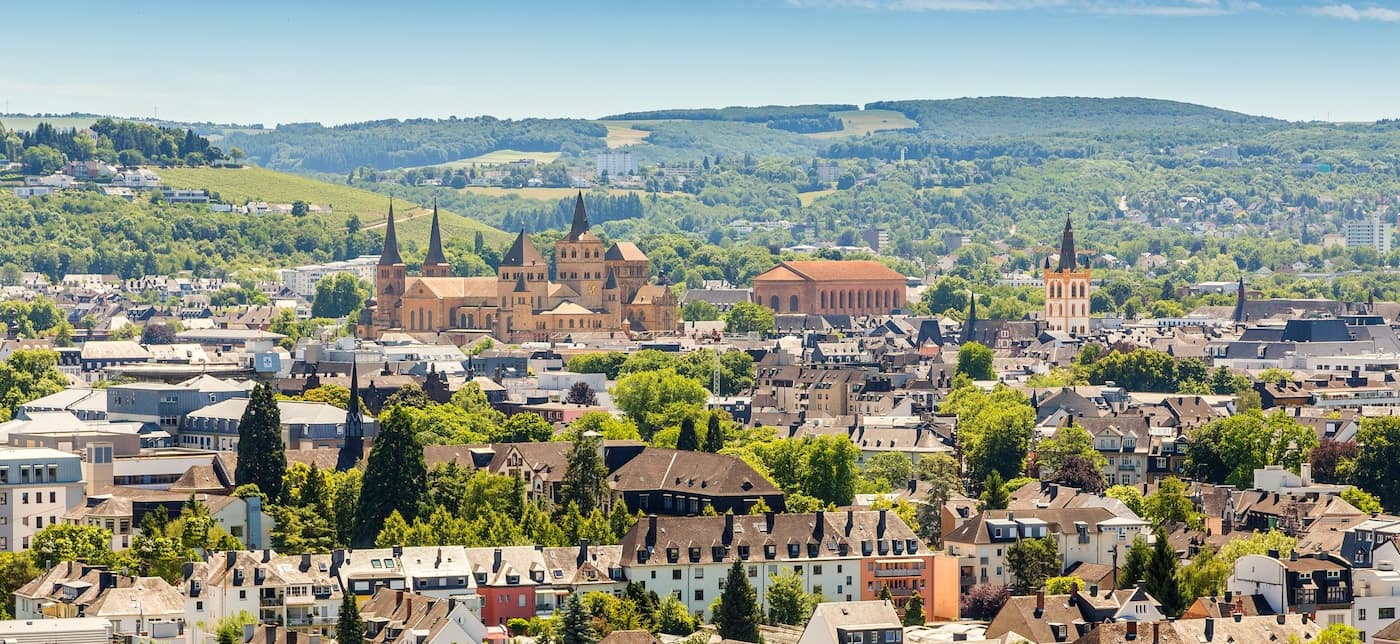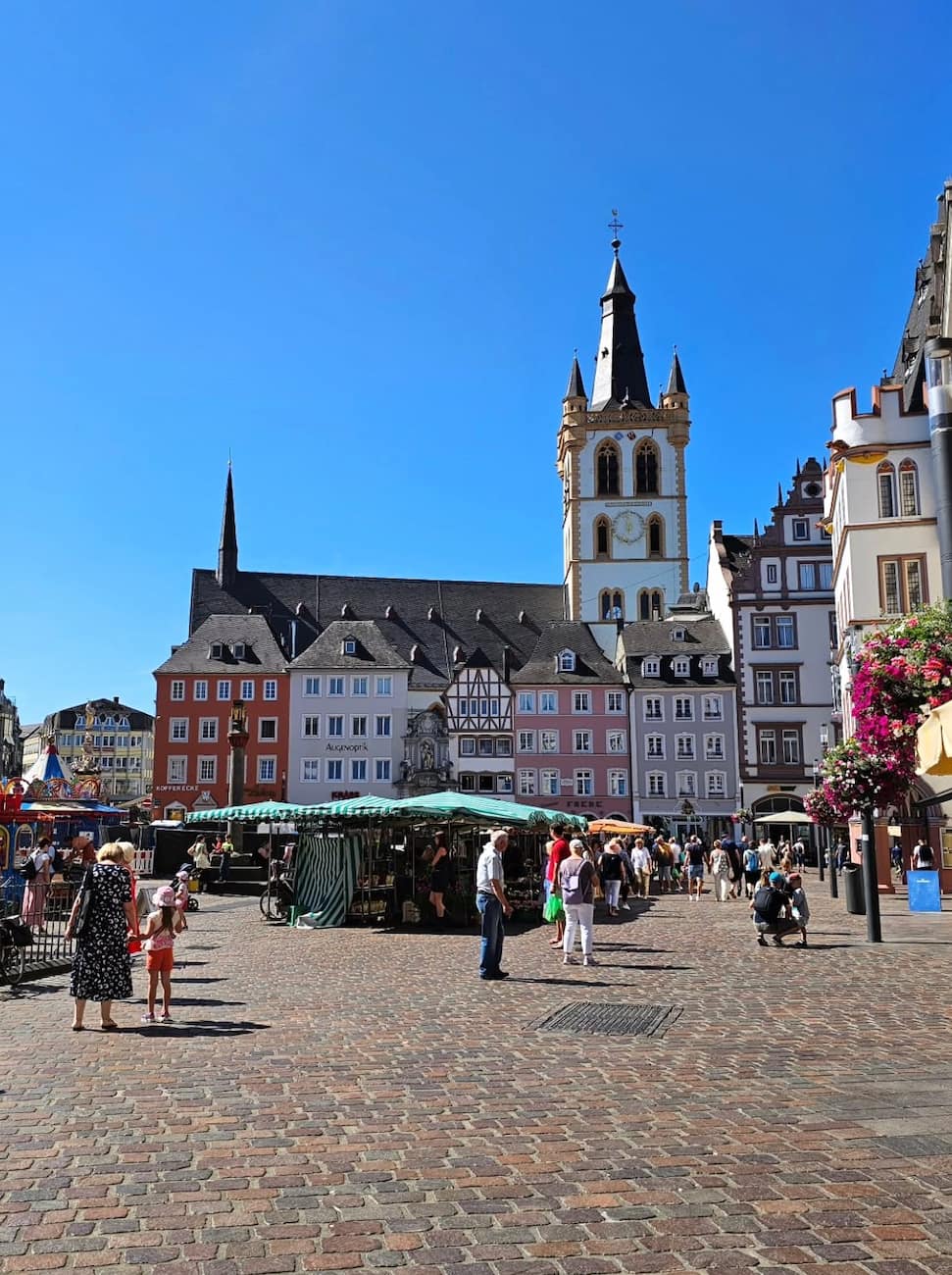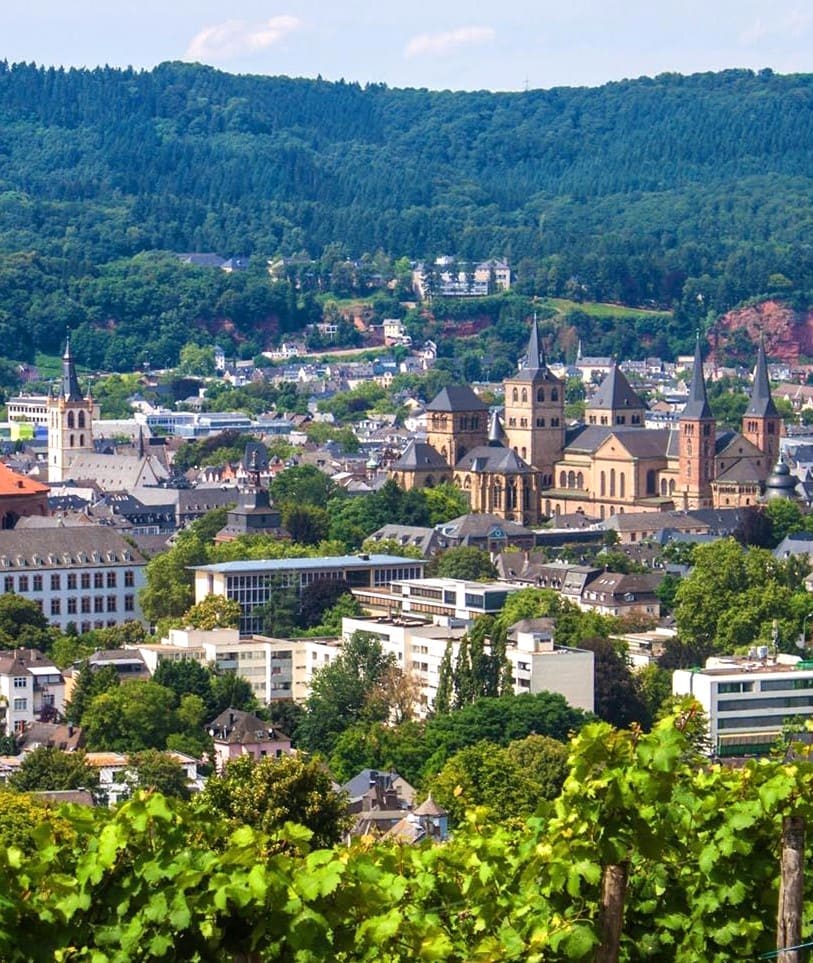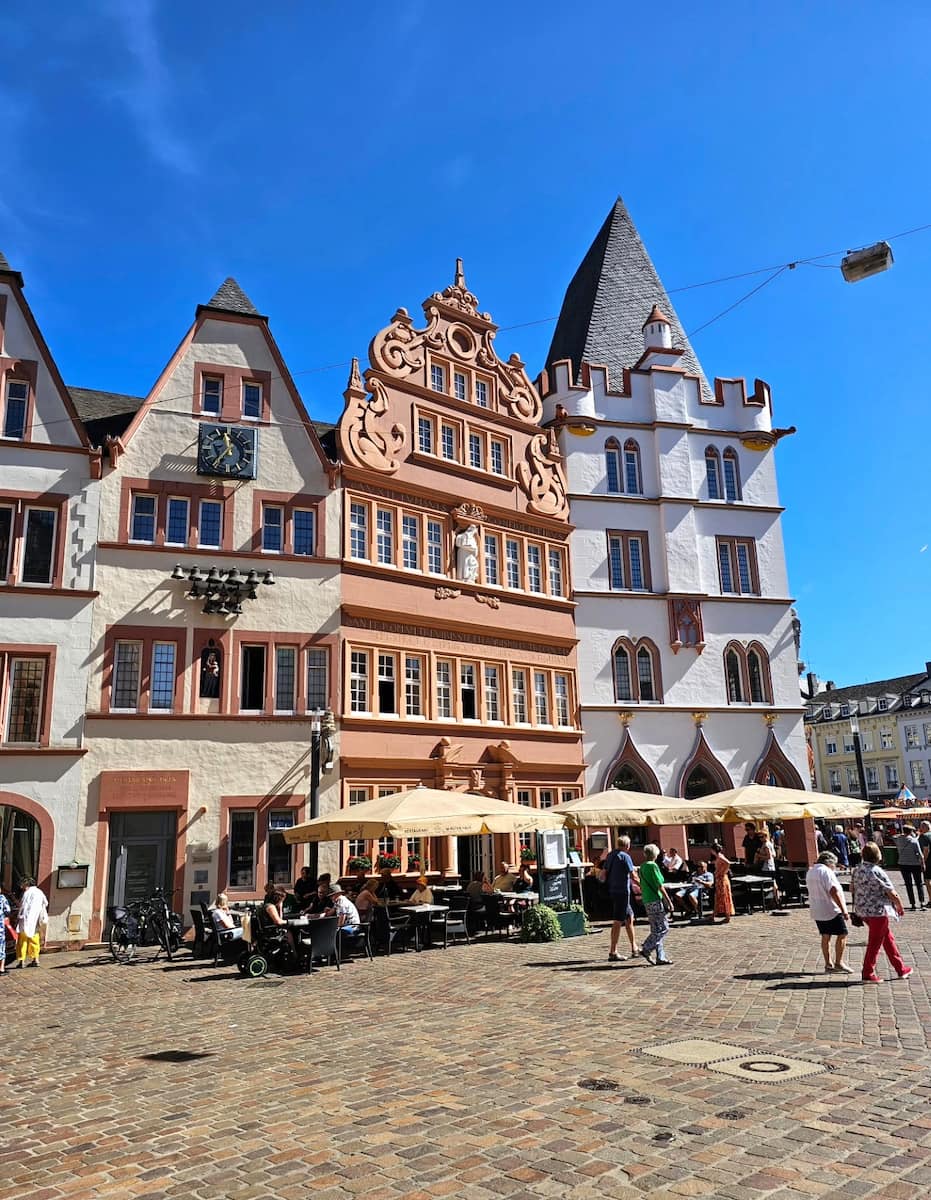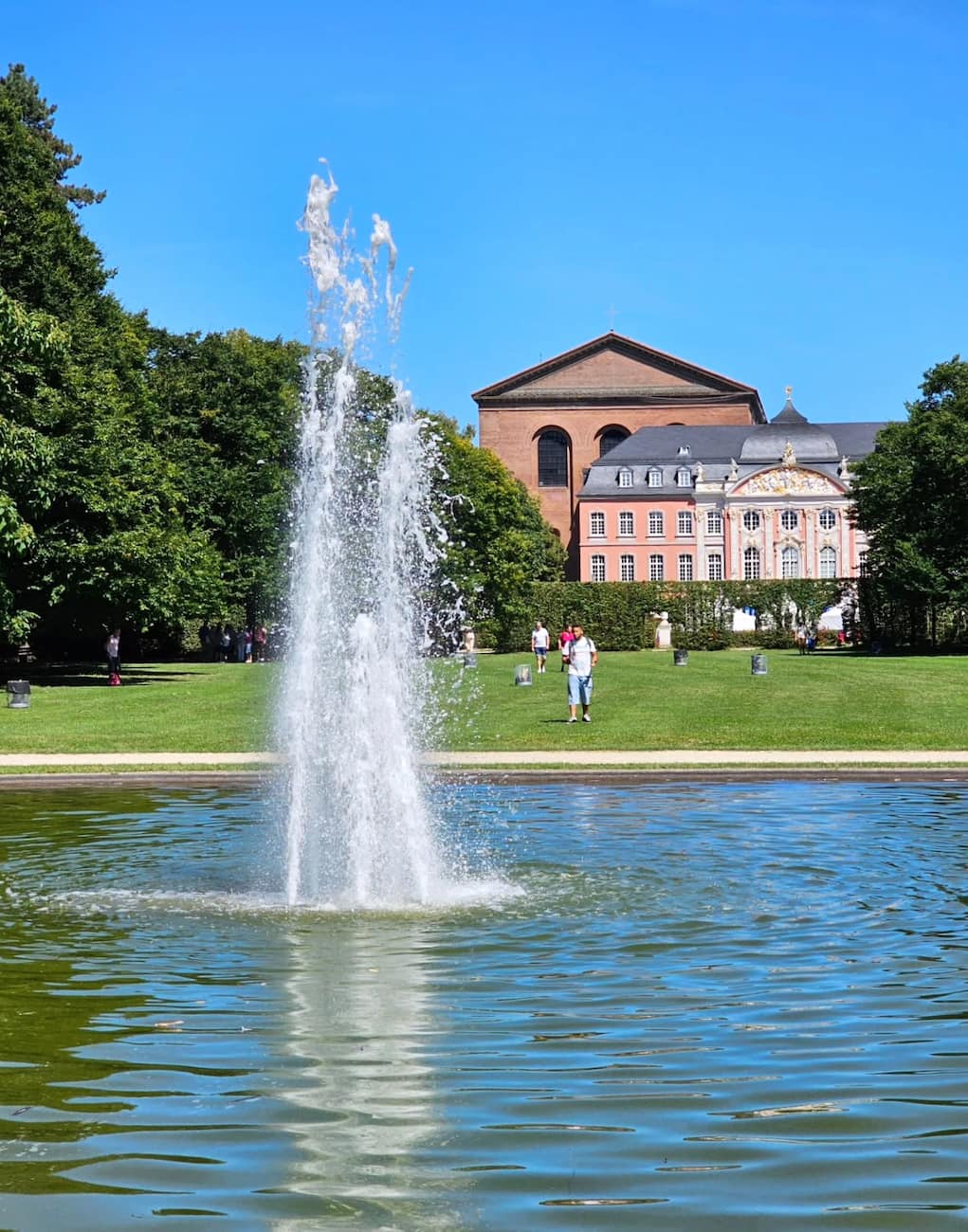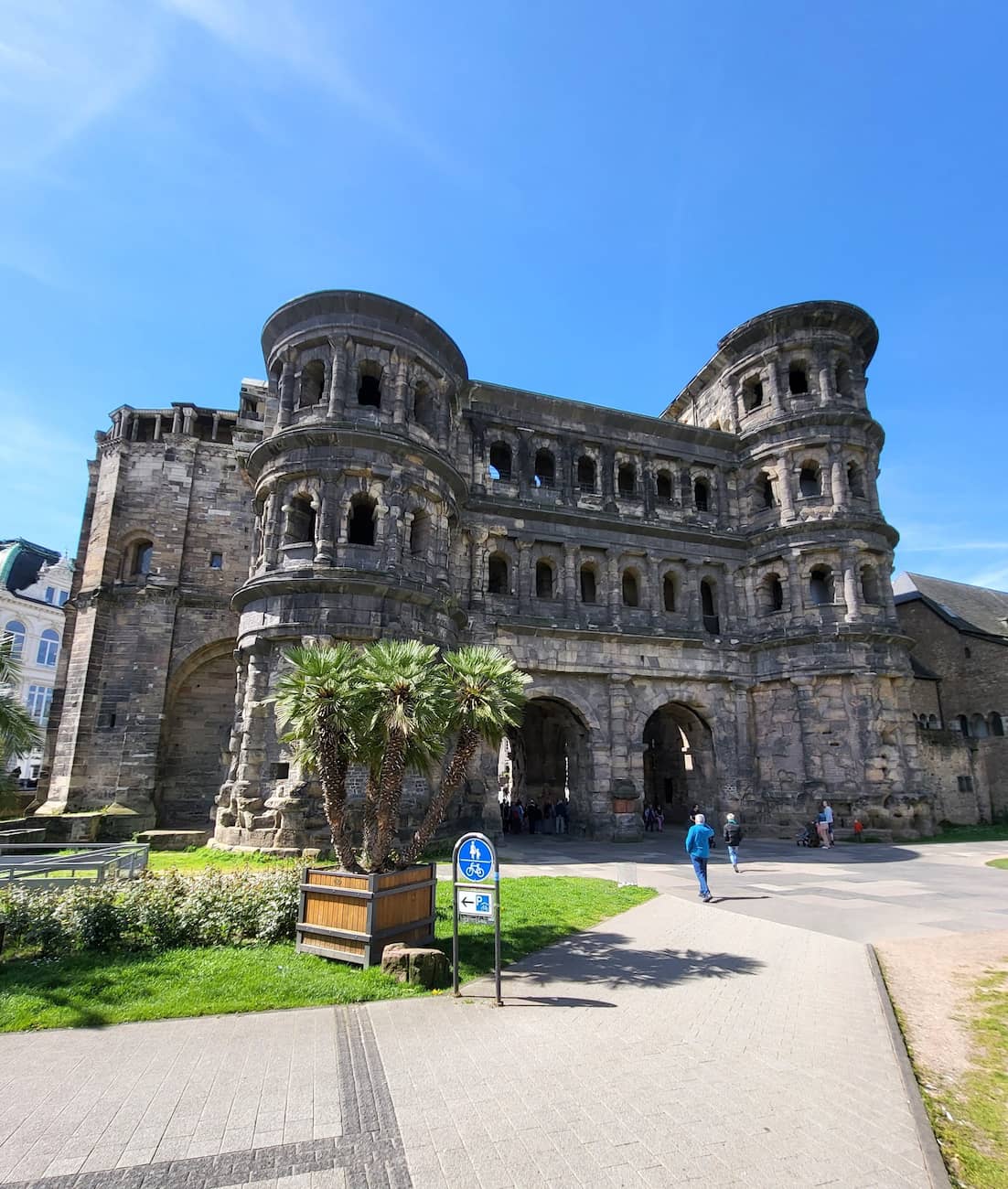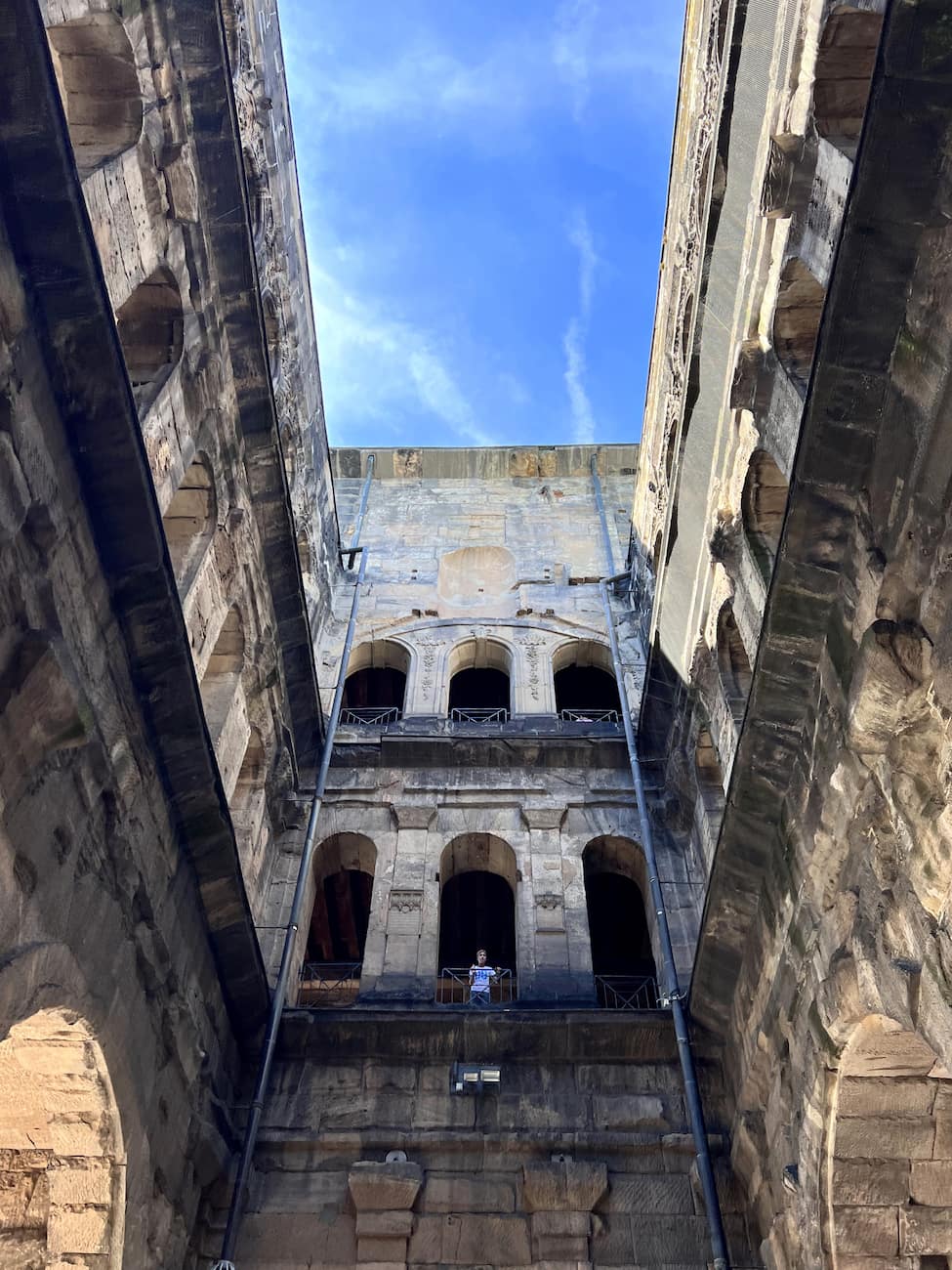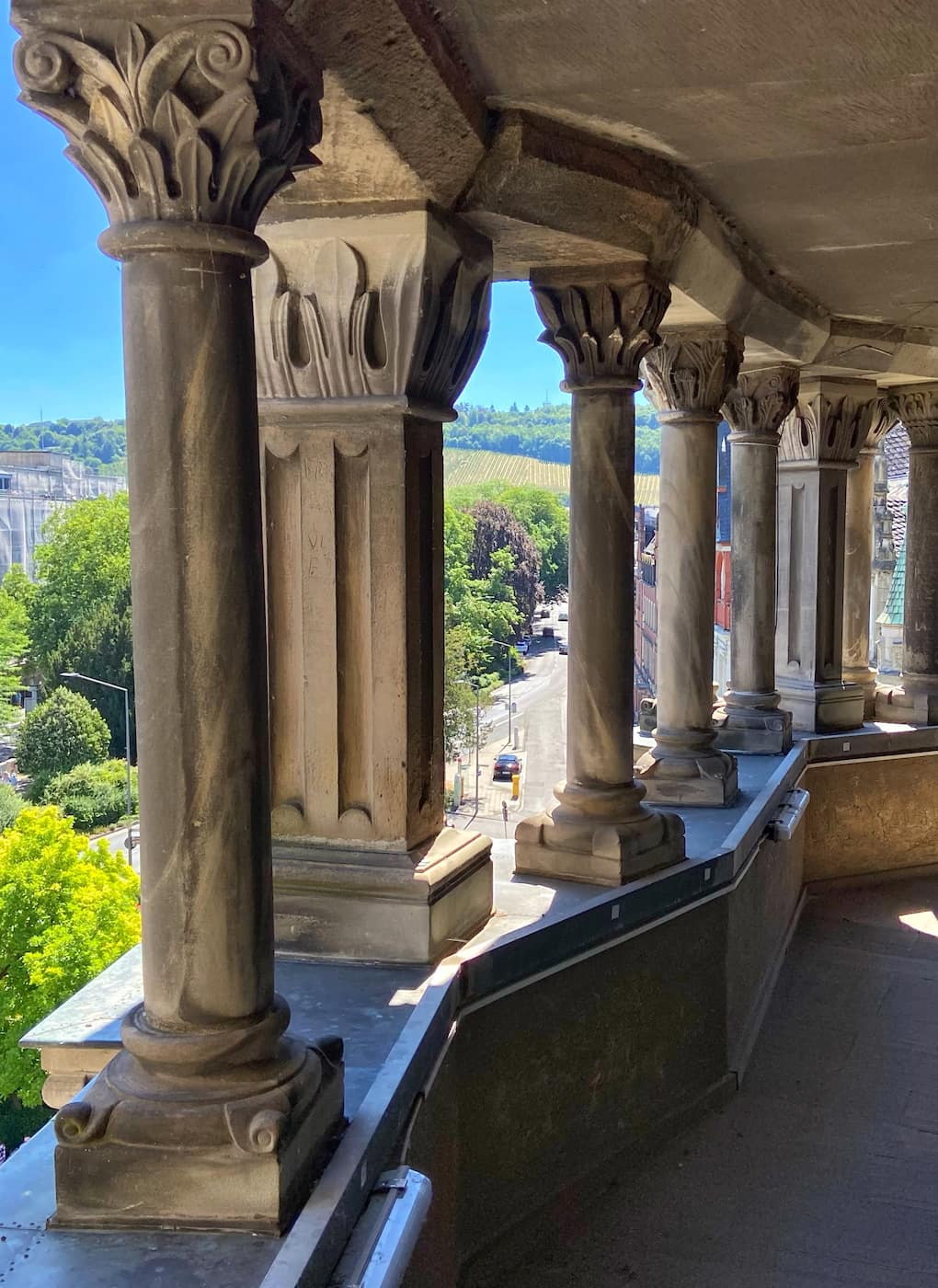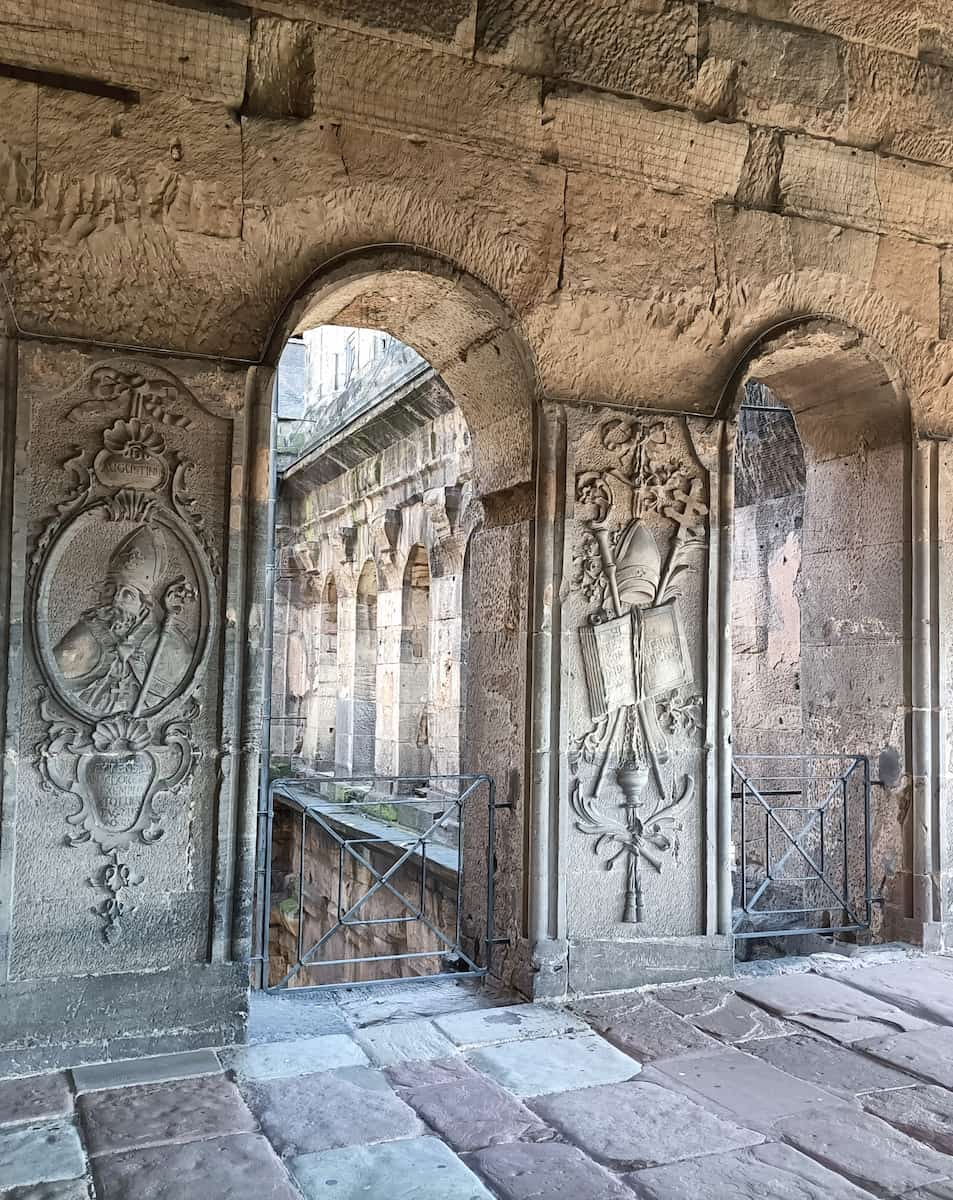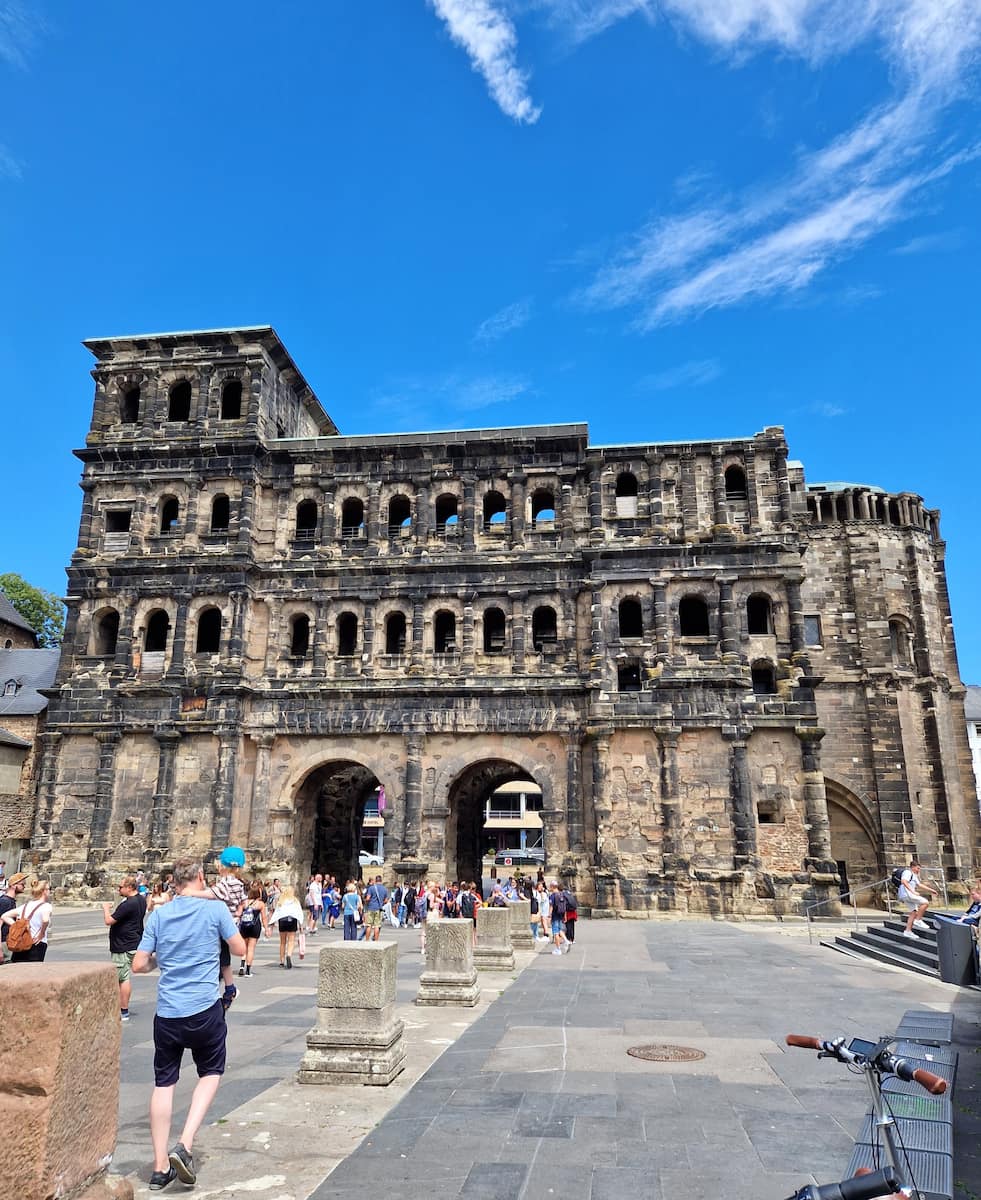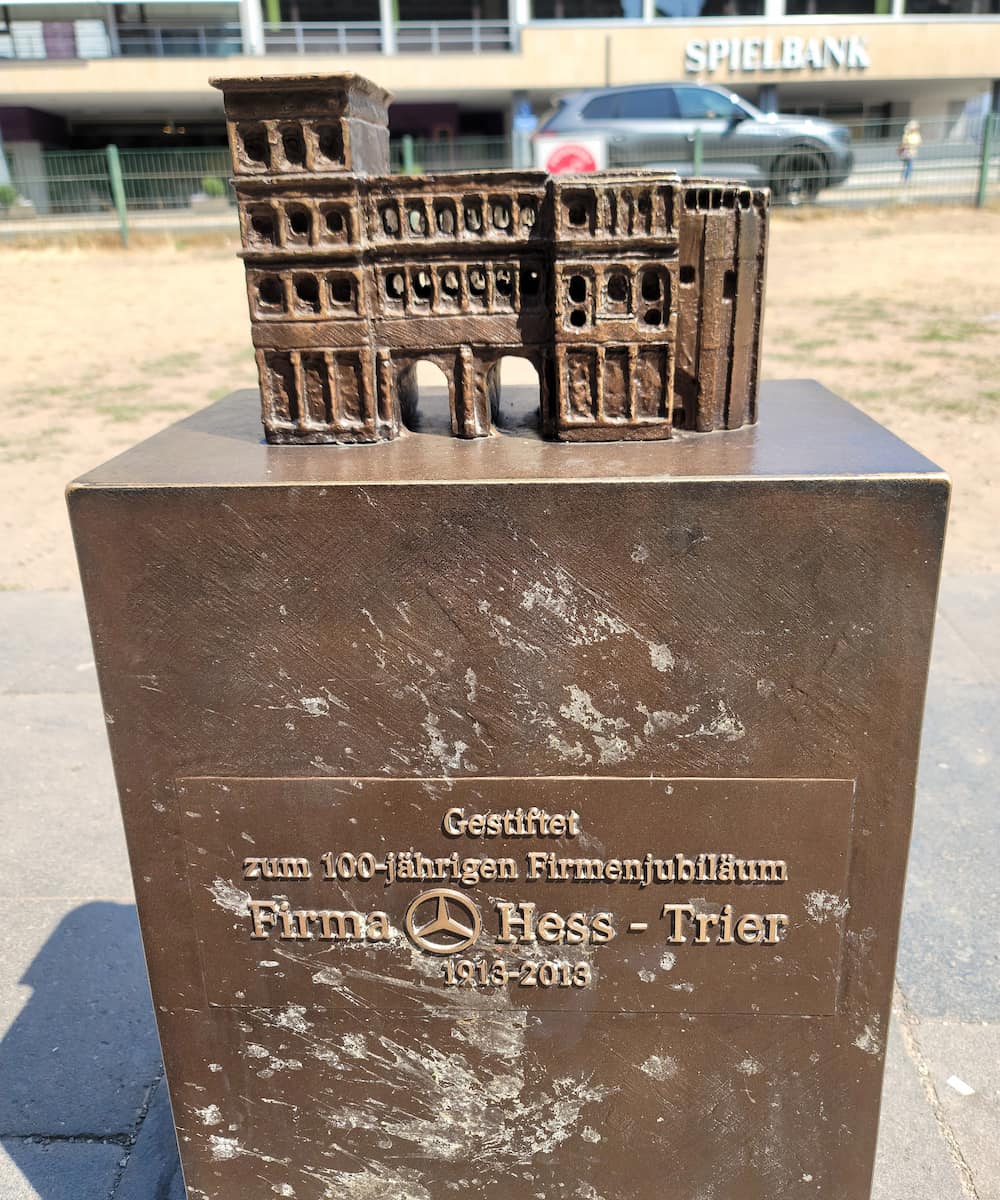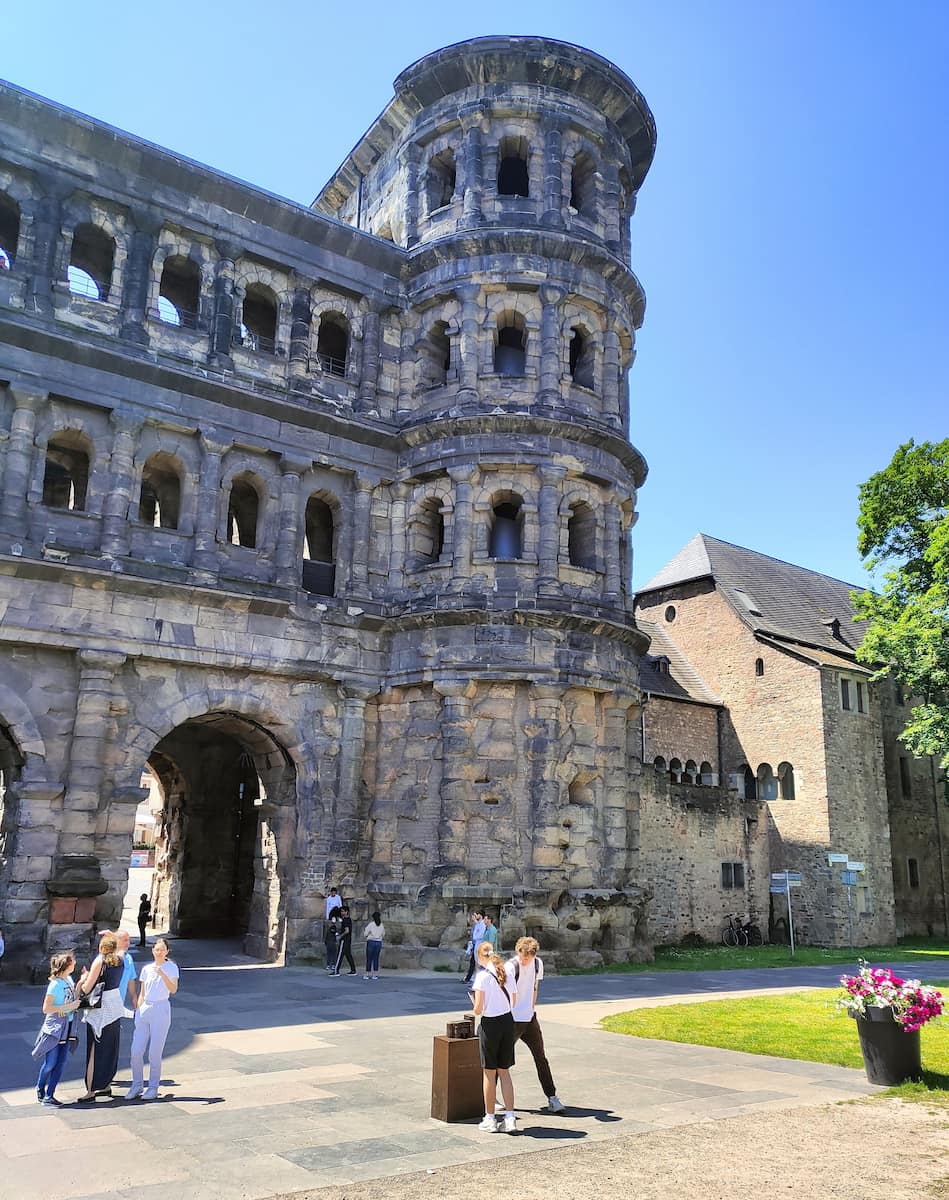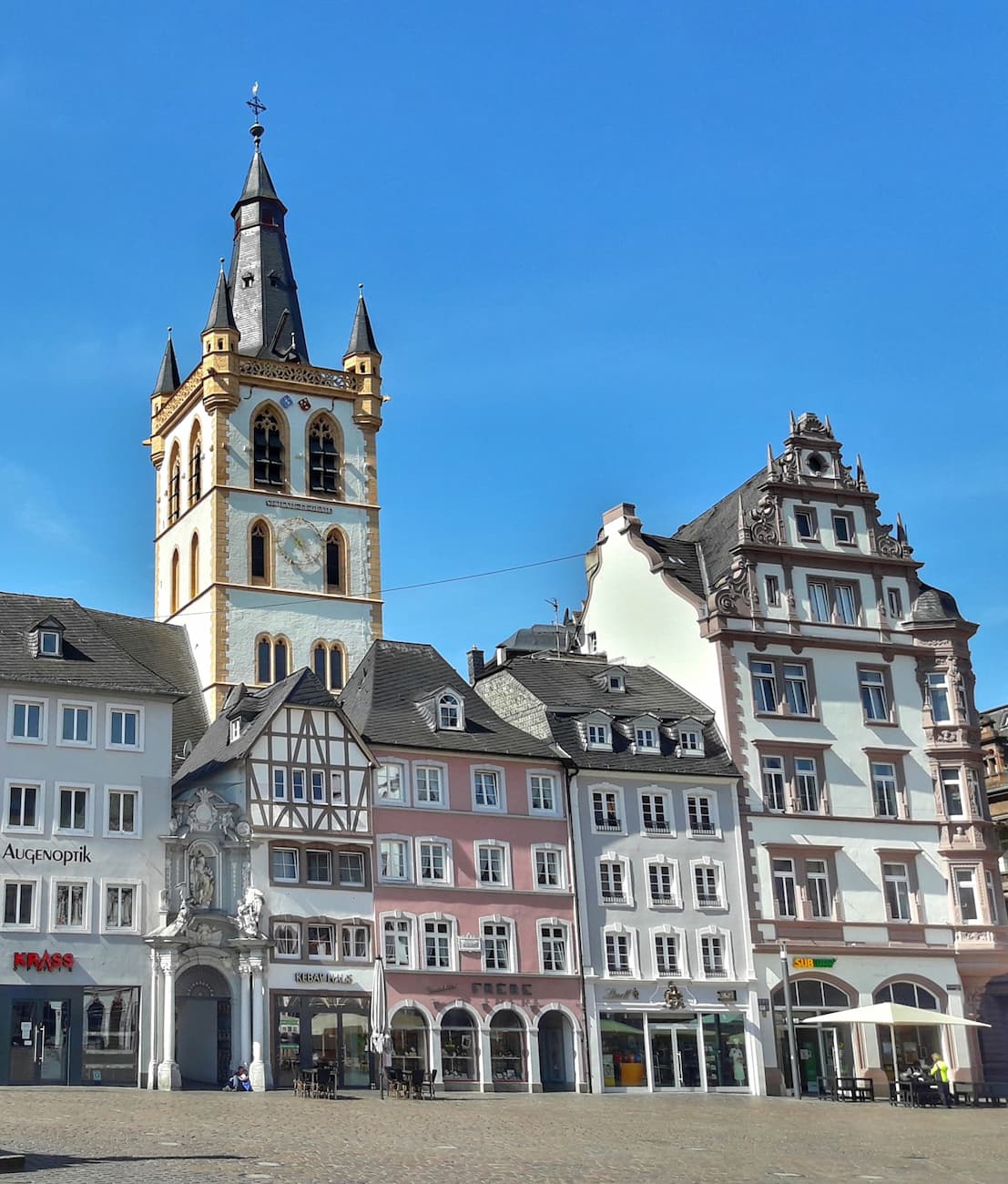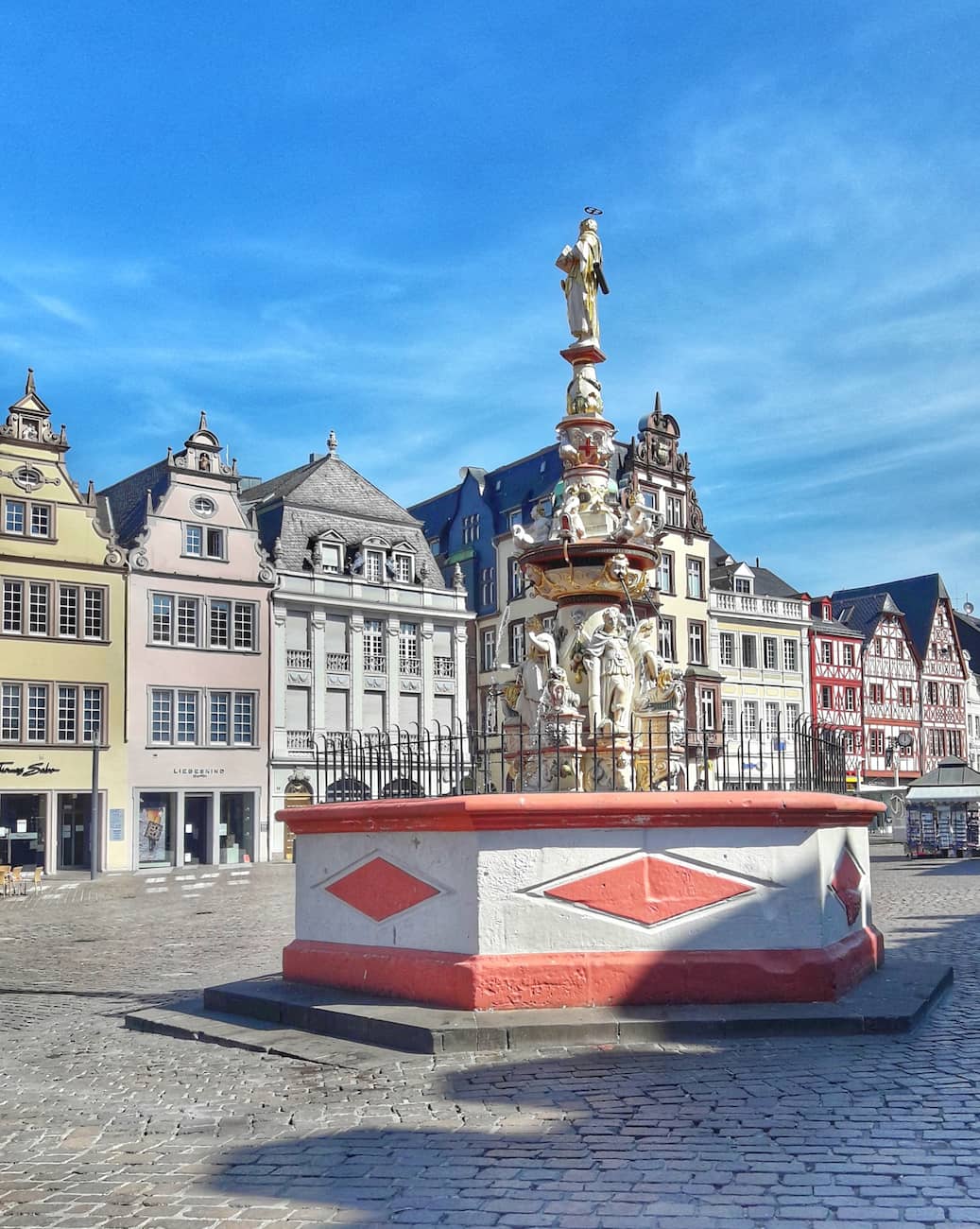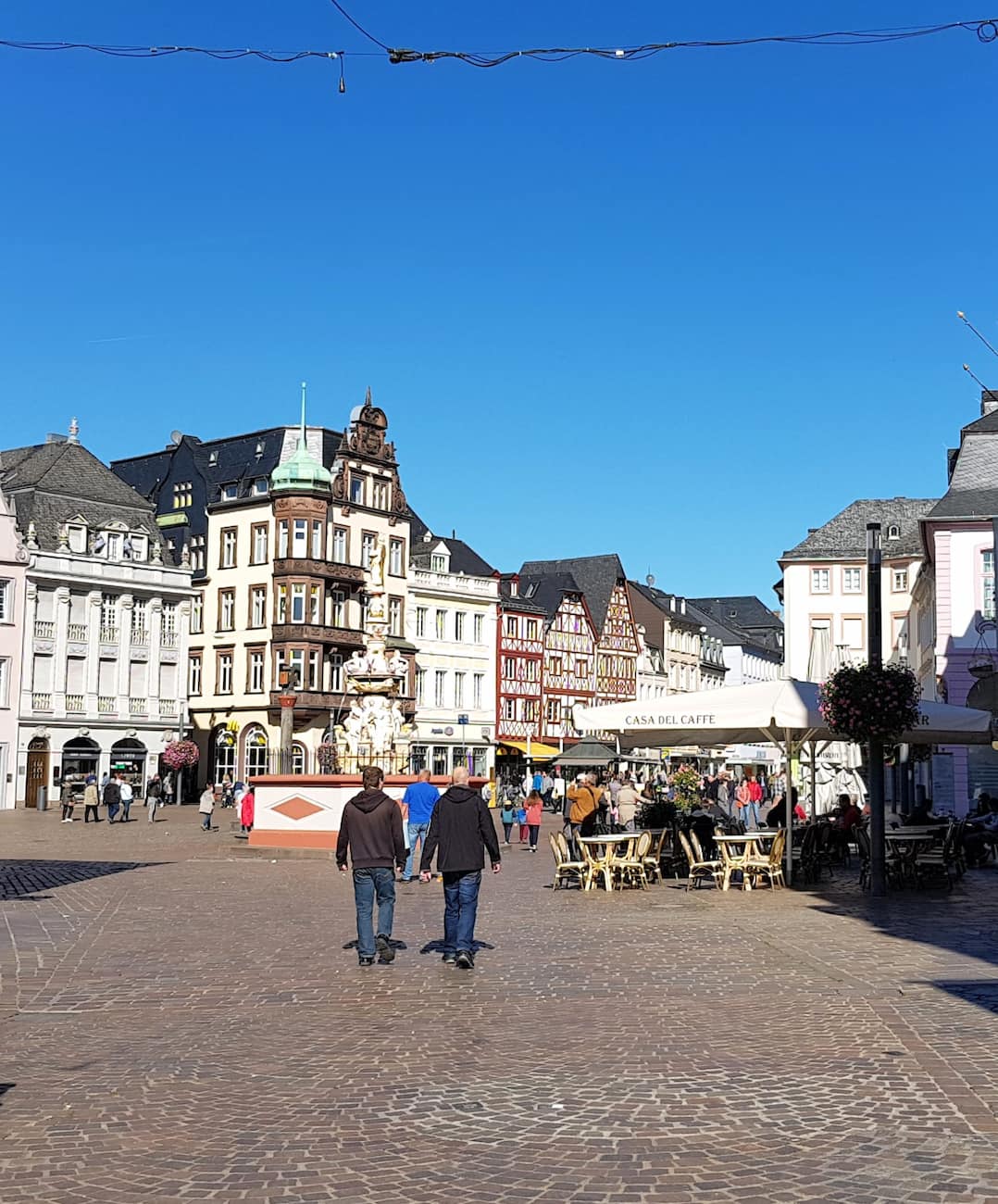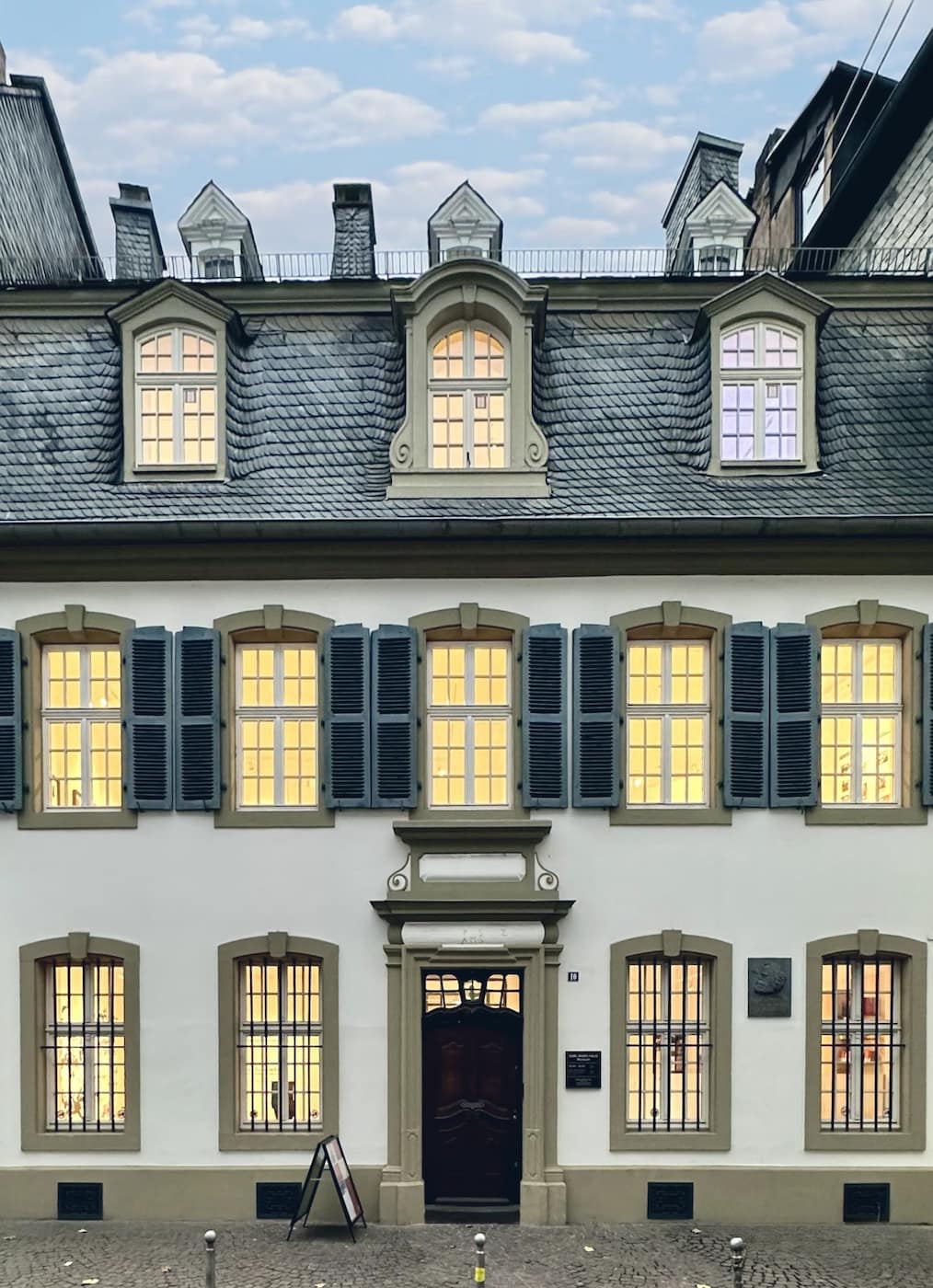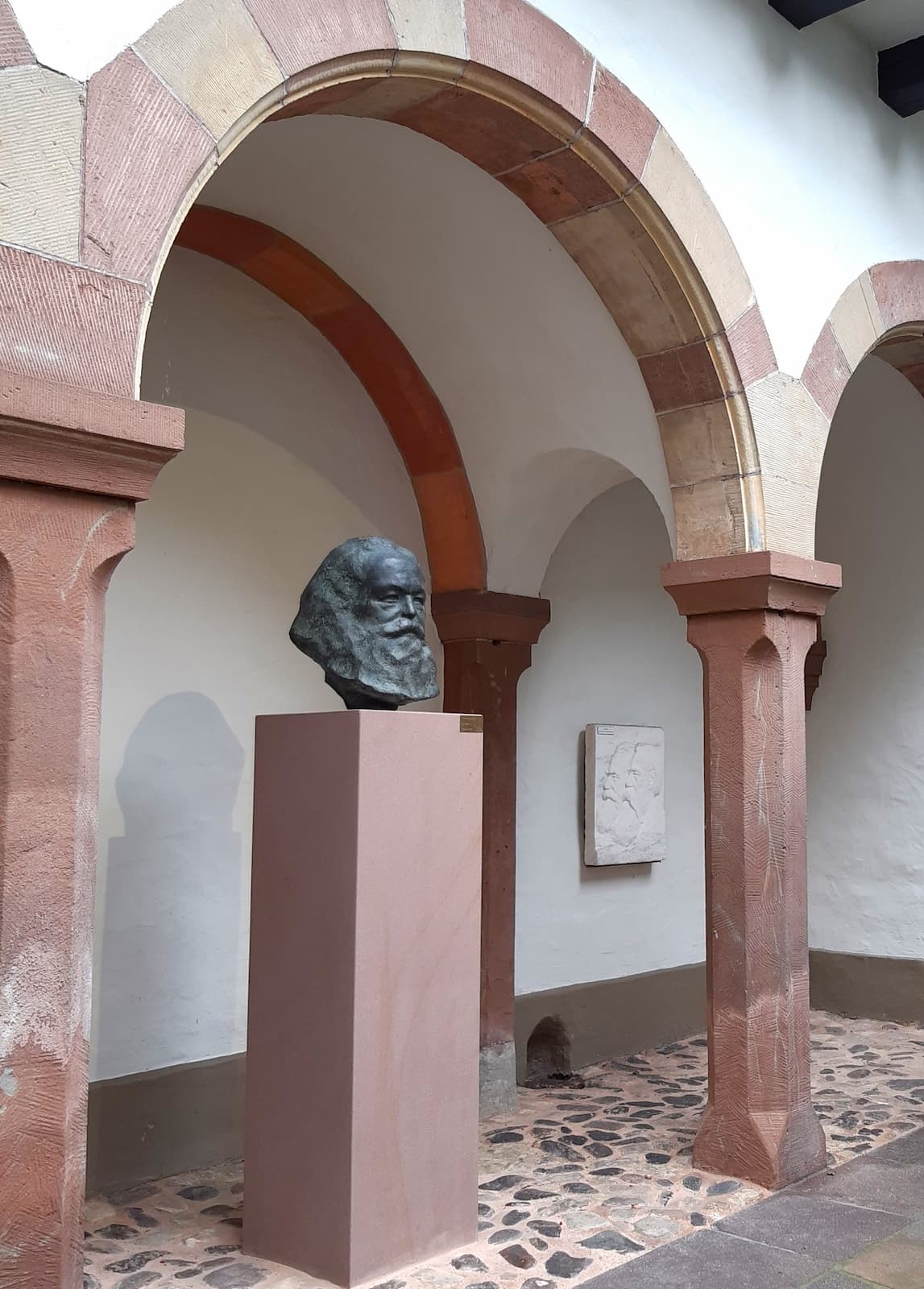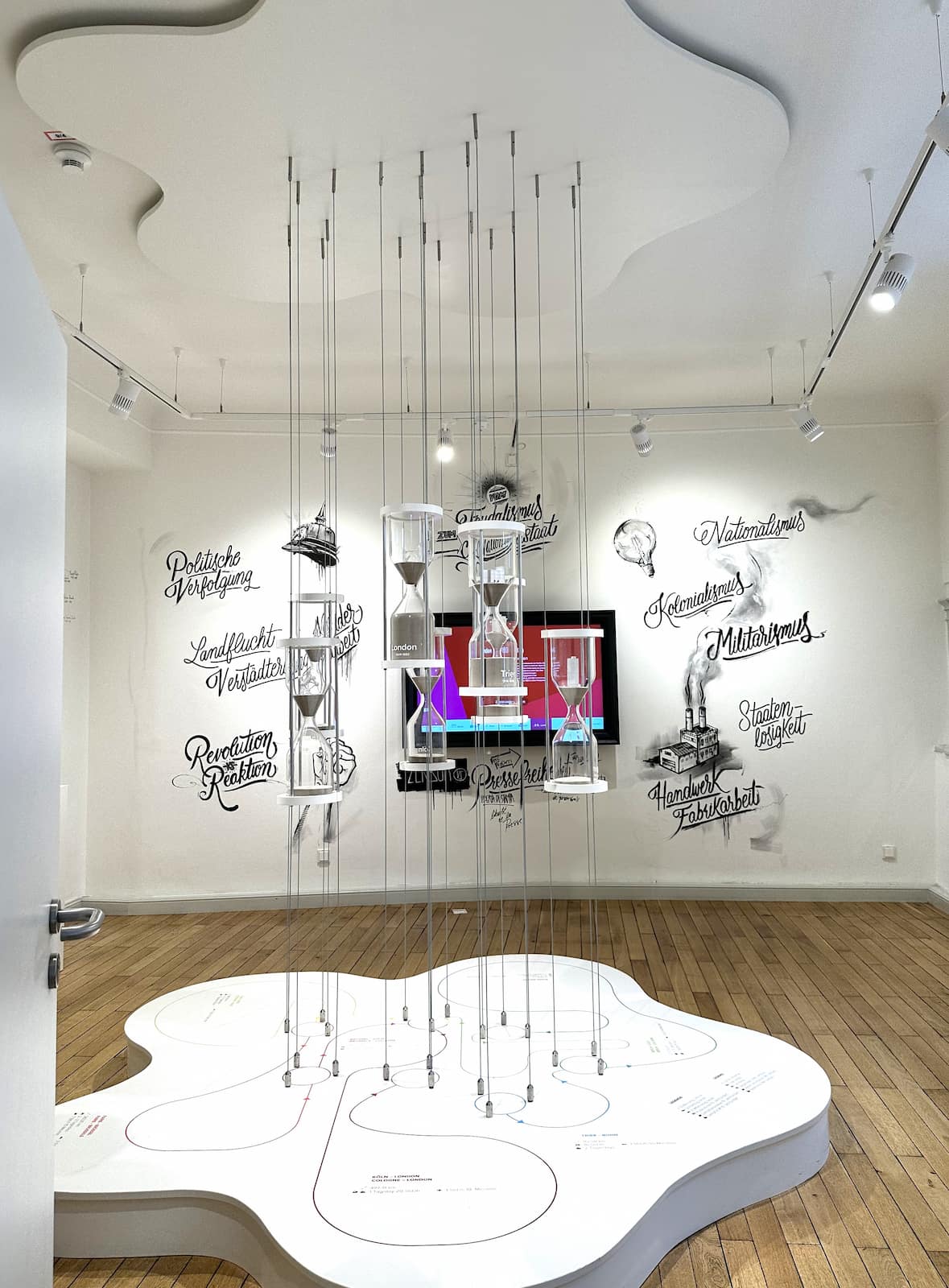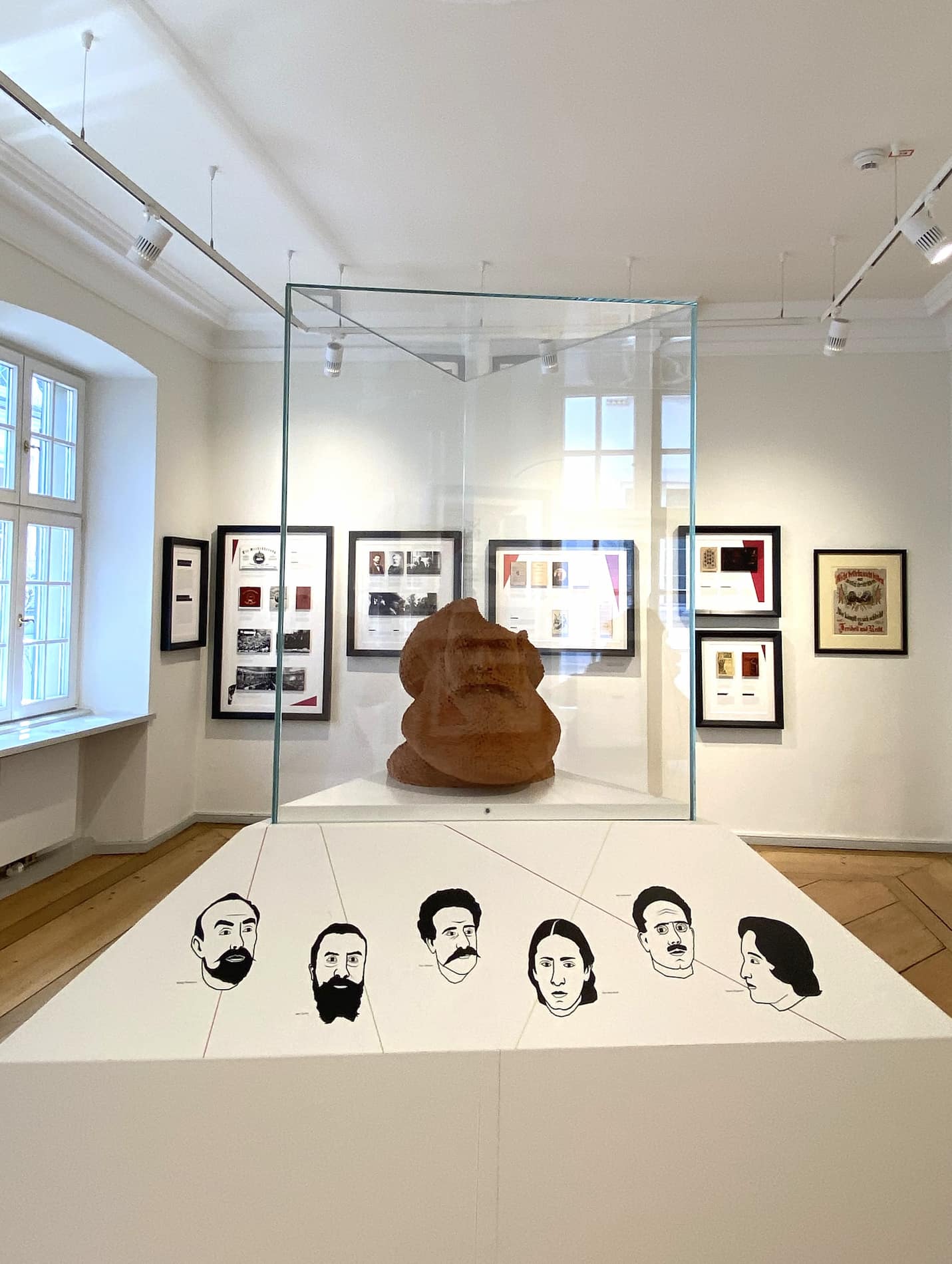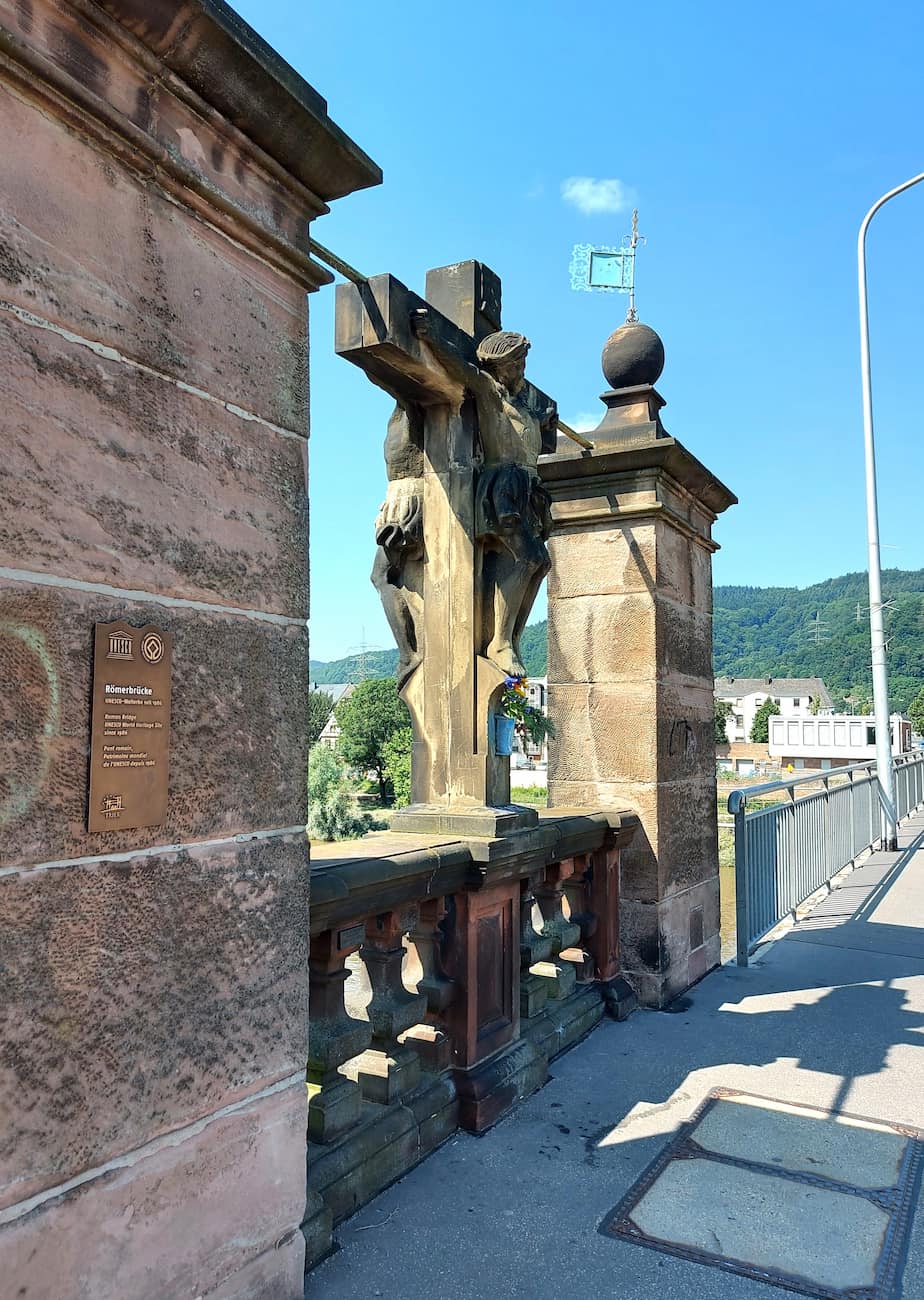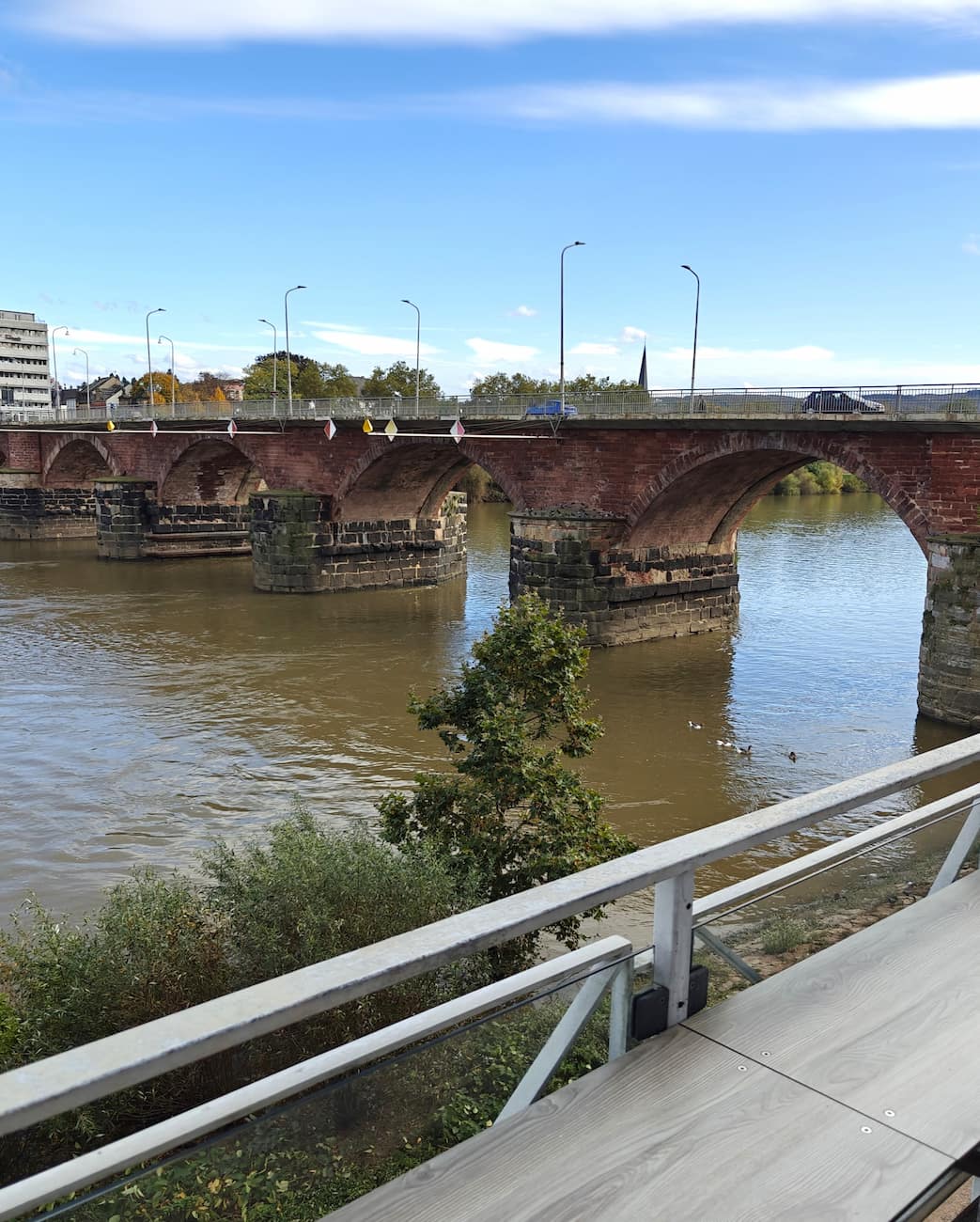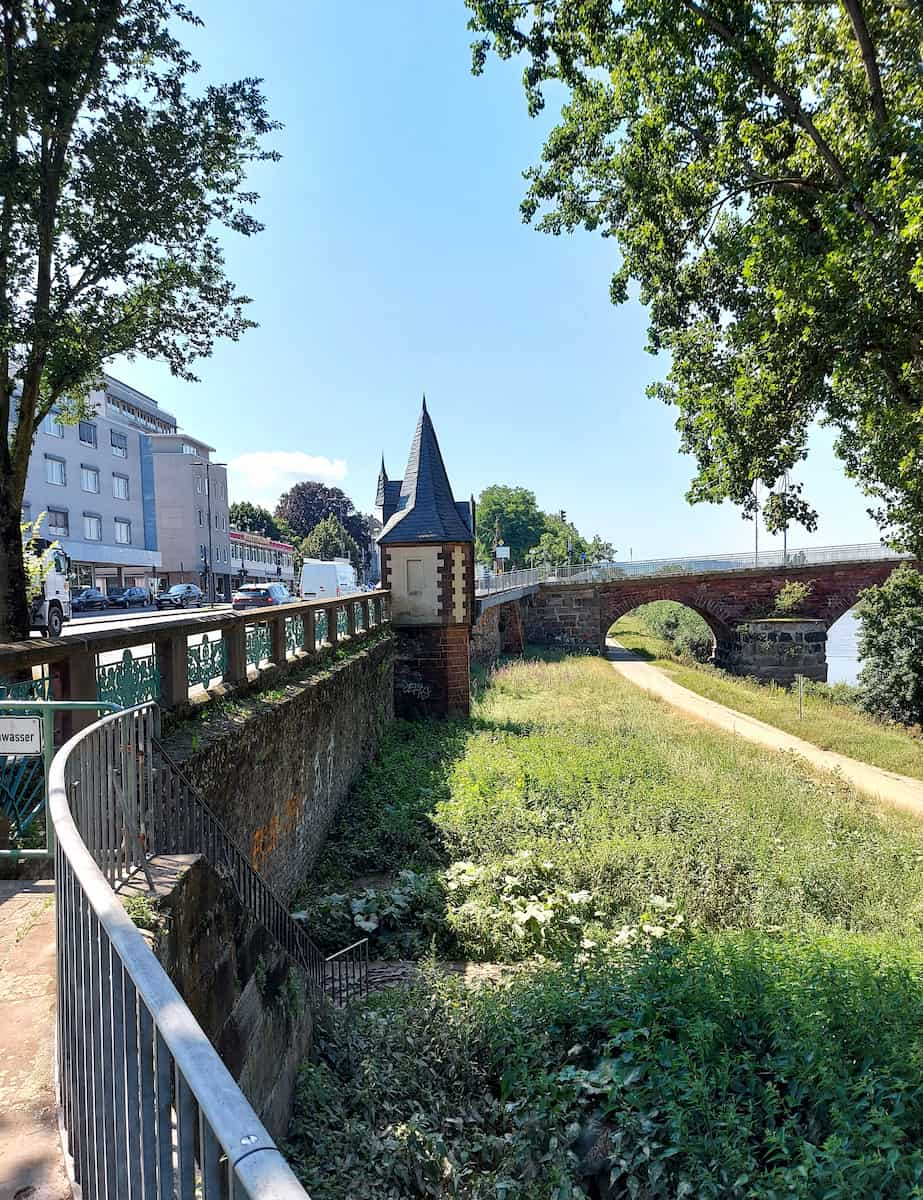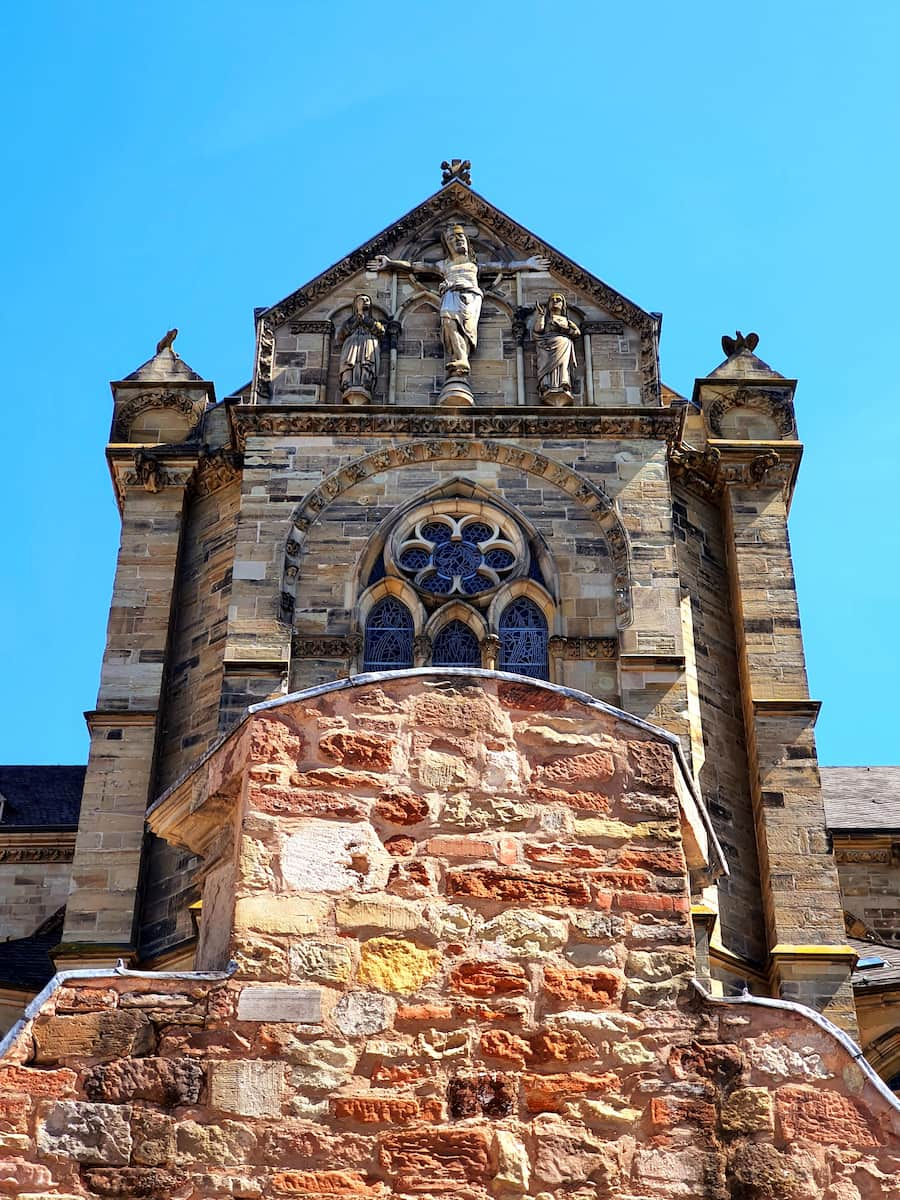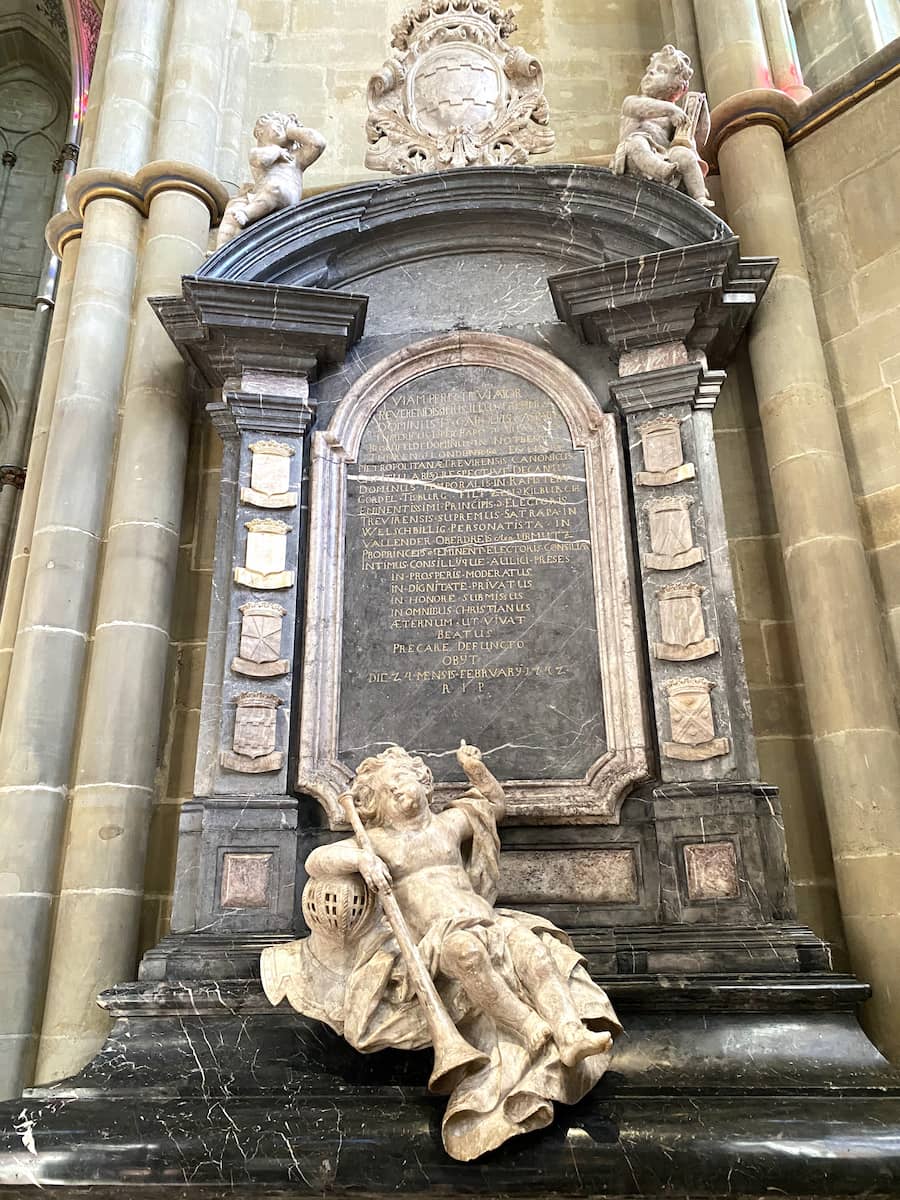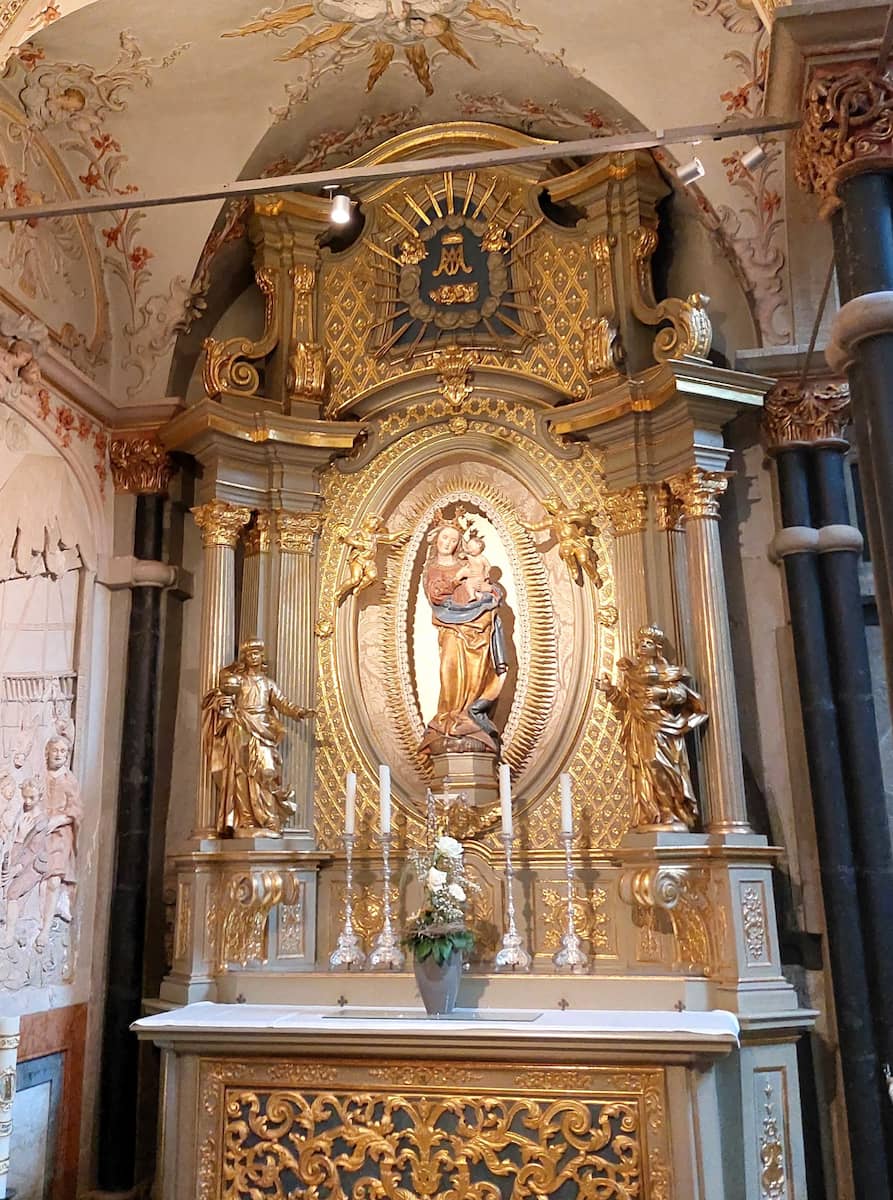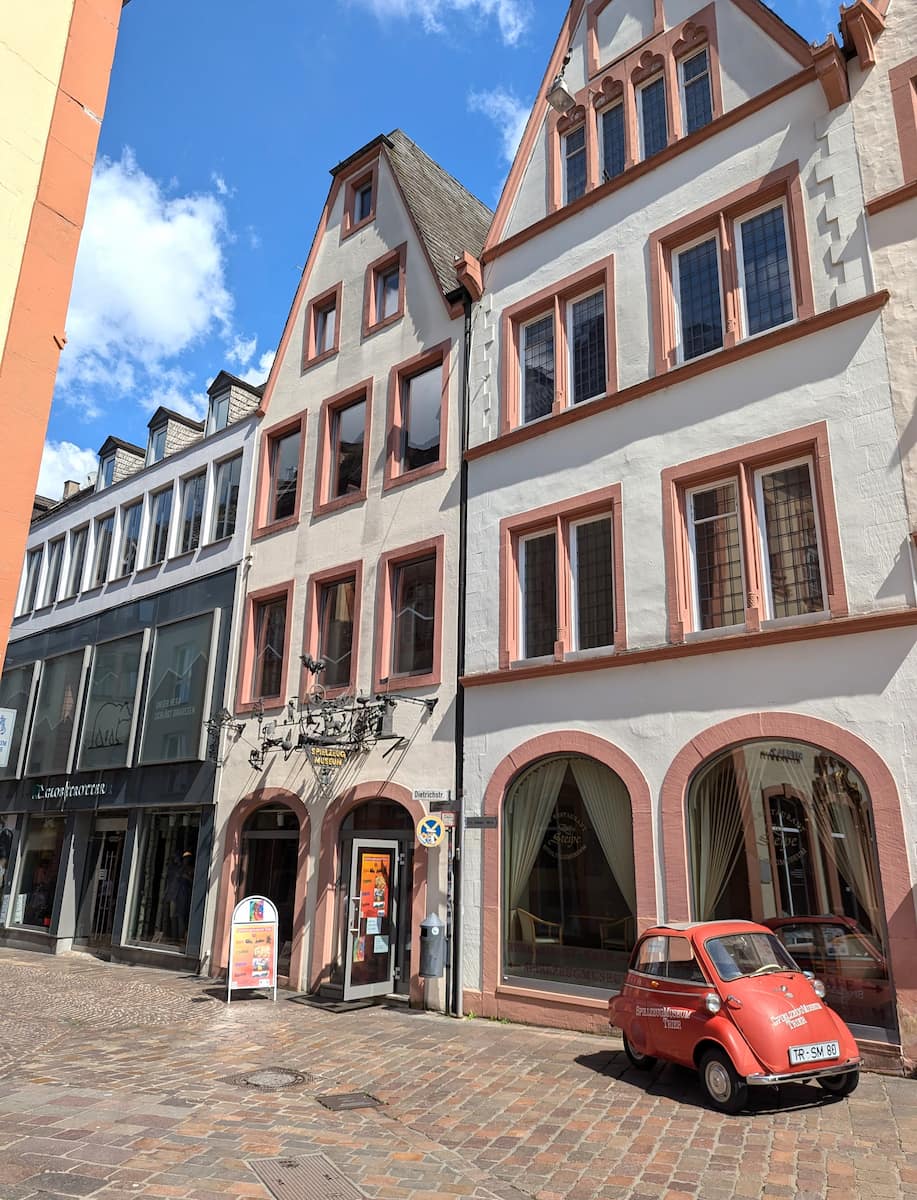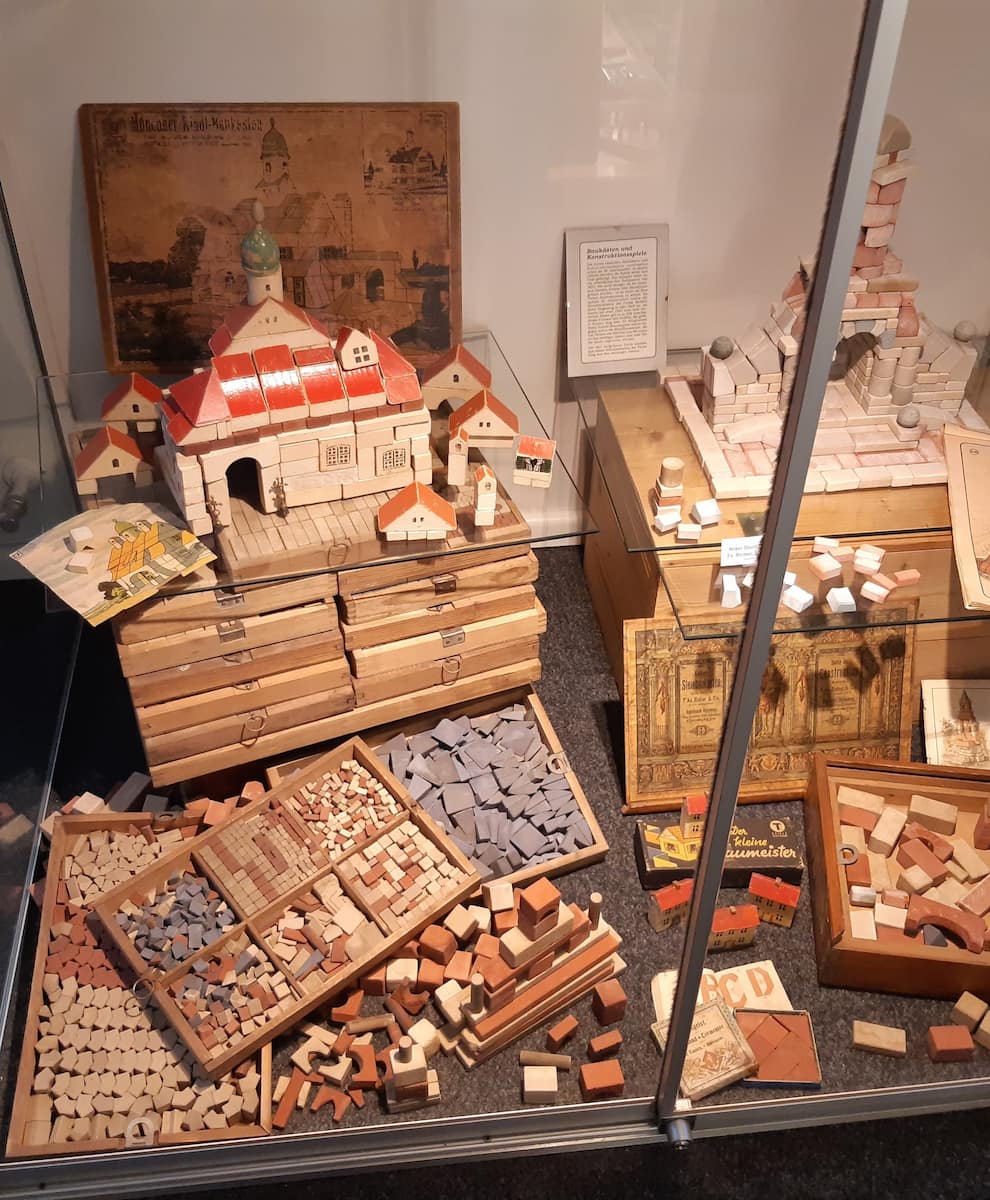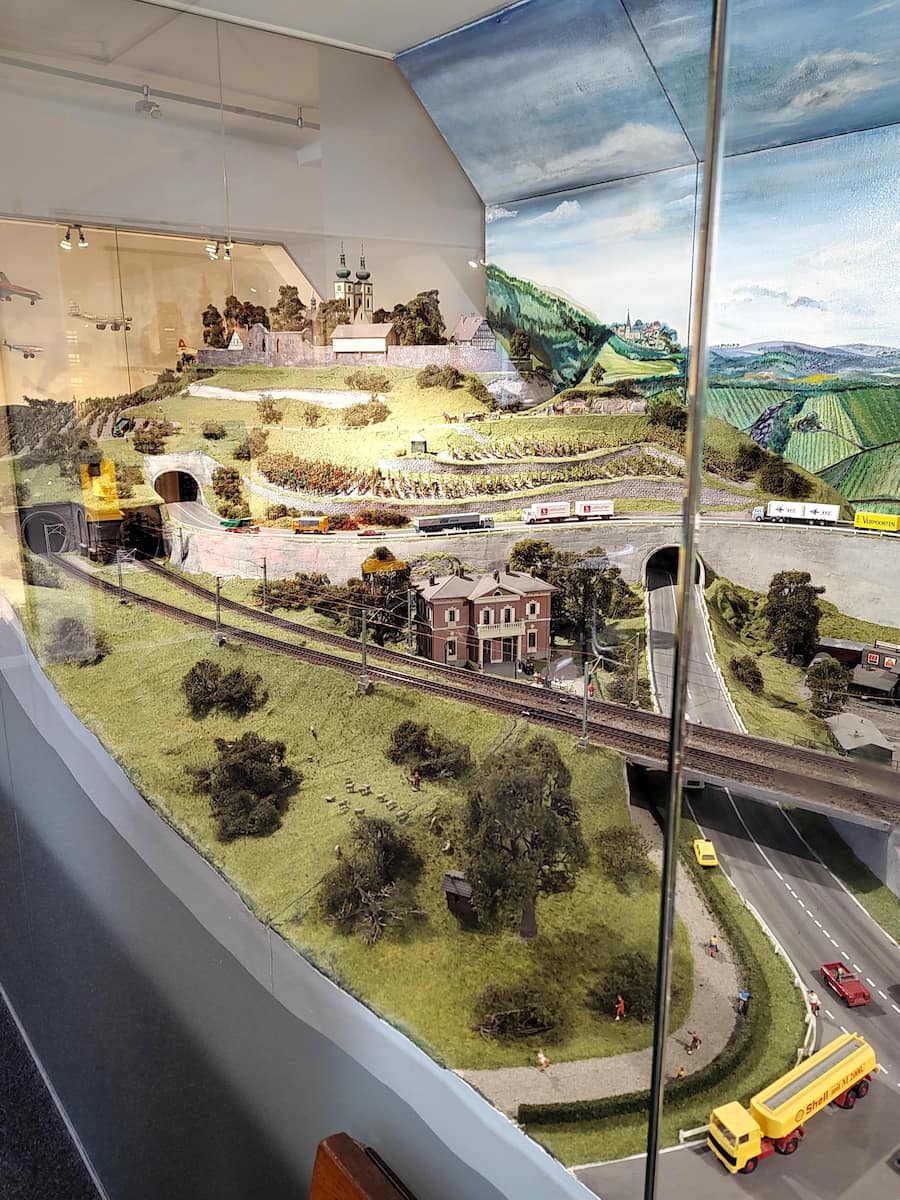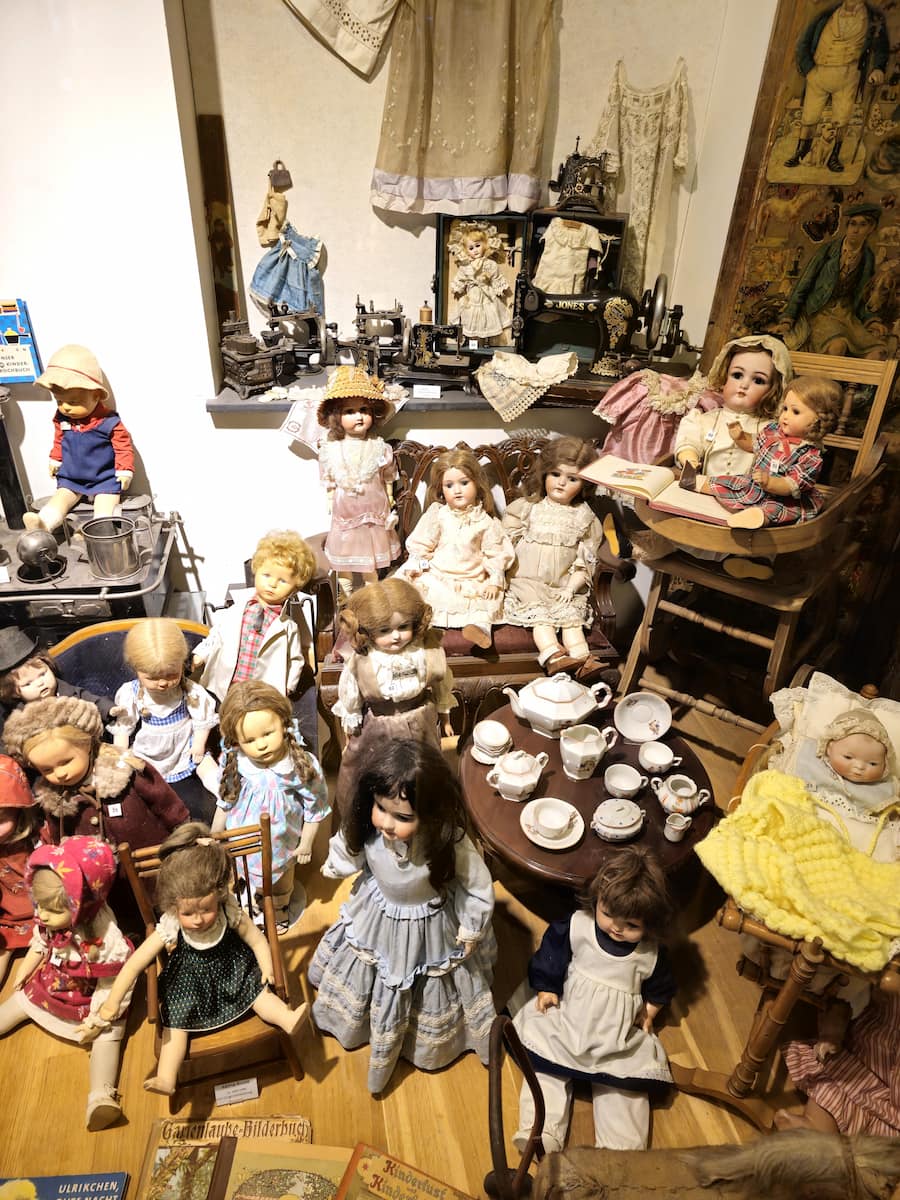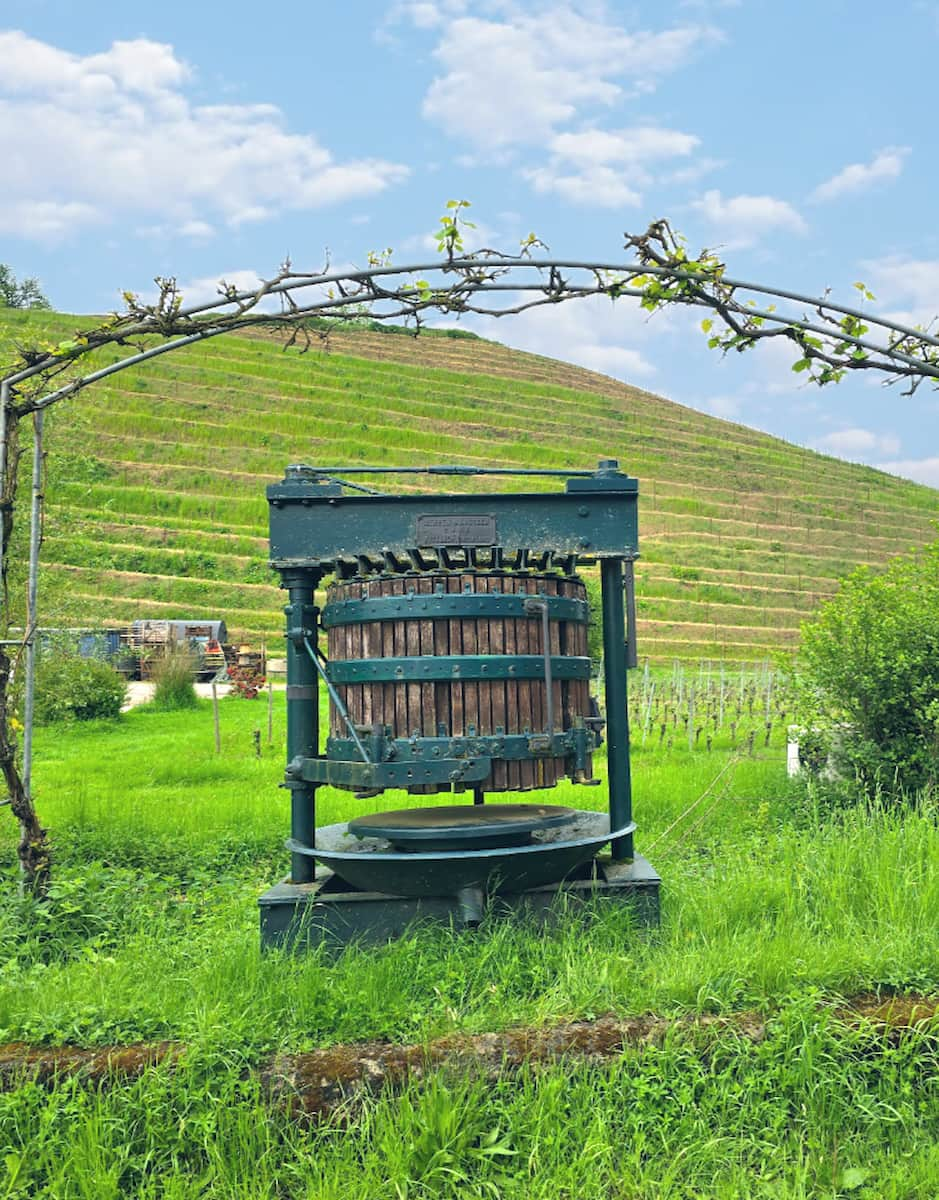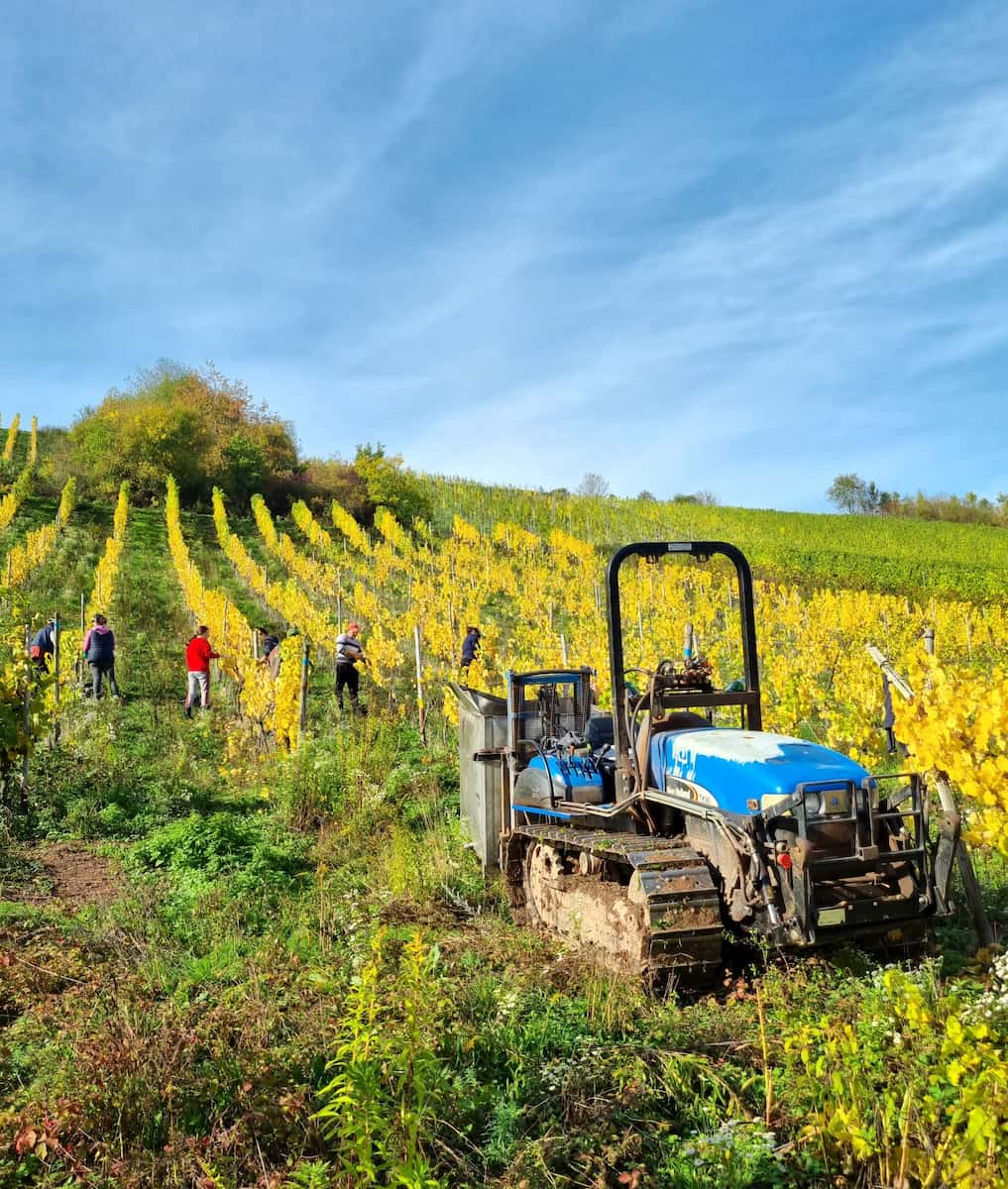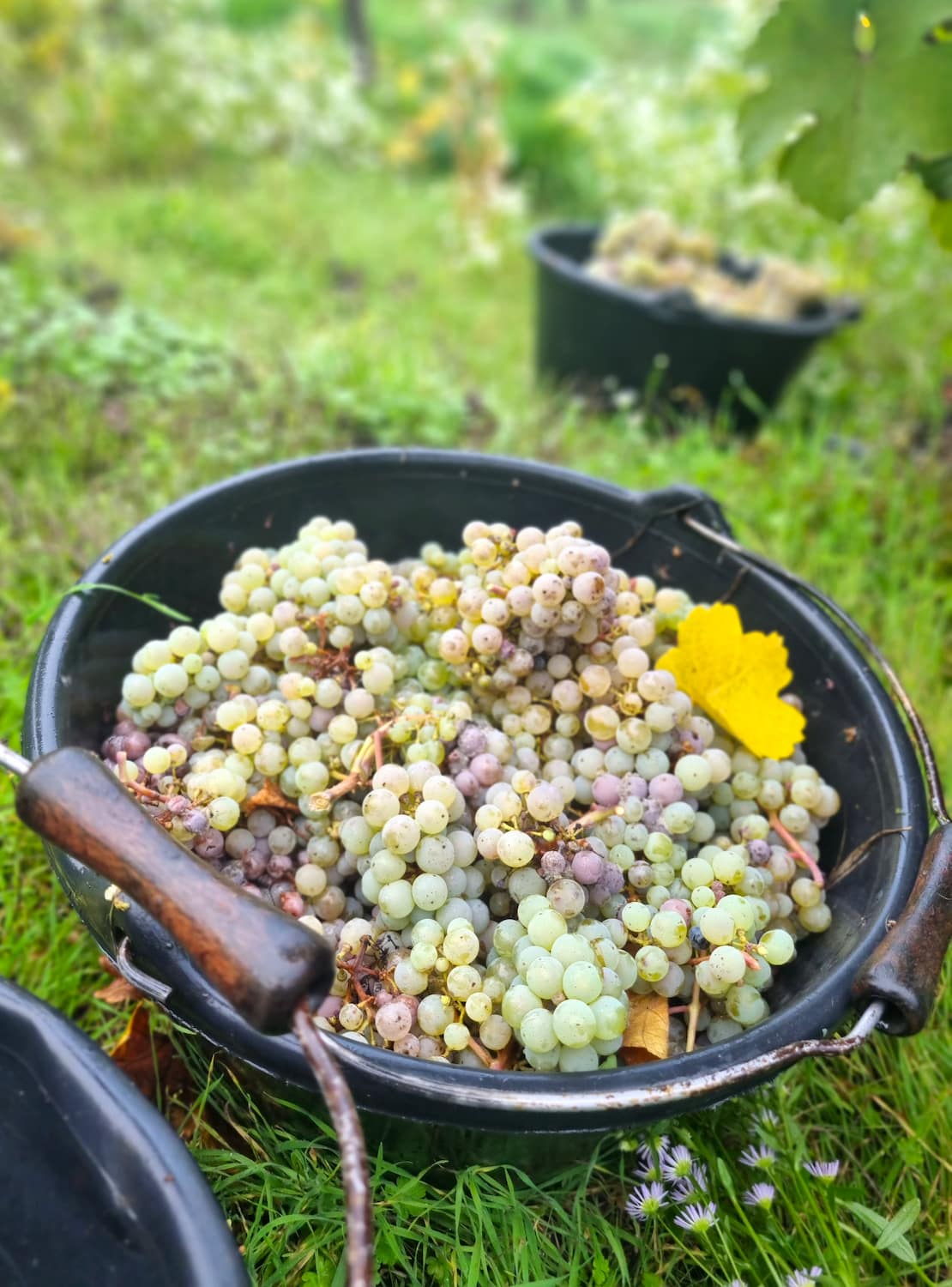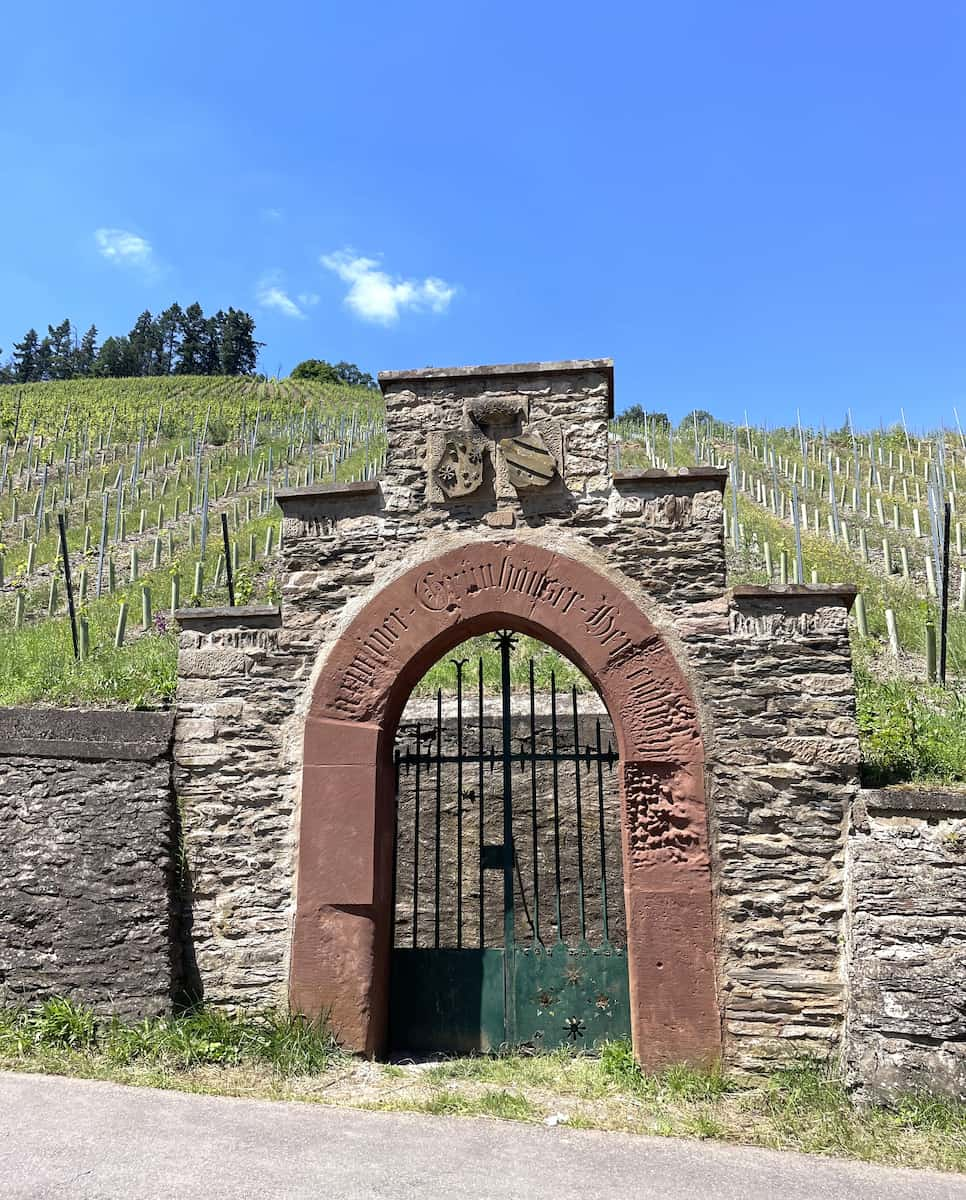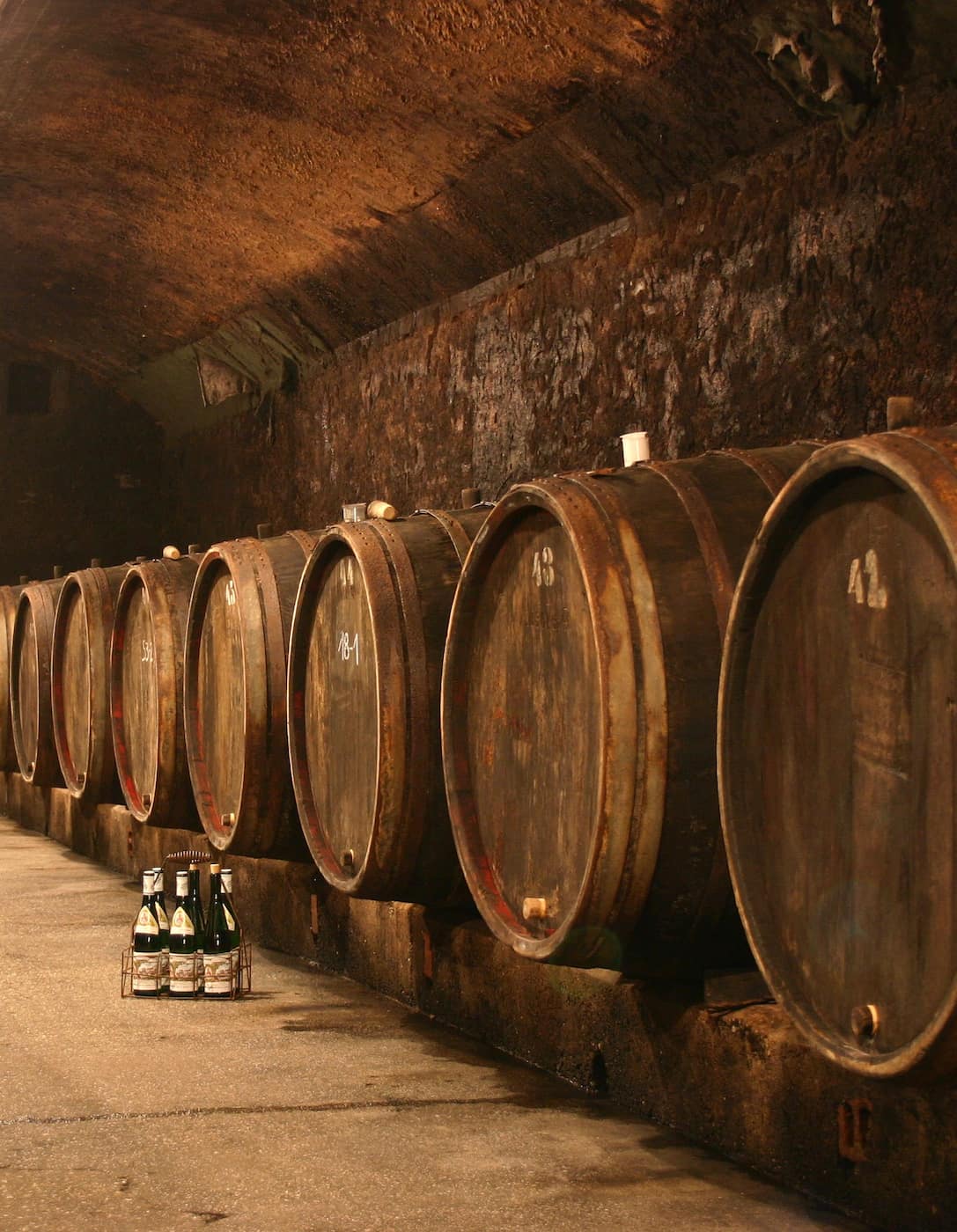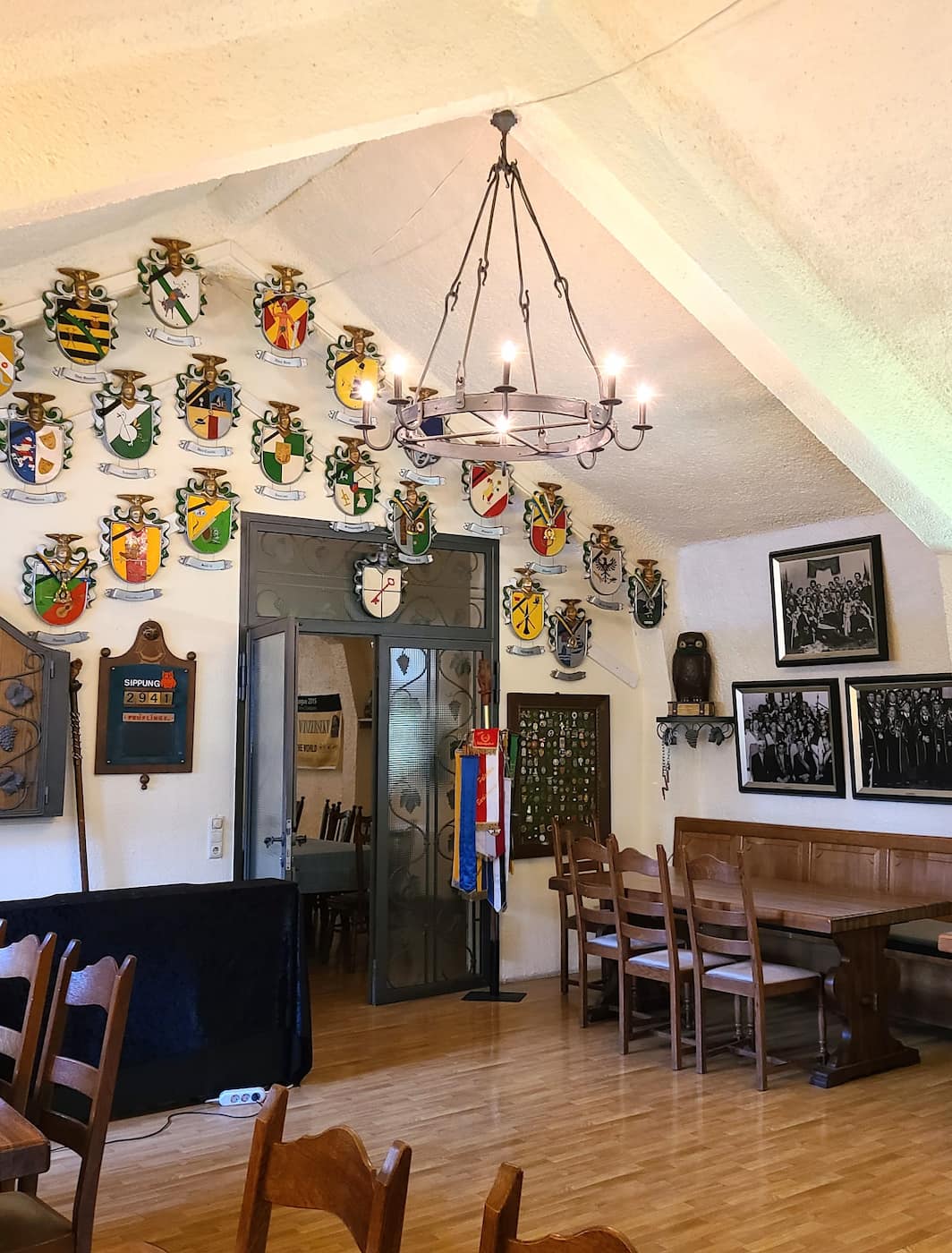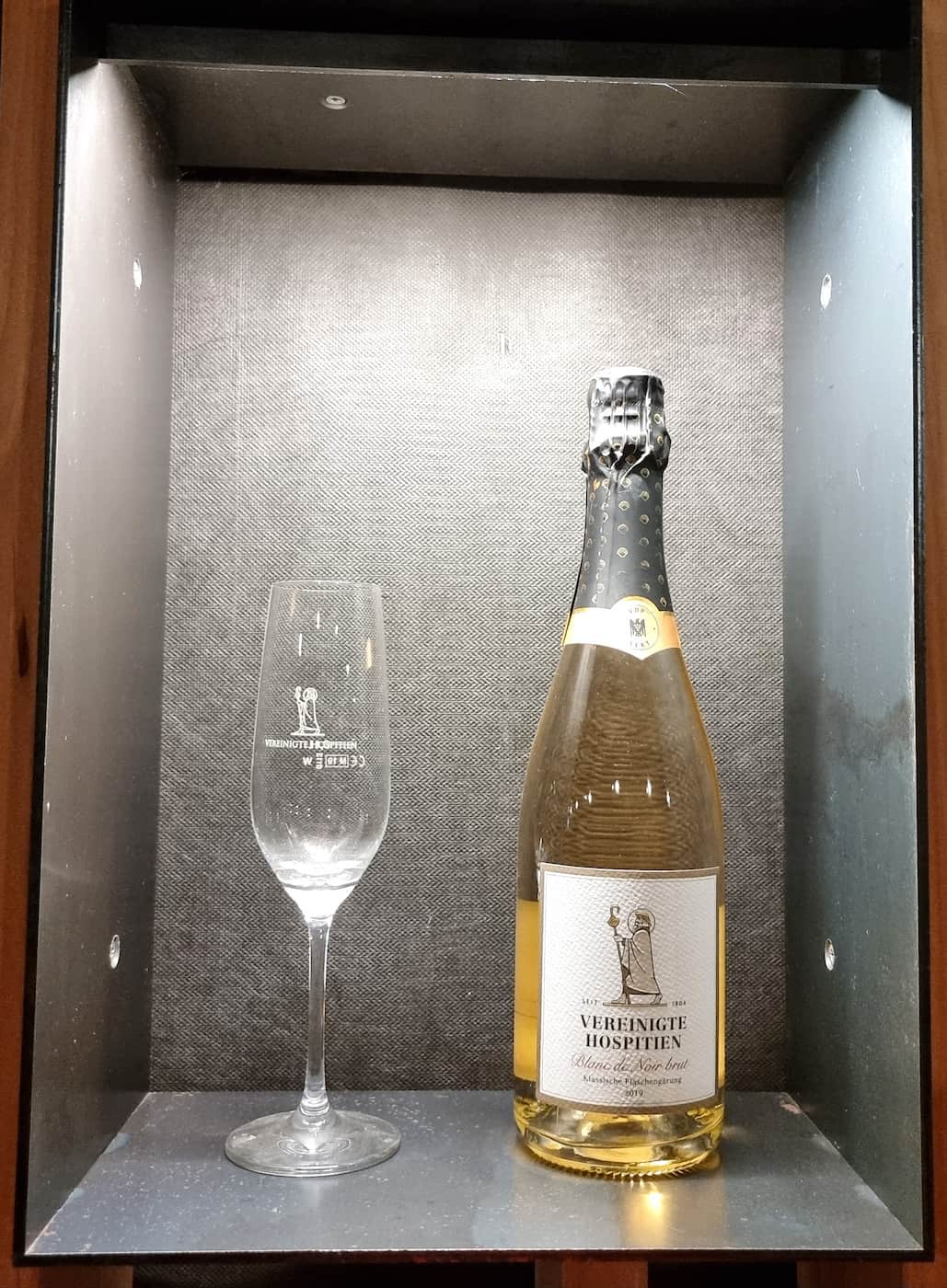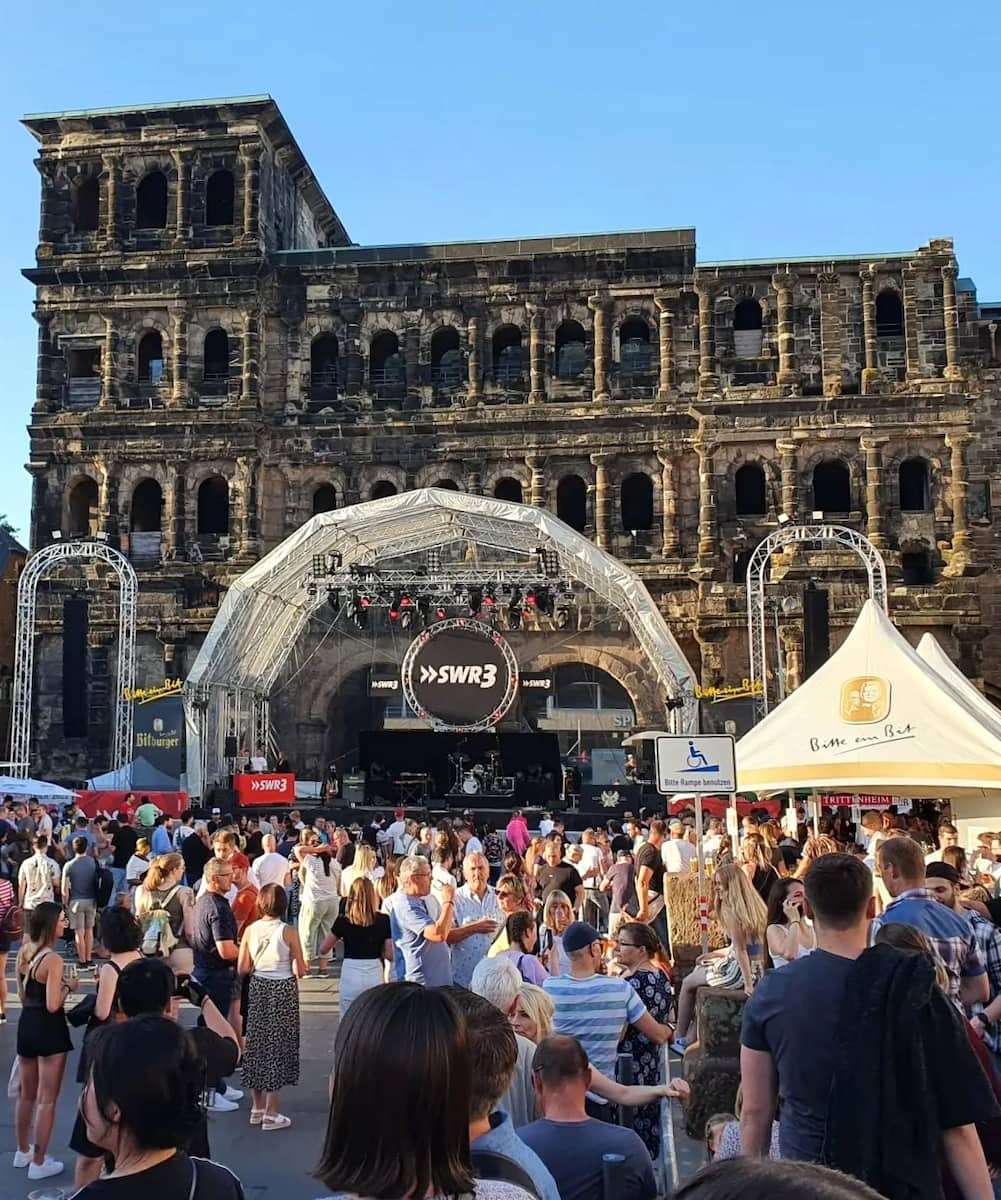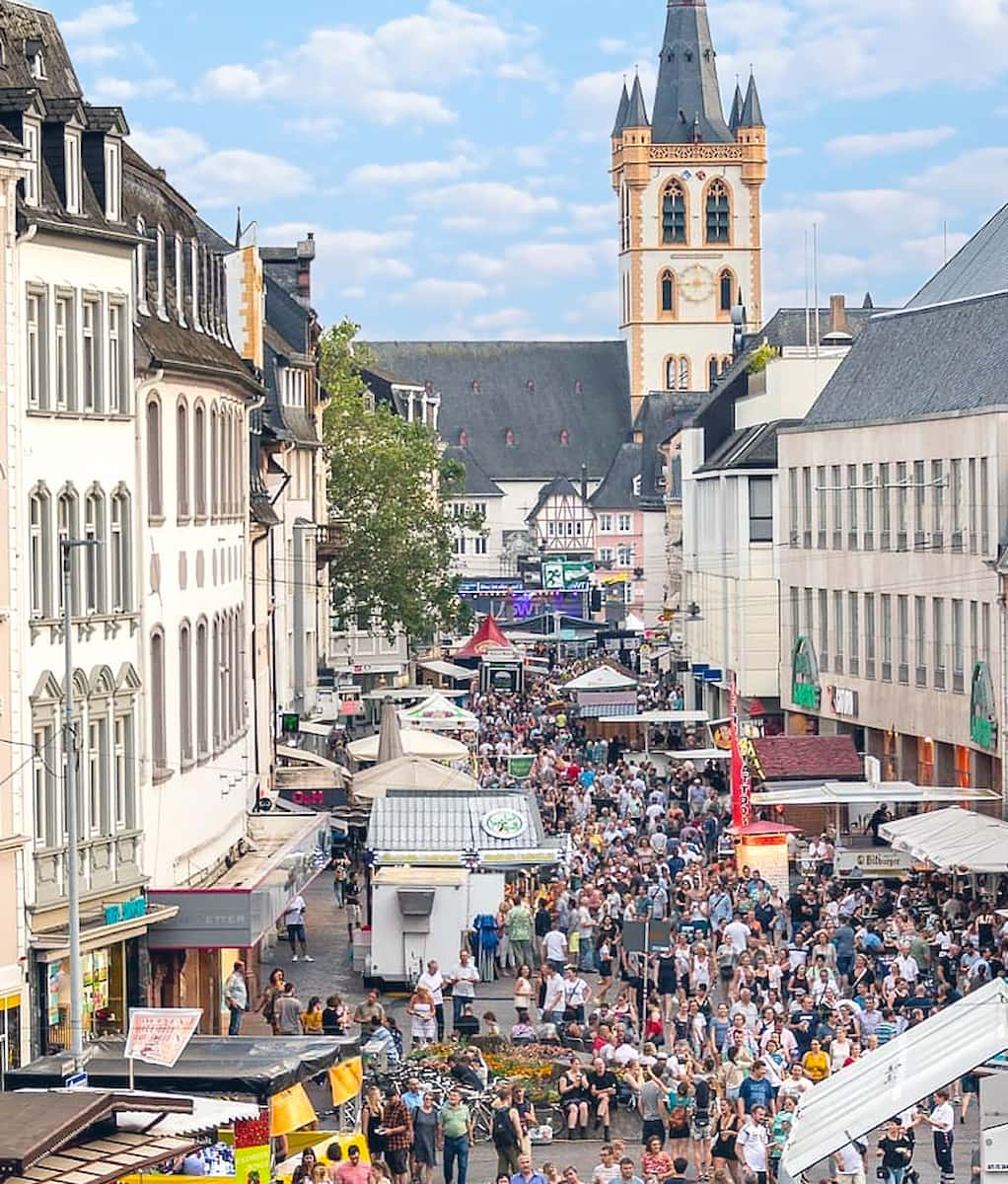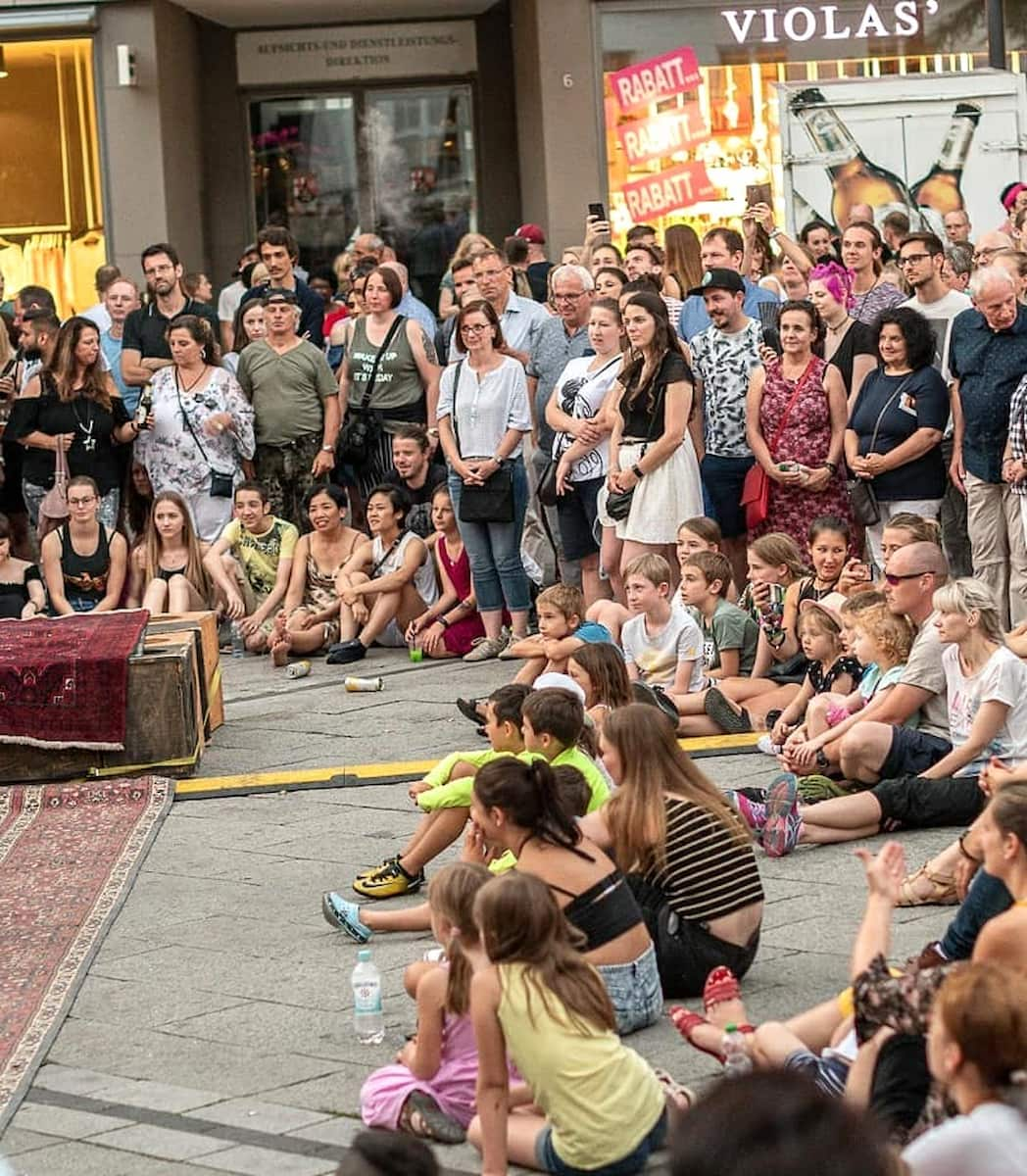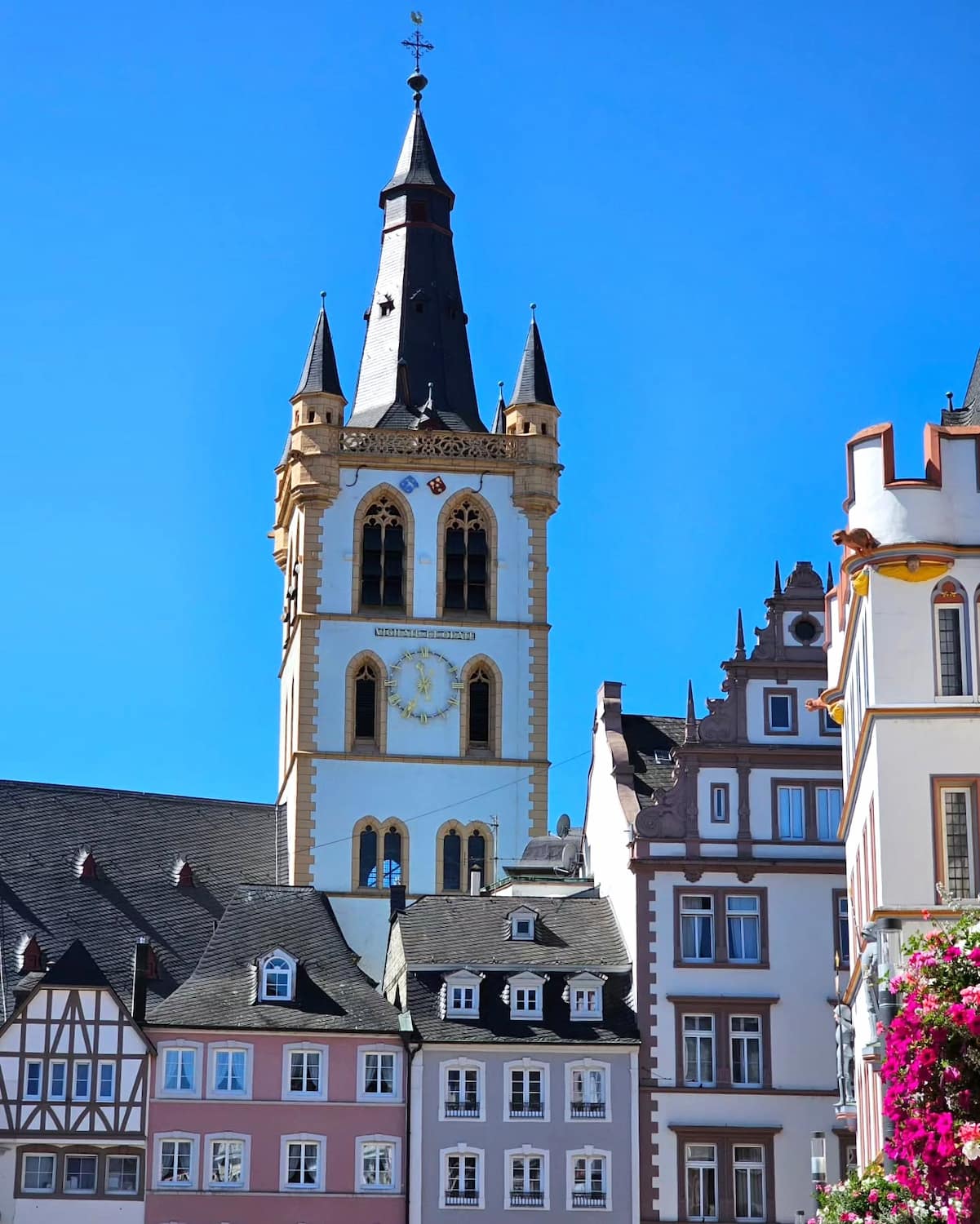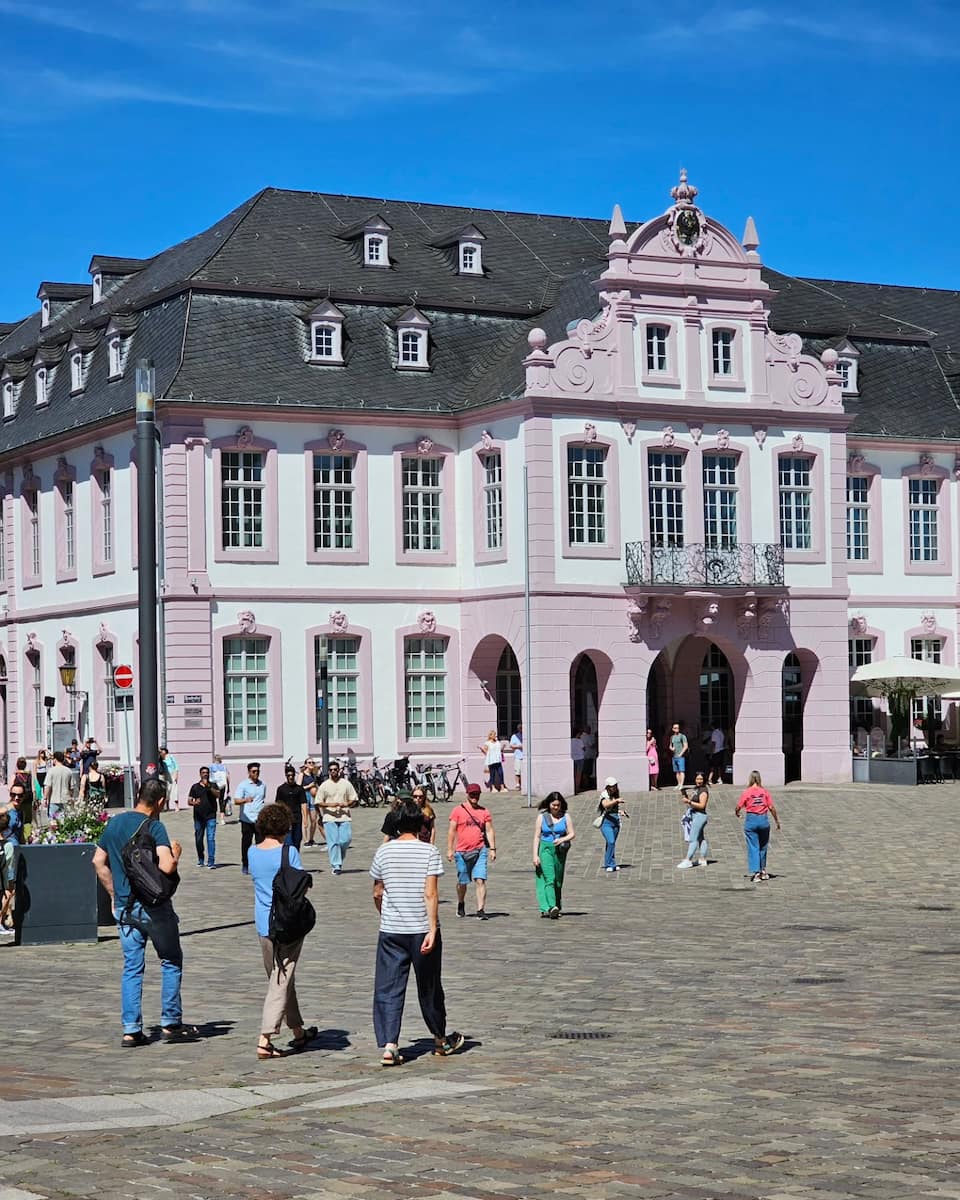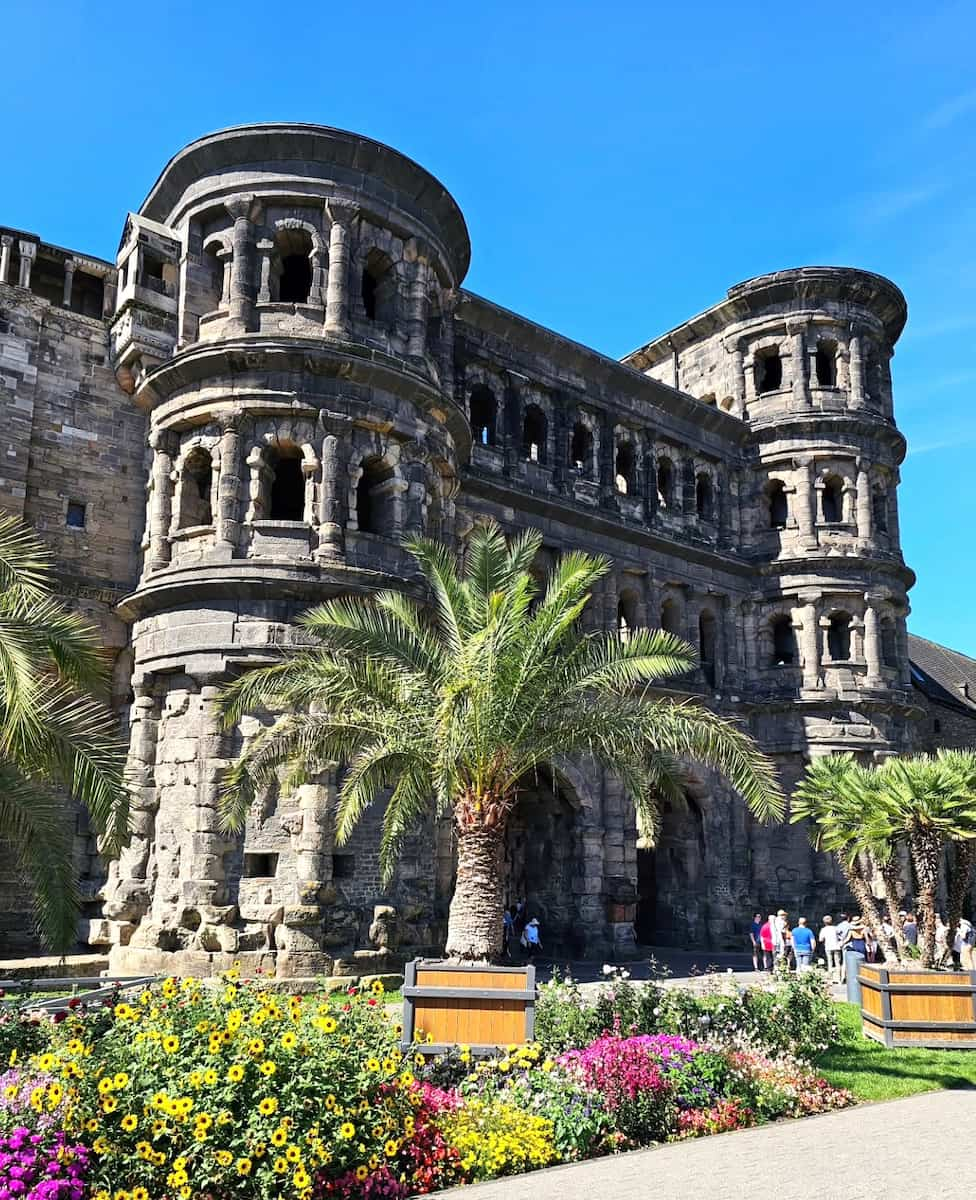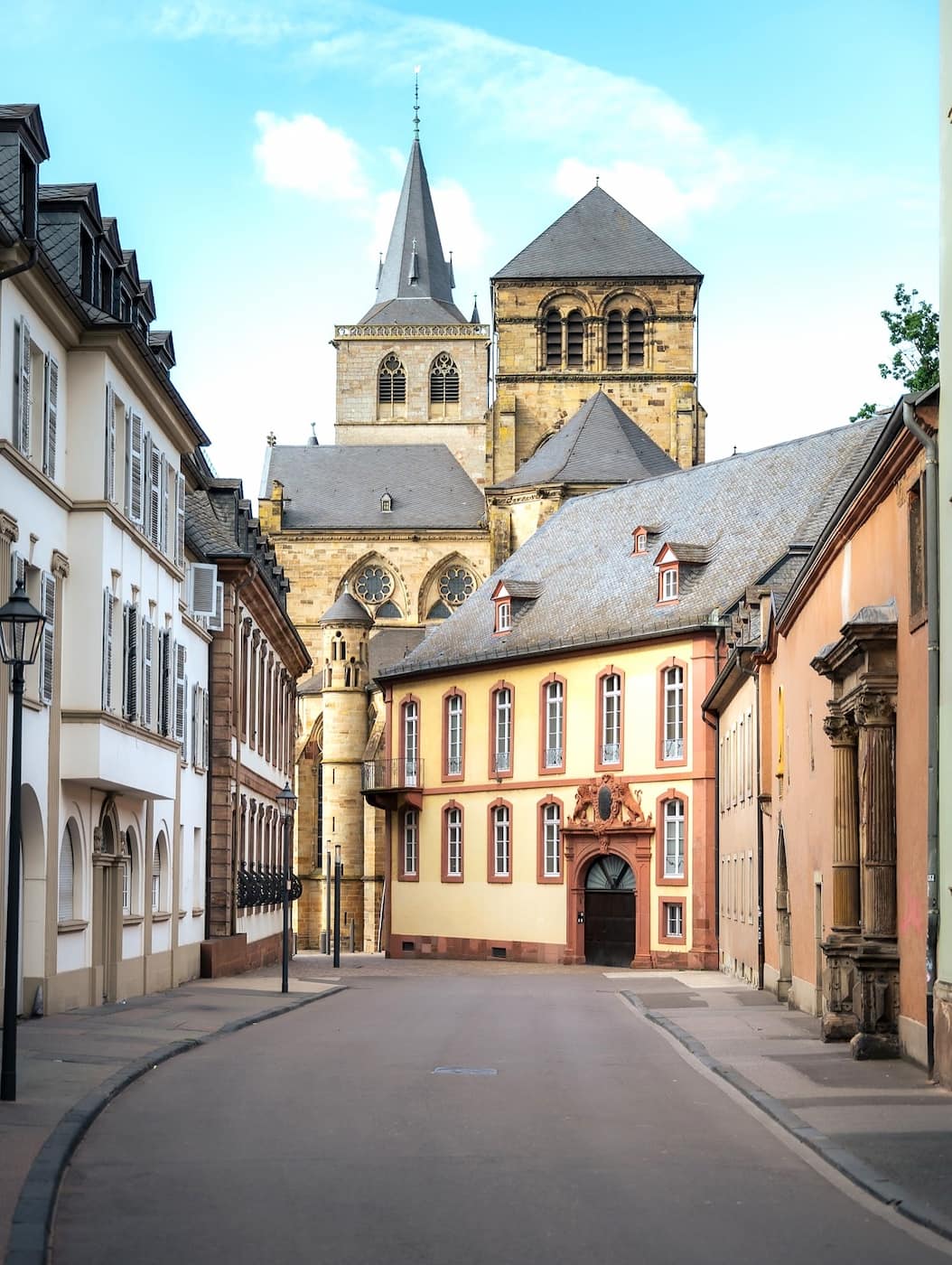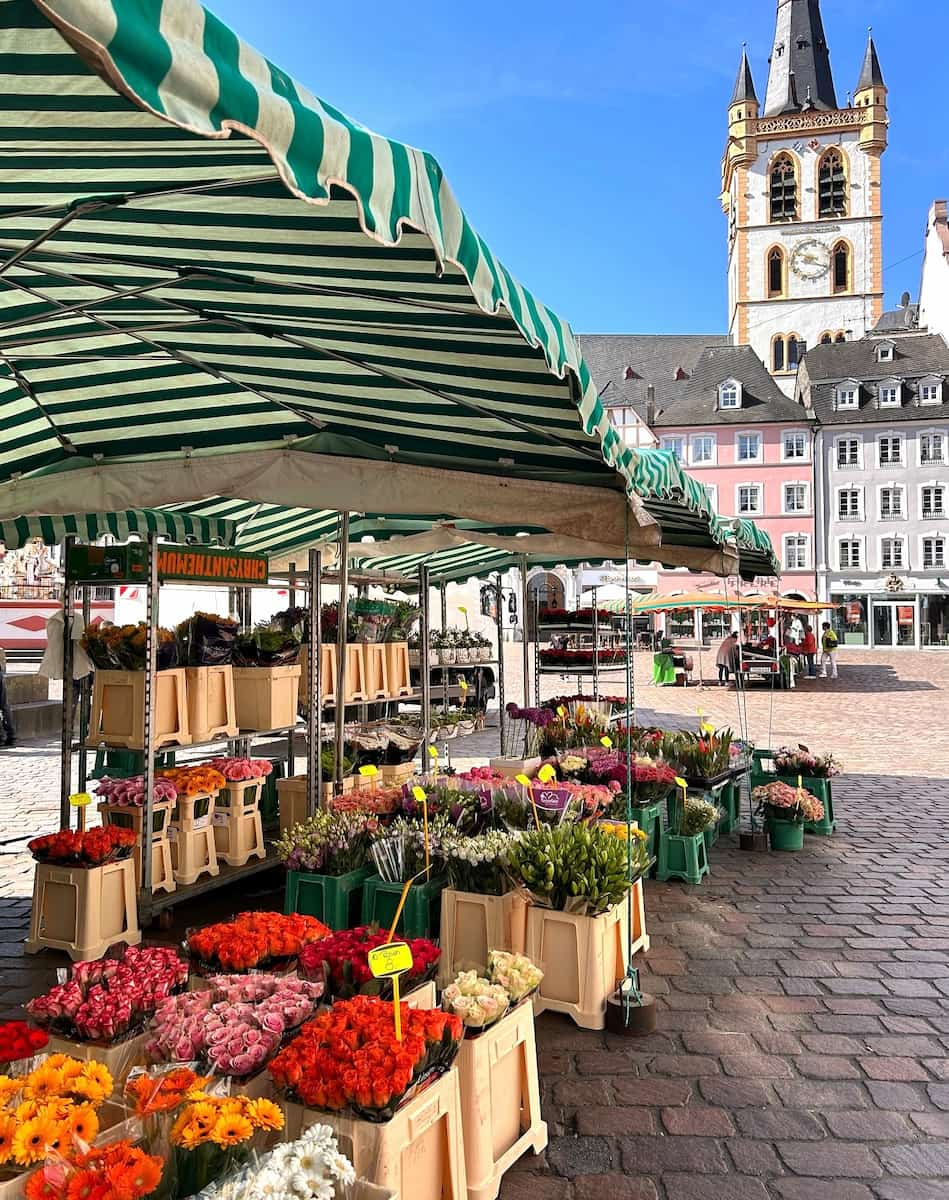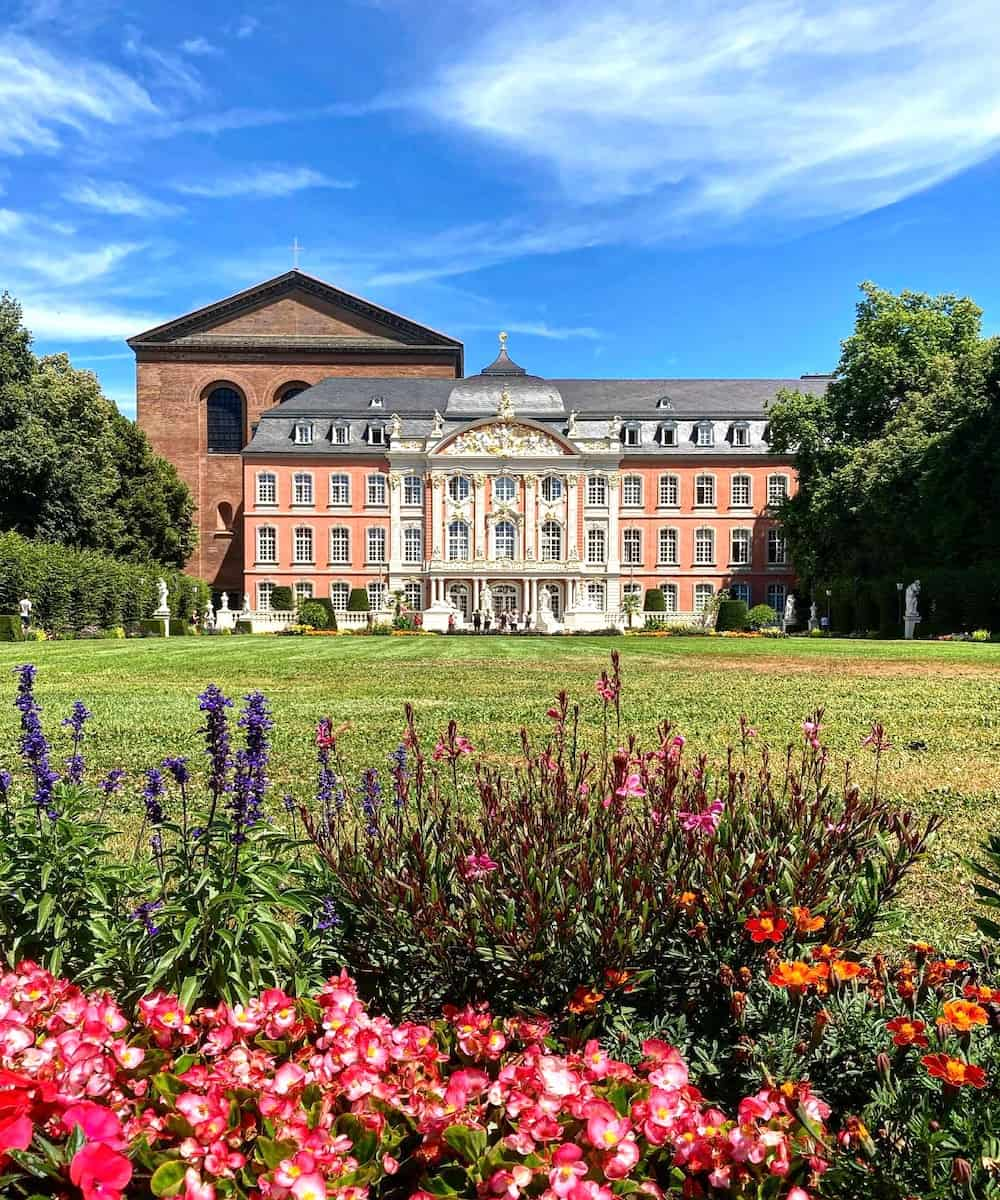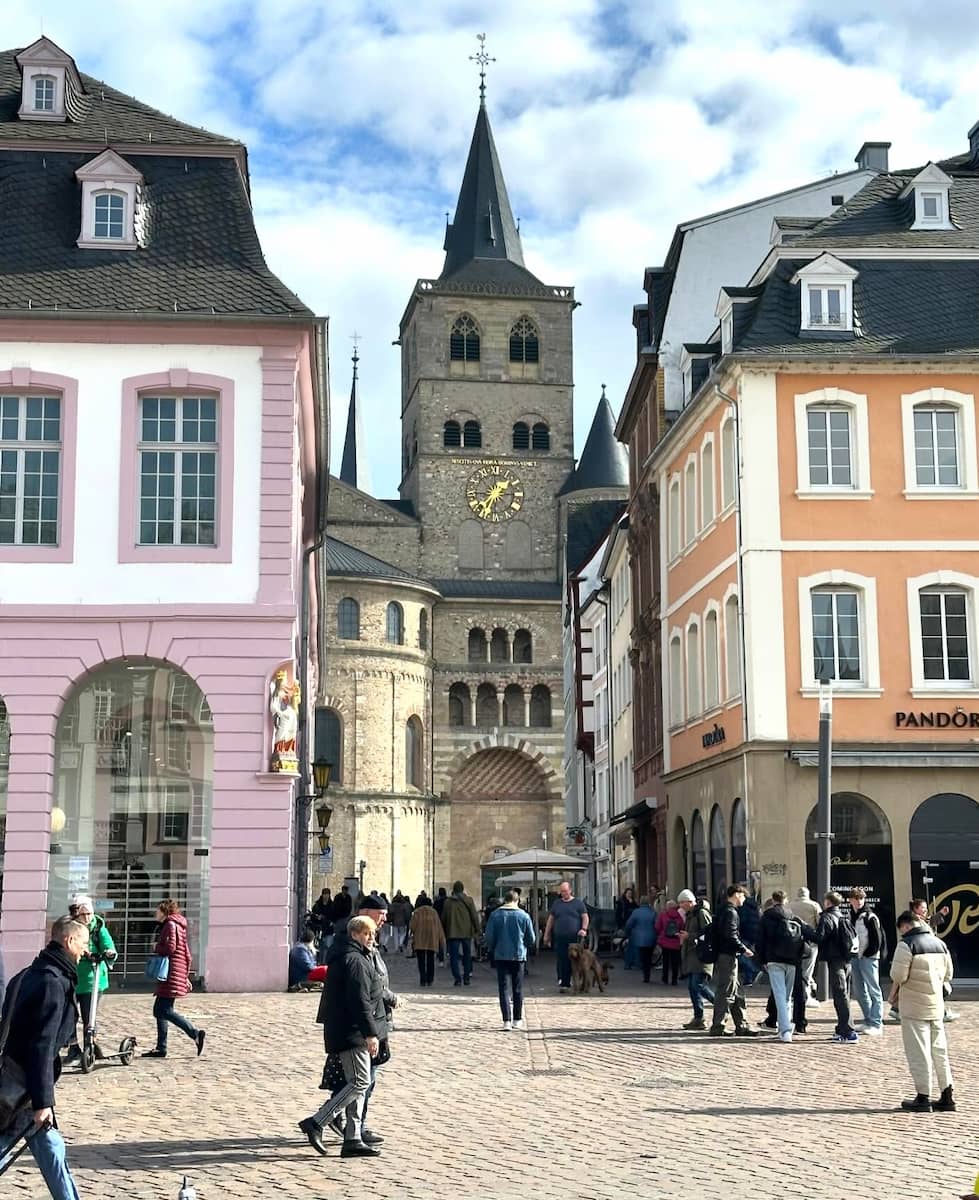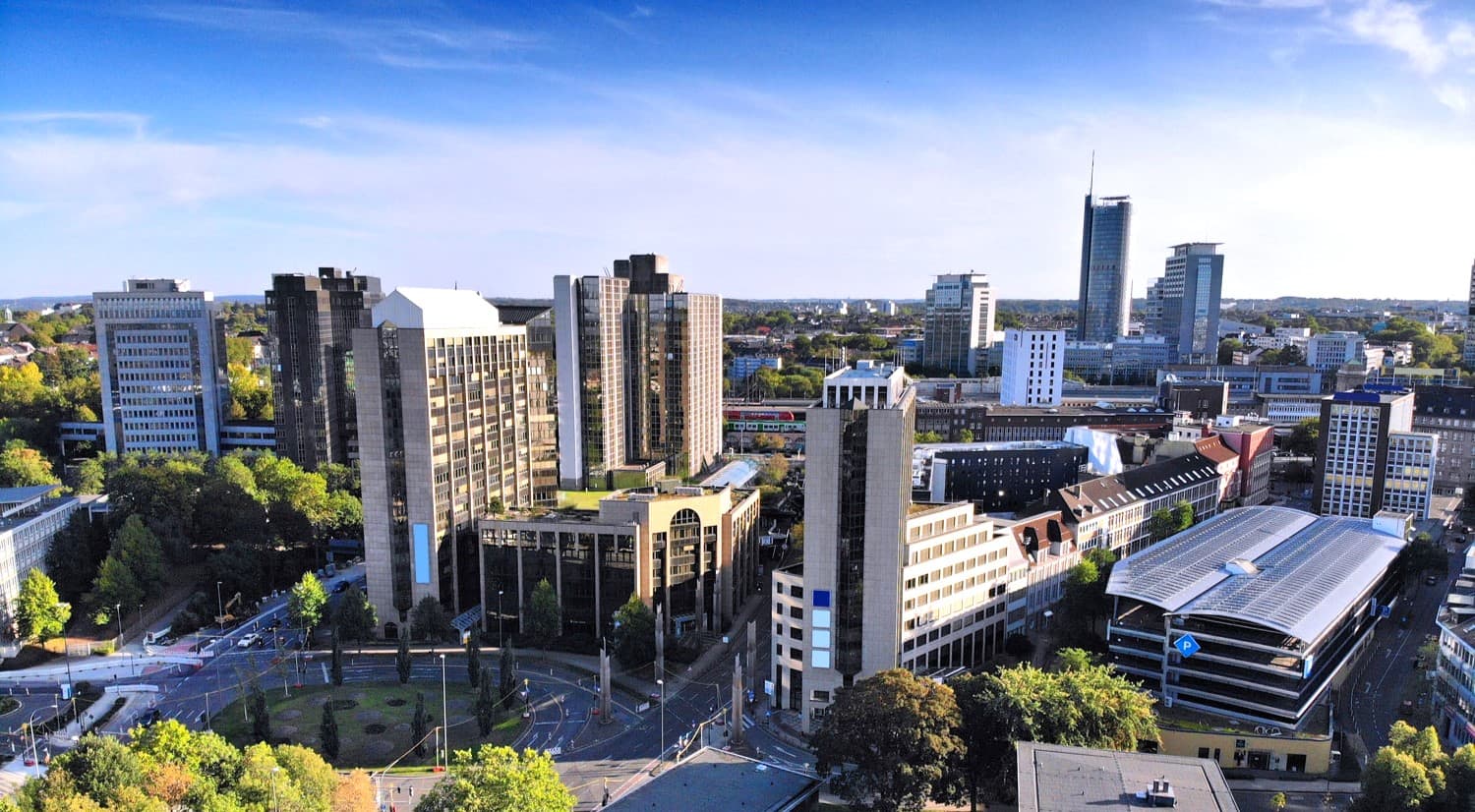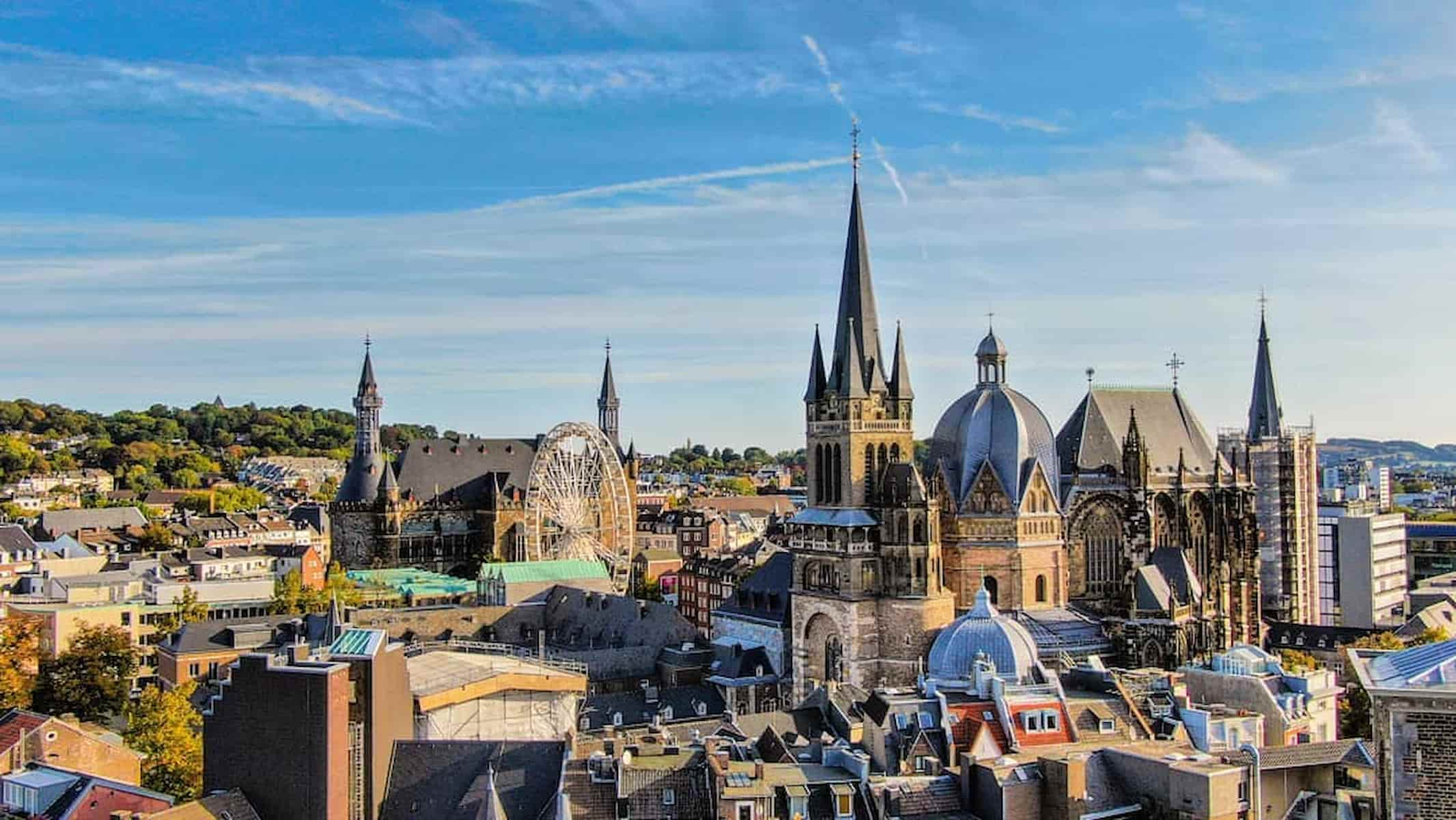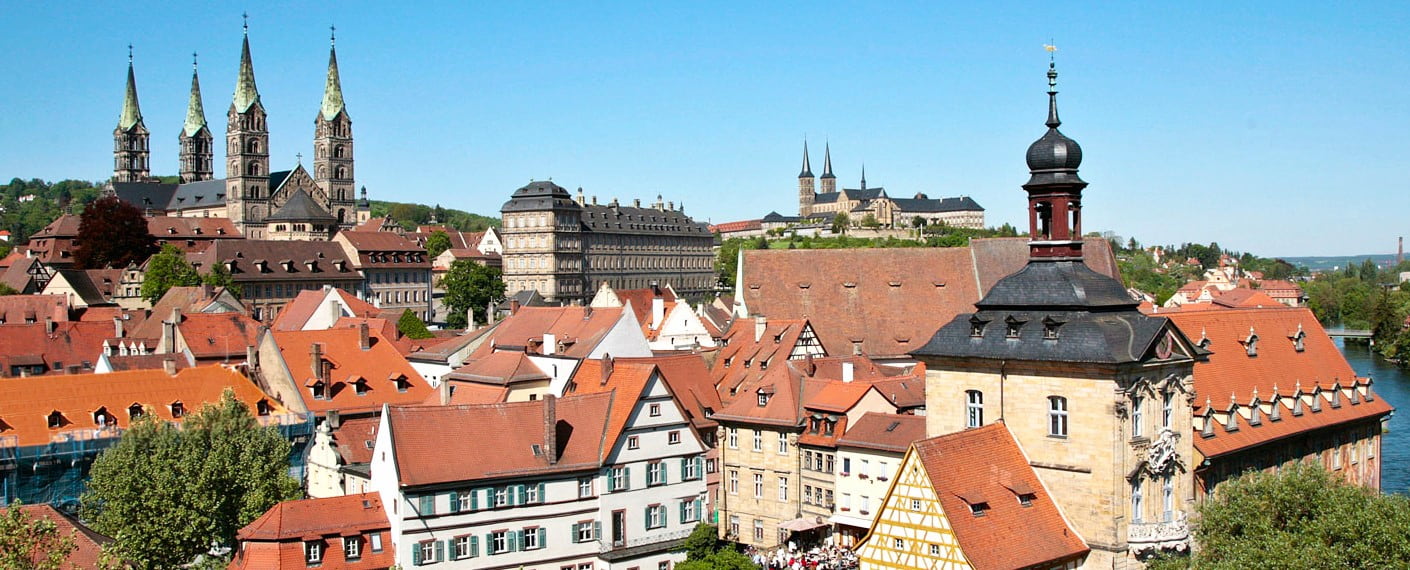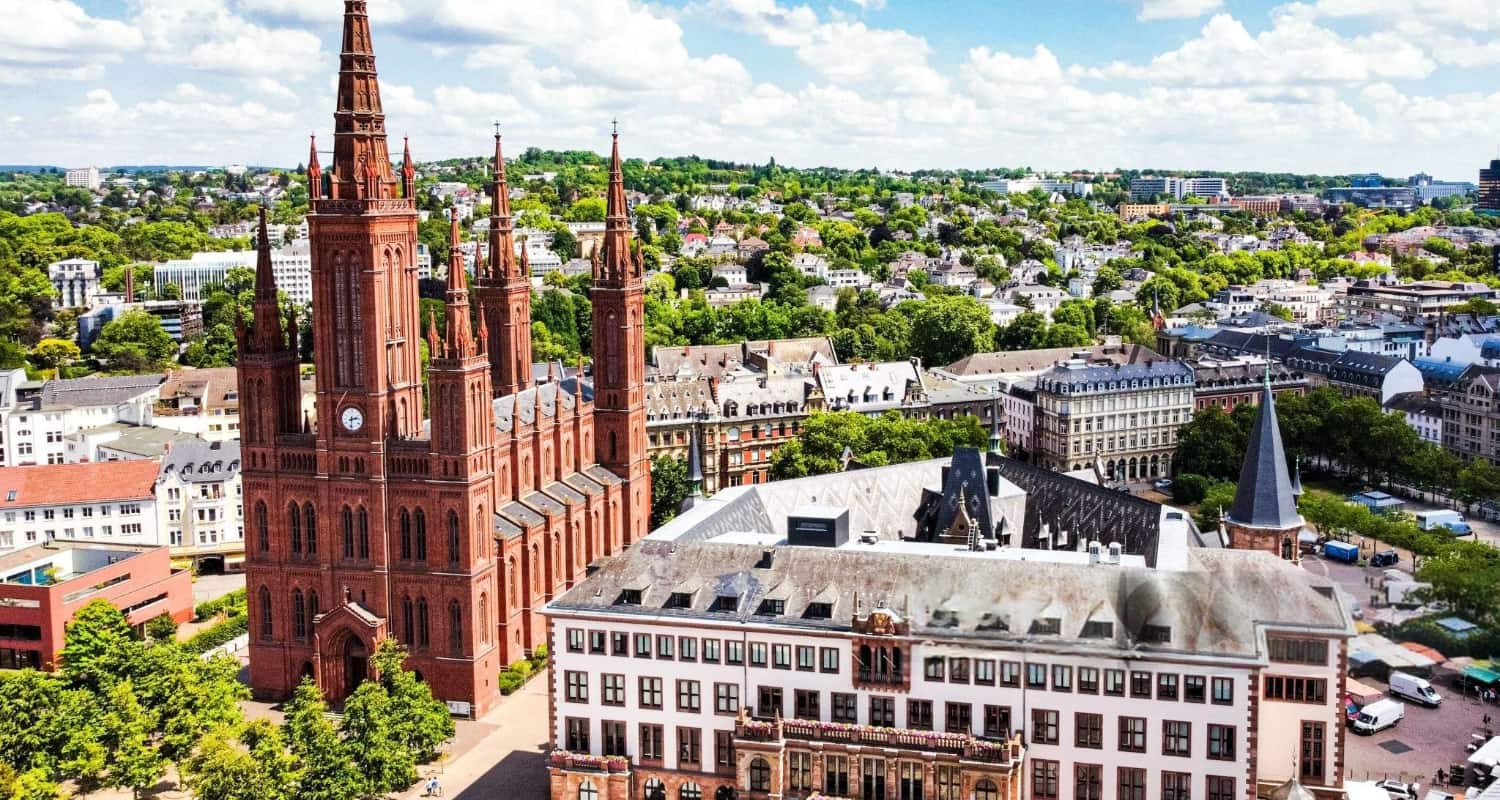Trier, often called the oldest city in Germany, is a treasure trove of history, culture, and stunning architecture. Nestled along the Moselle River, this charming city takes you back almost 2,000 years with its well-preserved Roman ruins, medieval churches, and vibrant market squares. Whether you’re a history lover, a wine enthusiast, or simply looking for a unique destination on your trip to Germany, Trier has something special waiting for you.
🏠 Where to Stay in Trier
- 🏨 4-Star: Best Western Hotel Trier City
- 🛏️ 3-Star: ante porta DAS STADTHOTEL
- 💸 Cheap: LuxAppartement Studio W6
- 🏢 Apartament: Holiday Trier City
- 👨👩👧👦 For Families: Hotel Villa Hügel
- 🏩 For Couples: Romantik Hotel Zur Glocke
In this guide, we’ll uncover the best attractions and things to see in Trier, from the iconic Porta Nigra to the breathtaking Cathedral of Trier. You’ll also discover hidden gems like the Electoral Palace gardens and tips for exploring the surrounding Moselle Valley. So get ready to plan your perfect trip to Trier and dive into its fascinating mix of ancient history and modern charm!
💁 Best Guided Tours
- Trier: Guided City Walk with Wine Tasting from € 29 (⭐ 4.9/5)
- Trier: Guided Old Town Highlights and History Walking Tour from € 15 (⭐ 4.8/5)
- Trier: Discovery tour - The country's oldest wine cellar from € 19 (⭐ 4.7/5)
- Trier in 1 Day: Walking Tour with Digital Guide from € 12 (⭐ 4.6/5)
Top Things to Do in Trier, Germany
1. Porta Nigra
First Impressions. Standing before the massive black-stone gate, I’m instantly transported back to Roman times. The Porta Nigra, Germany’s best-preserved Roman city gate, towers an impressive 90 feet high and stretches 118 feet long.
Architecture Marvel. What fascinates me most is the ingenious Roman engineering – the entire structure stands without mortar, held together by iron clamps. The sandstone blocks, each weighing up to six tons, have darkened over centuries, giving the gate its nickname “Black Gate.”
Practical Tips. Visit early morning for the best photos and fewer crowds. The gate is open:
- April-September: 9:00-18:00
- October-March: 9:00-17:00
- November-February: 9:00-16:00
| Ticket Type | Price |
|---|---|
| Adult | €4.00 |
| Groups (10+) | €3.50 |
| Students/Seniors | €3.00 |
| Family (2 adults + 4 children) | €8.00 |
Hidden Features. Don’t miss the ancient defense galleries with their large windows, perfect for spotting approaching enemies. The inner courtyard tells tales of medieval defense strategies.
⭐ Best tour
- Trier: Guided City Walk with Wine Tasting – Discover Trier’s rich history and indulge in local wines on this 2-hour guided tour through the city’s historic sites.
2. Trier Cathedral (Trierer Dom)
Ancient Origins. As Germany’s oldest cathedral, this UNESCO World Heritage site amazes with its blend of Roman and medieval architecture. The original Roman walls still rise an impressive 26 meters high.
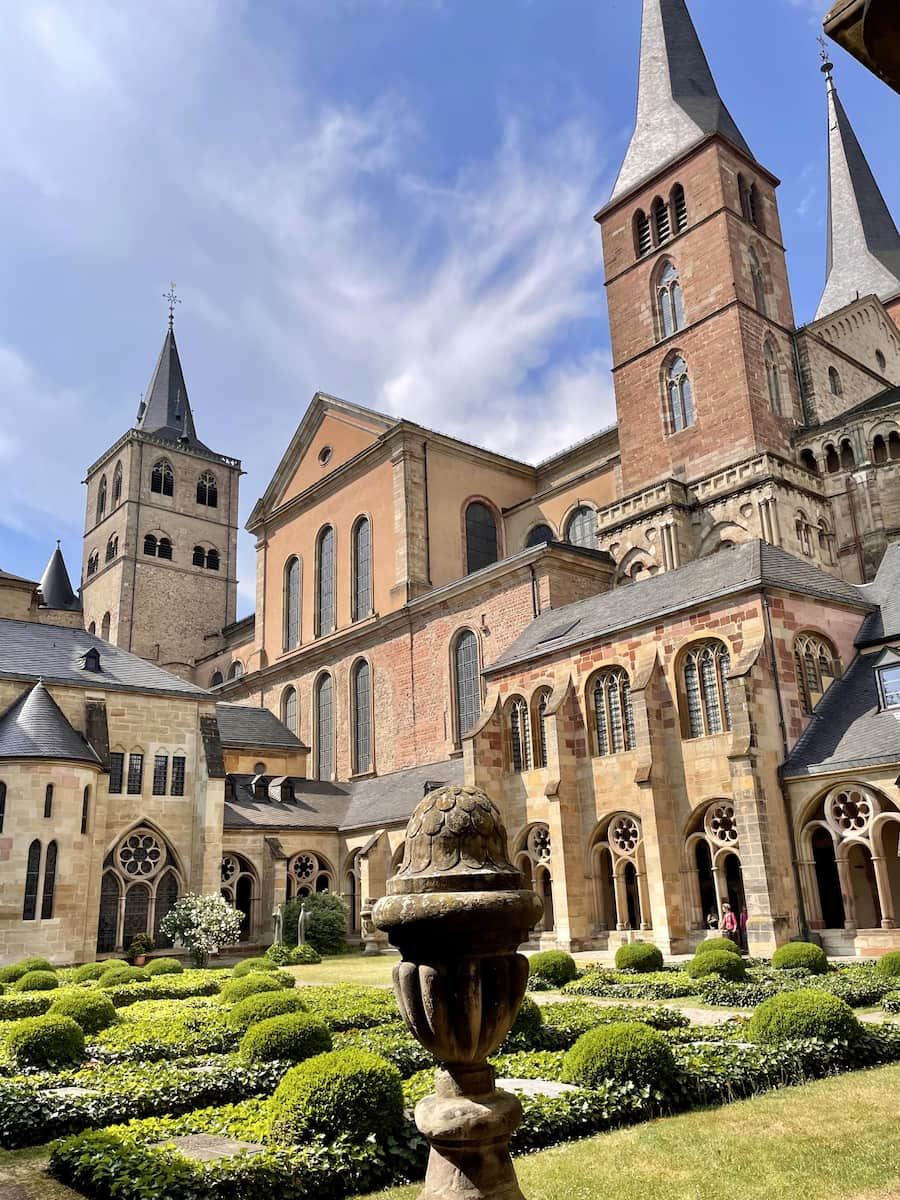
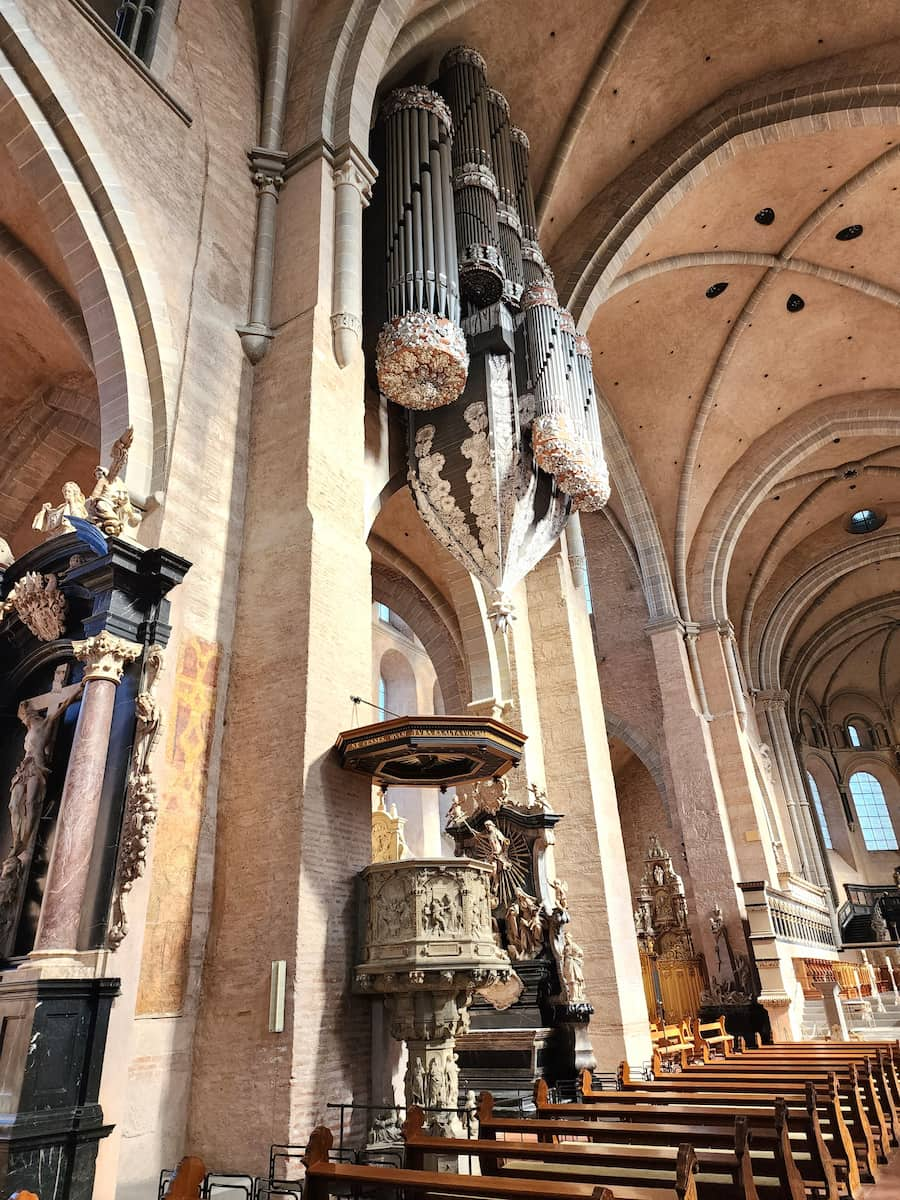
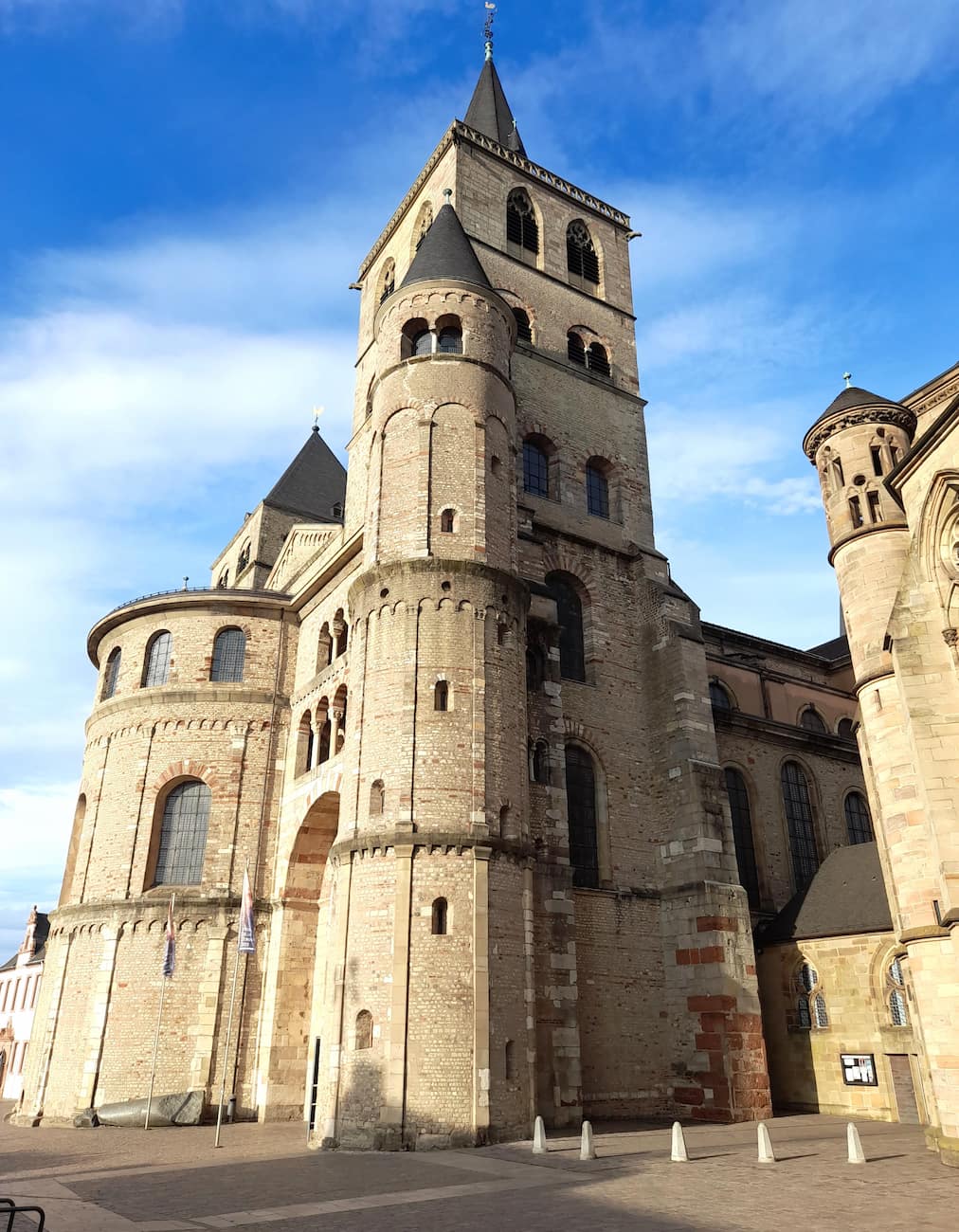
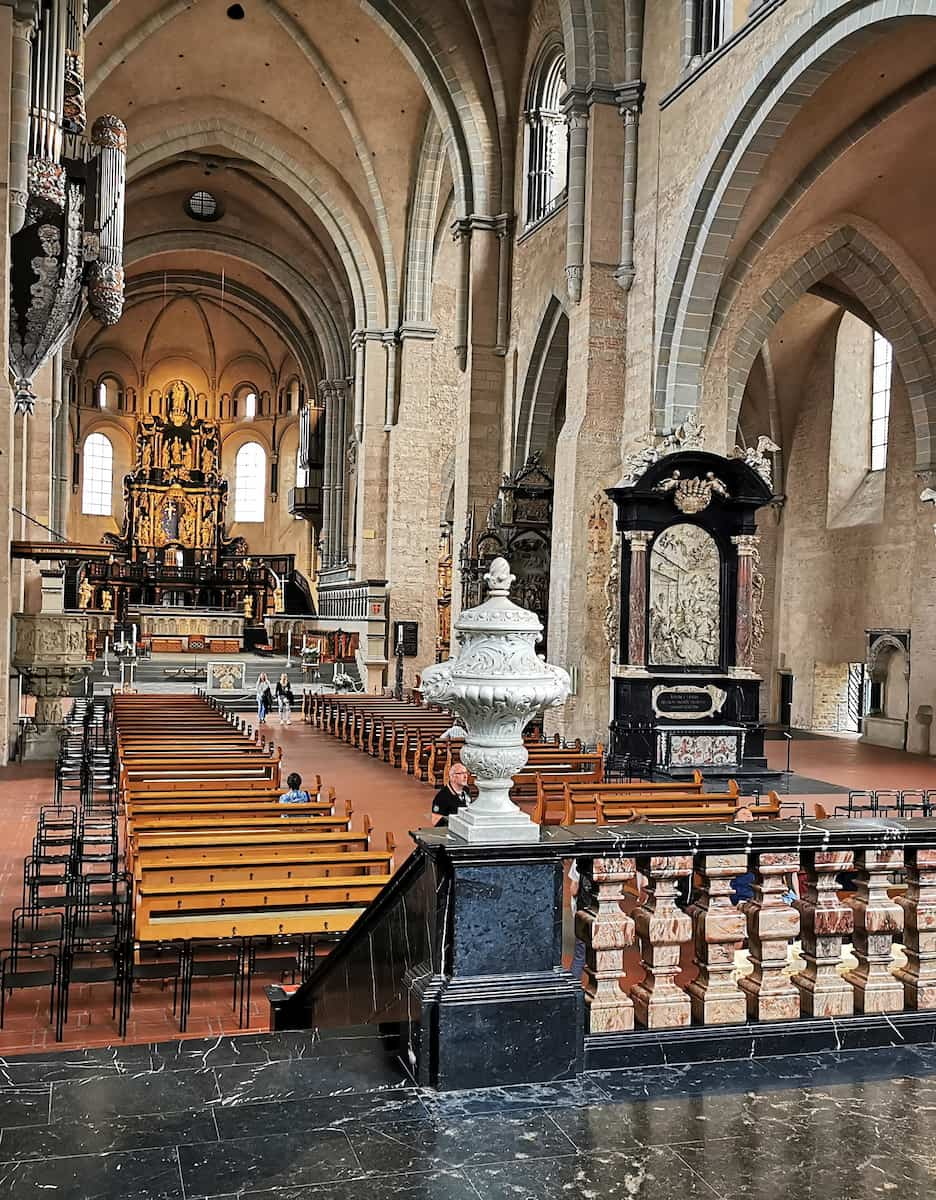
Architectural Highlights. The cathedral’s interior combines Romanesque structure with Baroque decorations and Gothic vaulting. I particularly love the contrast between the ancient Roman brickwork and the later medieval additions.
Treasury Gems. The cathedral houses the famous Holy Tunic, believed to be Christ’s robe, though it’s rarely displayed. The treasury contains remarkable pieces like the Egbert Shrine and St. Helena’s drinking cup.
| Opening Hours | Time |
|---|---|
| Regular Days | Free entry |
| During Services | Visiting restricted |
| Treasury | Separate ticket required |
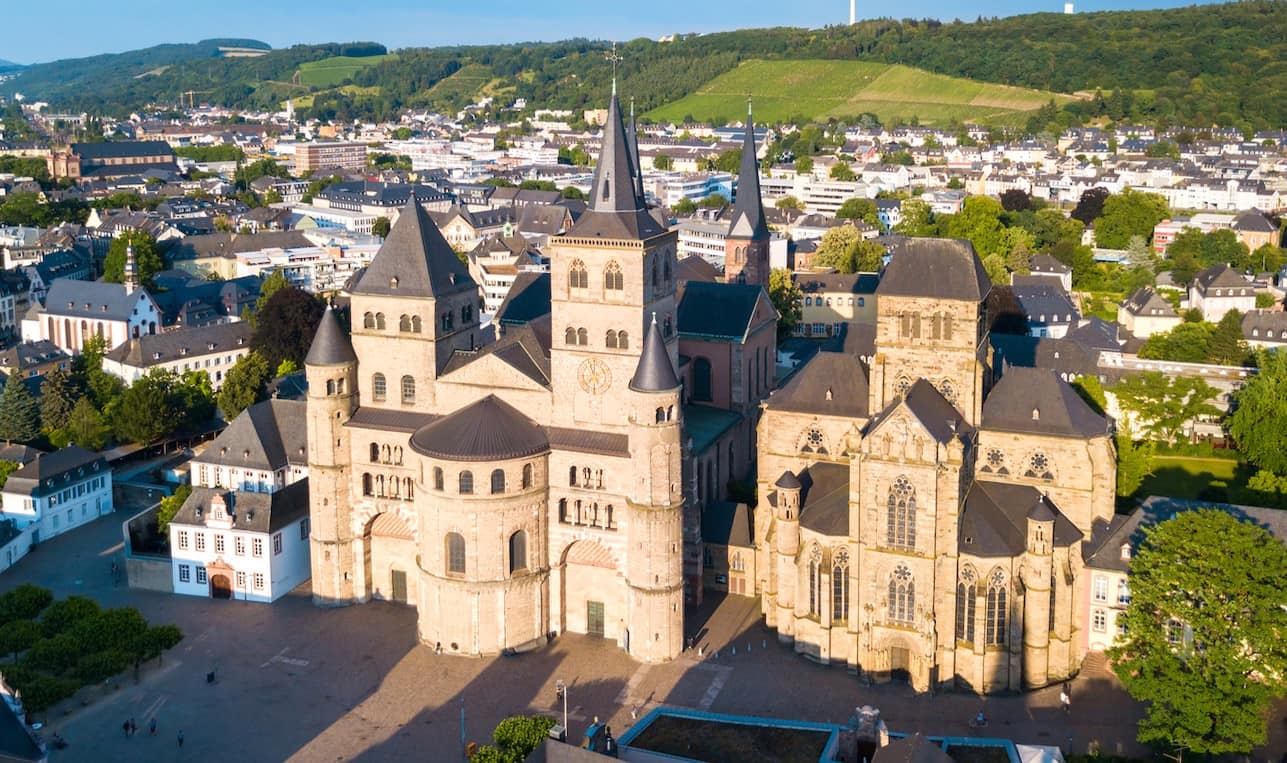
Local Tip. Don’t forget to try the local tradition – sliding down the Cathedral Stone located to the left of the main entrance. It’s especially popular with children and brings good luck according to locals.
⭐ Best tour
- Trier in 1 Day: Walking Tour with Digital Guide – Get a great introduction to this southwestern German city by prebooking this Trier Private Walking Tour that allows you to skip the busy group tours.
3. Hauptmarkt (Main Market Square)
Market Atmosphere. The medieval heart of Trier pulses with life in this 800-year-old square. The aroma of fresh pretzels and local wines fills the air as I weave through colorful market stalls.
Historical Features. The Renaissance Market Cross from 1595 marks the center, while the stunning Petrusbrunnen (St. Peter’s Fountain) provides the perfect meeting point. I’m particularly drawn to the vibrant merchant houses with their distinctive red and yellow facades.
| Market Days | Times |
|---|---|
| Weekly Market | Wed & Sat 8:00-14:00 |
| Christmas Market | Late Nov-Dec 22 |
| Wine Festival | August |
Local Flavors. My favorite spot is Café Zum Domstein, where you can sample Viez (local apple wine) while people-watching. Traditional Kartoffelkuchen (potato cake) costs around €3.50.
⭐ Best tour
- Explore Trier's City Highlights with a Local – From Porta Nigra to Hauptmarkt, get to discover the city’s most defining landmarks. Your Local will also share insider tips on the best cafes, restaurants, and lively bars in Trier to ensure you get the most out of your stay.
4. Karl Marx House
Cultural Significance. In this modest baroque building, I found myself walking through the birthplace of one of history’s most influential philosophers. The museum offers fascinating insights into Marx’s life and ideas.
Exhibition Highlights. The modern multimedia displays bring Marx’s theories to life. Don’t miss the original first edition of “Das Kapital” in the study room.
| Admission | Price |
|---|---|
| Adults | €5.00 |
| Reduced | €3.50 |
| Groups (10+) | €4.00 |
Insider Tip. The audio guide (€2 extra) is worth every cent, offering deeper context about Marx’s connection to Trier.
⭐ Best tour
- Trier: Private Guided Walking Tour – Embark on a captivating journey through Trier, Germany’s oldest town, adorned with UNESCO sites, Roman structures, and the birthplace of Karl Marx. Let our guide reveal the secrets of charming city.
5. Imperial Baths (Kaiserthermen)
Underground Adventure. Exploring these massive Roman baths feels like stepping into an ancient engineering marvel. The underground passages reveal ingenious heating systems and water channels.
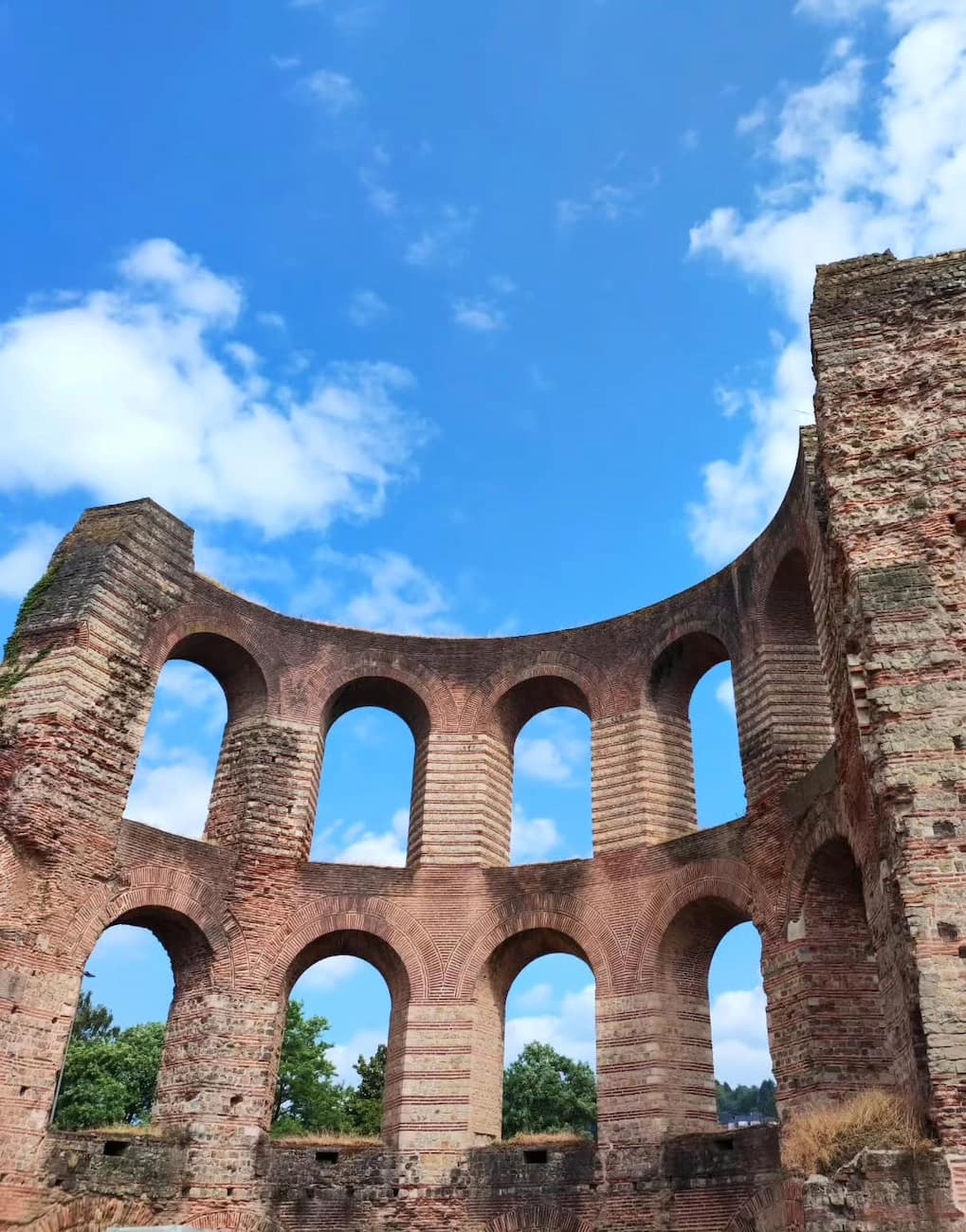
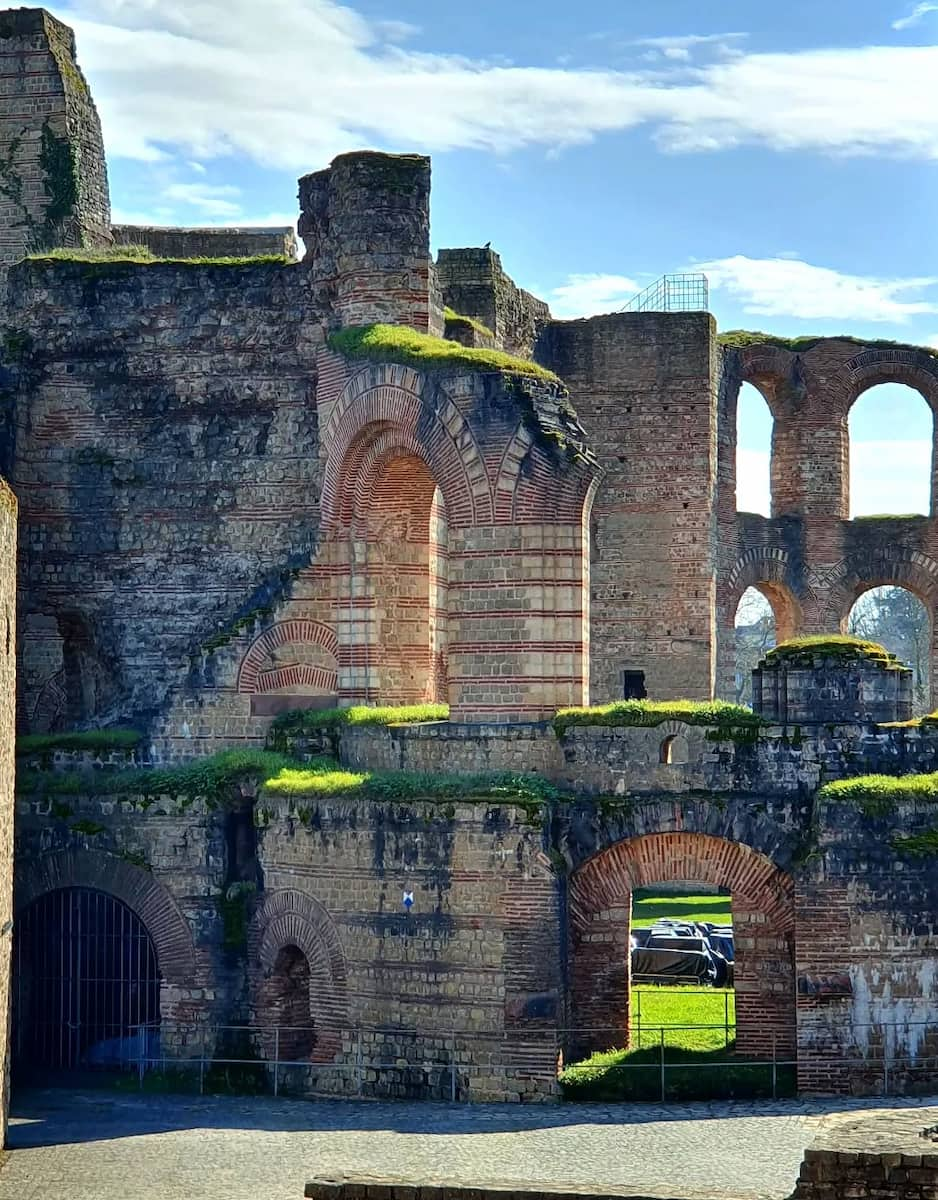
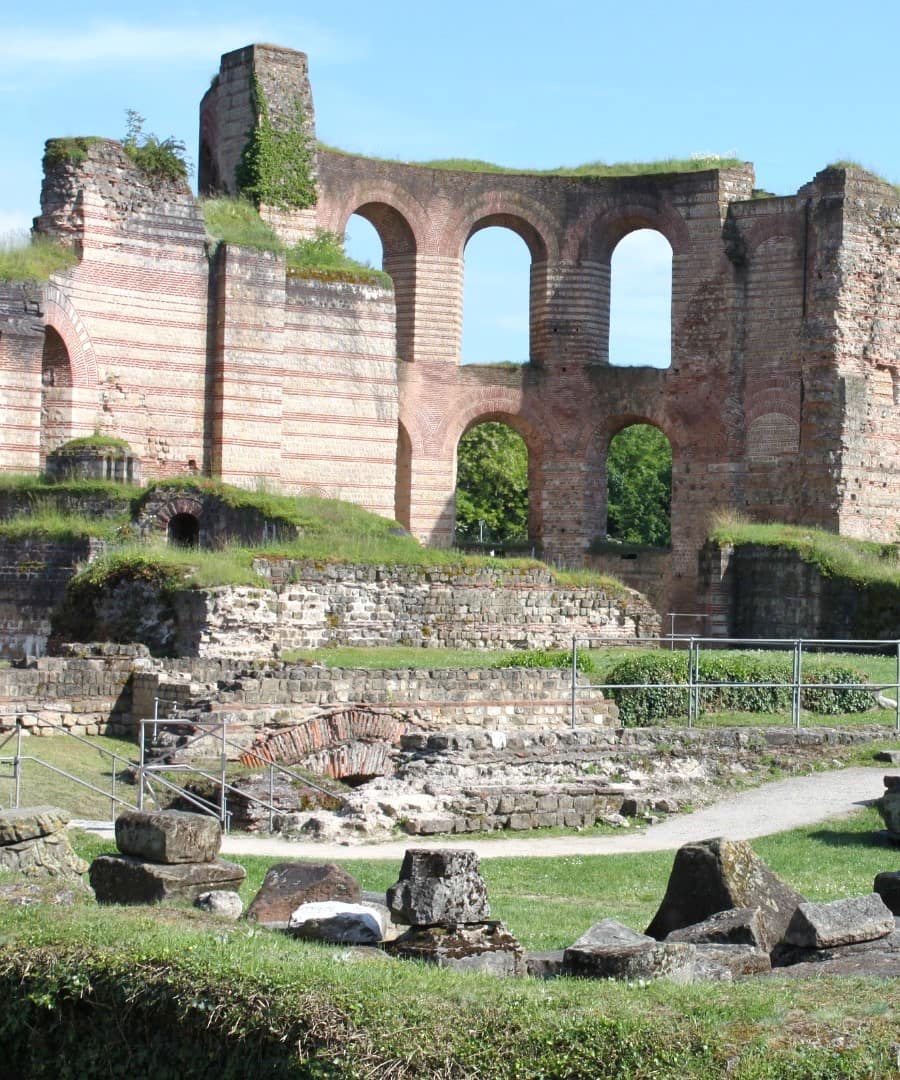
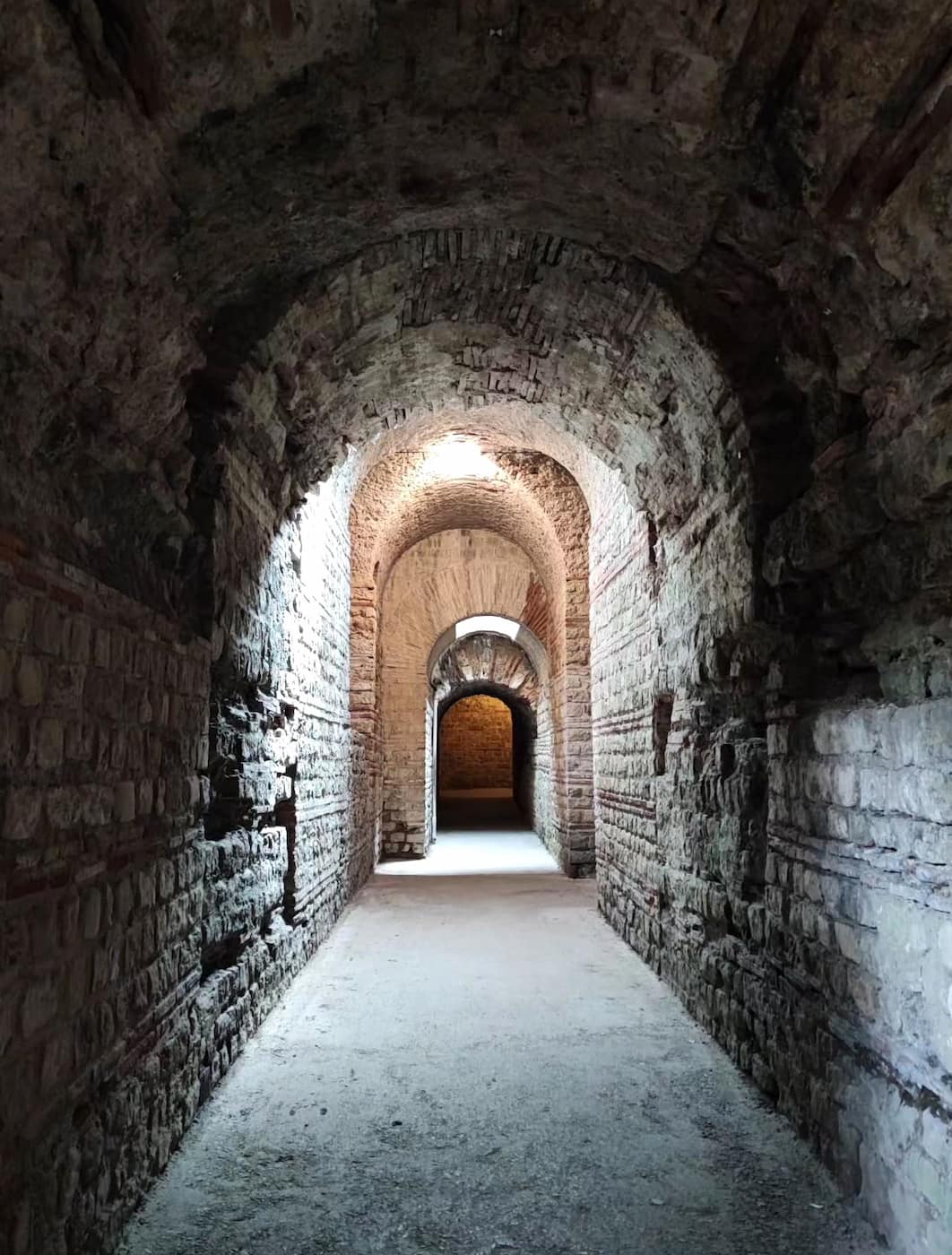
Archaeological Insights. What fascinates me most is the preserved frigidarium (cold bath) and the extensive underground service tunnels. Bring a jacket – it’s cool down there!
Photography Tips. The best light for photos is between 10-11 AM when sunbeams pierce through the ancient windows.
⭐ Best tour
- Trier: early morning tour – For early risers and impatient people, for people who are sensitive to loud noises and large crowds and for people who would like to take a barrier-free city tour of Trier.
6. Old Roman Bridge (Römerbrücke)
Bridge History. Walking across the Römerbrücke, I’m treading on the oldest bridge in Germany. The original Roman pillars from 144 AD still support modern traffic – a testament to Roman engineering brilliance.
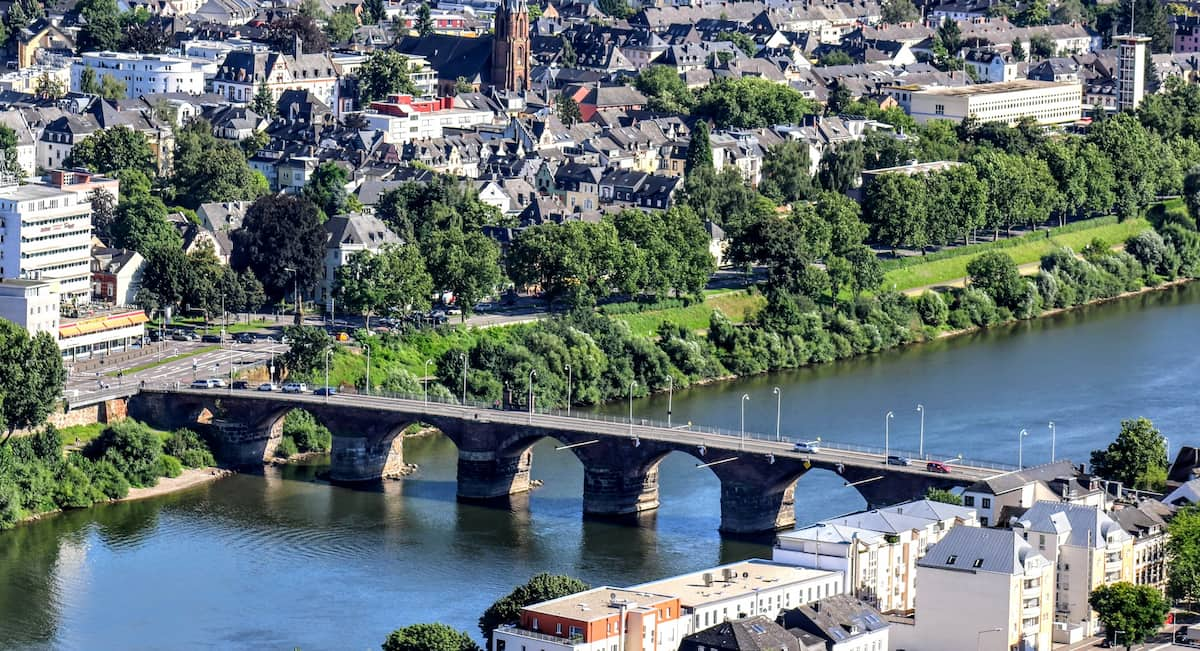
Scenic Views. The bridge offers the most picturesque views of Trier’s riverscape. I particularly enjoy watching the sunset here, when the Moselle River reflects golden light and river cruises glide beneath.
Photography Spots:
- Northeast corner: Best city panorama
- Midbridge: Perfect river views
- South bank: Ideal for bridge architecture shots
River Activities. During summer months, I recommend taking a river cruise (€15 for 1 hour) or renting a kayak (€12/hour) for a unique perspective of the bridge’s massive stone pillars.
| Best Viewing Times | Activity |
|---|---|
| Dawn | Photography |
| Midday | River cruises |
| Sunset | Walking tours |
Local Tip. Visit the small wine stand at the bridge’s southern end on weekends. Local vintners offer tastings of regional Moselle wines for €5.
⭐ Best tour
- Trier Exploration Private Game and City Tour – You’re looking for a fun way to explore the city at your own pace? Then, this city-exploration game is made for you! You’ll entertain all your group with interesting questions, while still teaching them fun facts about the city.
Hidden Gems in Trier
1. Liebfrauenkirche (Church of Our Lady)
Architectural Wonder. This 13th-century church captivates me with its unique circular design. As Germany’s earliest Gothic church, its 12-pointed star floor plan symbolizes the crown of Mary.
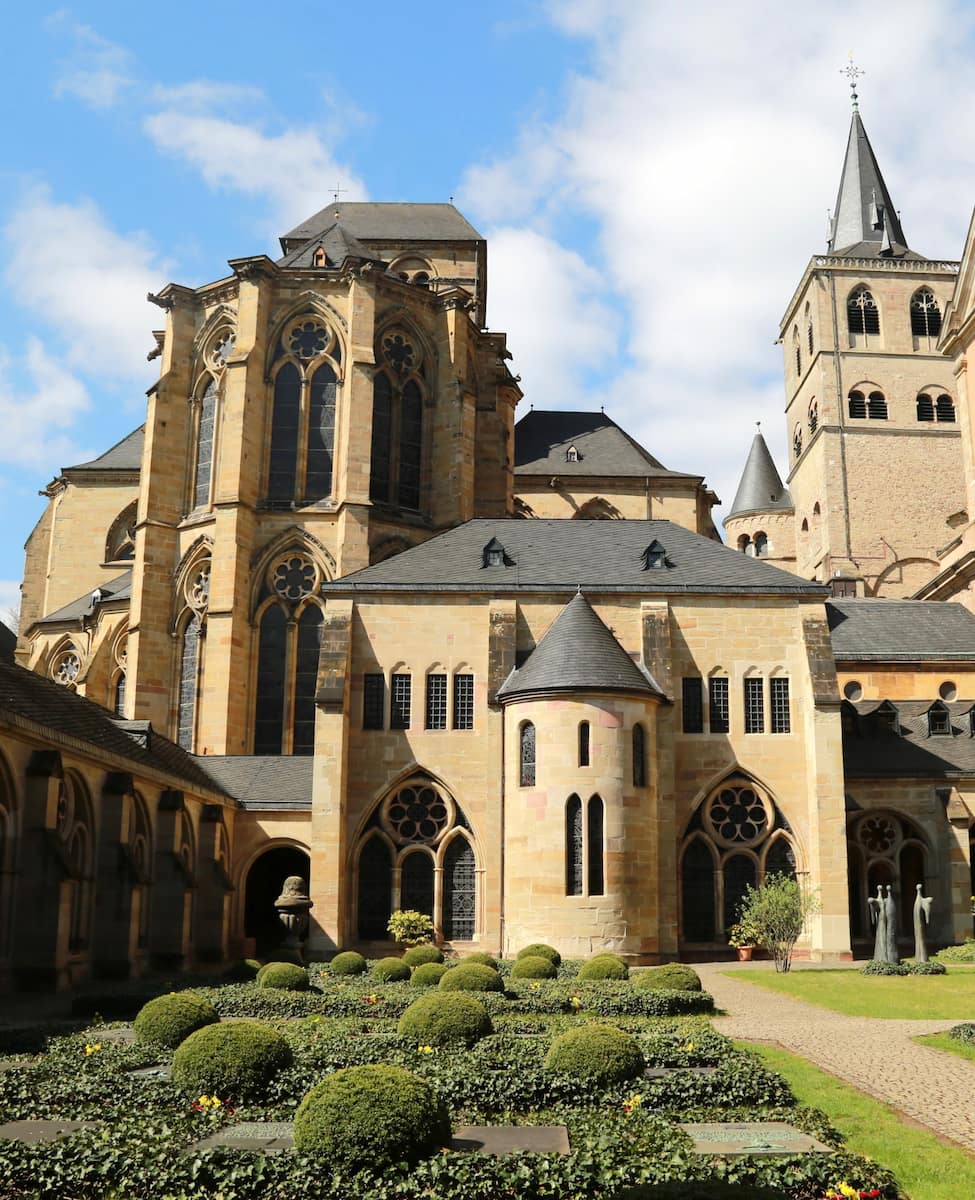
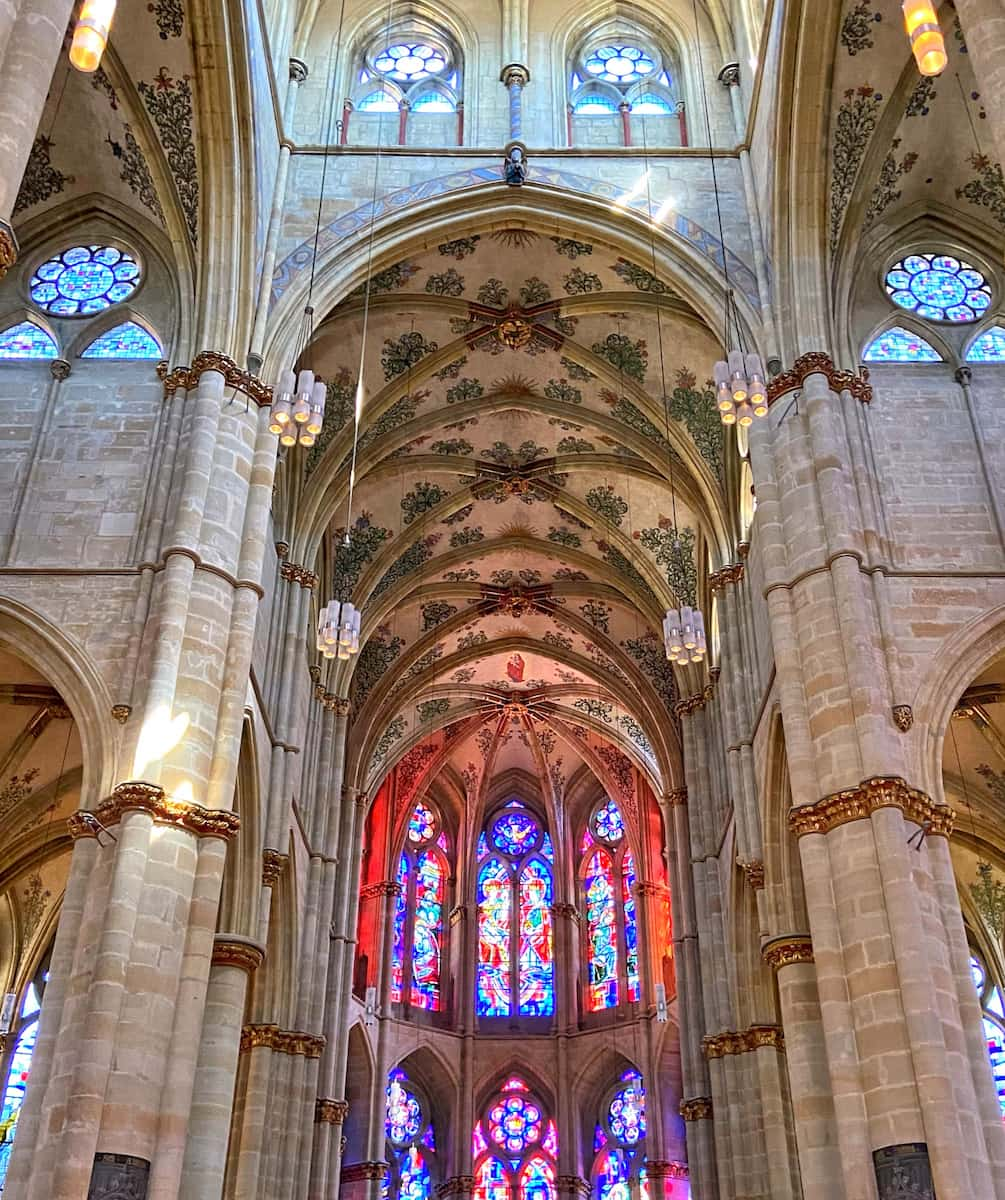
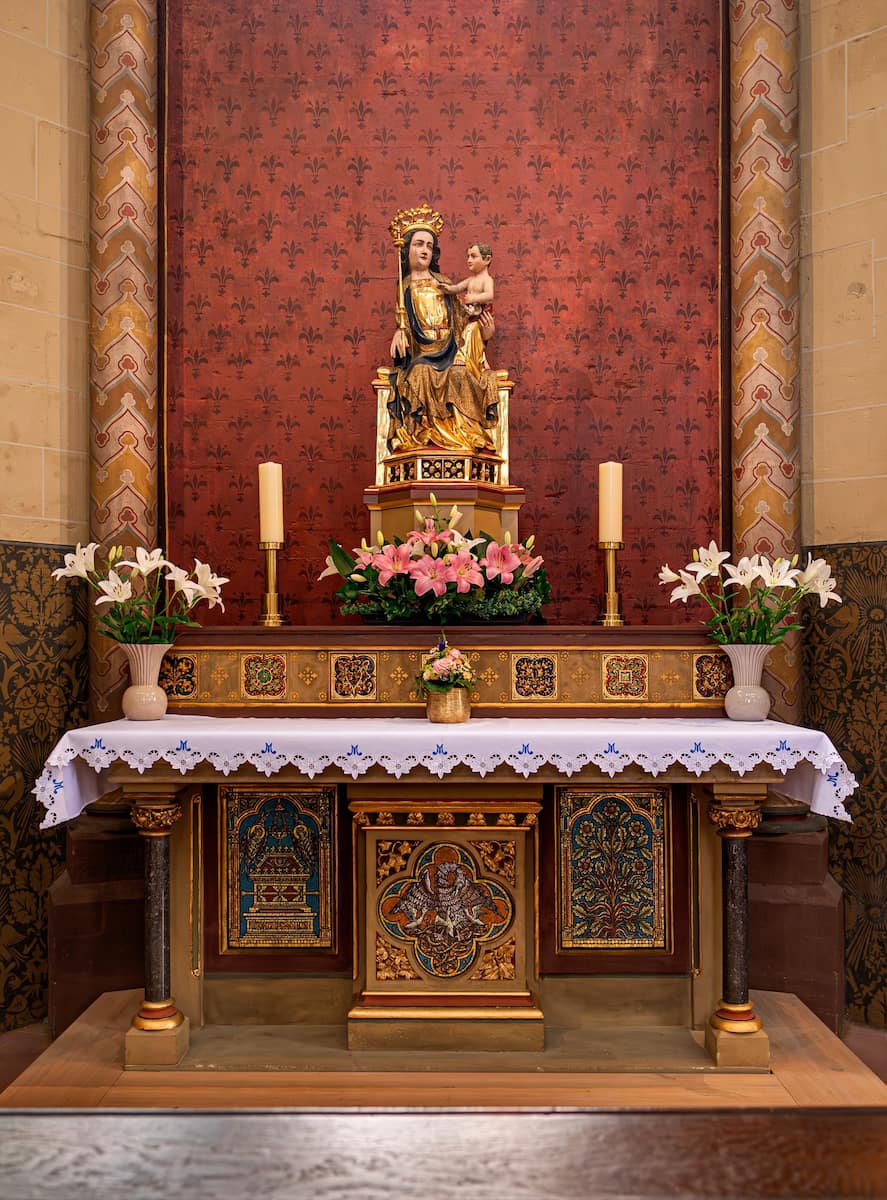
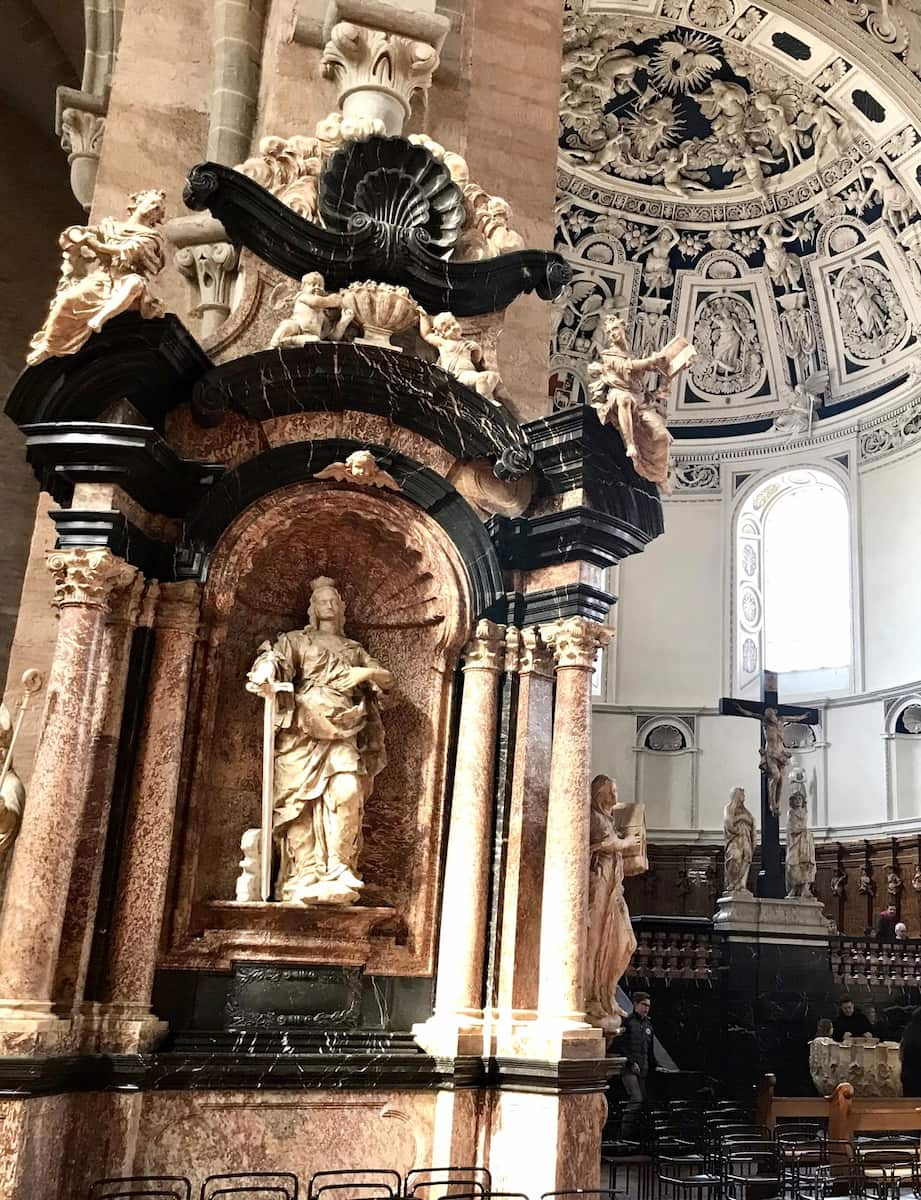
Artistic Details. The medieval stained glass windows create a mesmerizing light show on sunny mornings. My favorite feature is the “Golden Portal” with its intricate stone carvings.
Peaceful Gardens. The church’s cloister garden offers a tranquil escape from tourist crowds. In spring, the medieval herb garden blooms with authentic medieval plant varieties.
| Visiting Hours | Notes |
|---|---|
| 10:00-17:00 | Main church |
| 11:00-16:00 | Cloister |
| Closed | During services |
Musical Experience. Time your visit with the weekly organ concerts (Thursdays at 15:00). The acoustics are spectacular, and it’s completely free.
Preservation Insight. Watch the ongoing restoration work through special viewing windows. Conservators often work on-site, providing fascinating insights into medieval construction techniques.
Cultural Context. Look for the “Madonna of Trier” statue – it’s one of the finest examples of 13th-century German sculpture. The gentle expression and flowing robes show remarkable craftsmanship.
Practical Note. While entry is free, I recommend the guided tour (€6) available in English at 14:00 daily. The guide reveals hidden symbols and architectural details you might otherwise miss.
2. Spielzeugmuseum (Toy Museum)
Nostalgic Journey. Tucked away in a charming medieval building, this delightful museum houses an impressive collection spanning three centuries of toy-making. I was amazed to find rare mechanical toys still in working condition.
Interactive Zones. Unlike typical museums, here you can actually play with some exhibits. My favorite area is the vintage train display where you can operate miniature railways from the 1920s.
| Exhibition Areas | Highlights |
|---|---|
| Ground Floor | Mechanical toys |
| First Floor | Dolls & dollhouses |
| Second Floor | Model trains |
Special Features. The museum offers hands-on workshops where you can:
- Create traditional wooden toys
- Learn puppet-making techniques
- Try mechanical toy restoration
Budget Tip. Visit on the first Sunday of each month for half-price admission (€3 instead of €6).
3. Mariensäule Viewpoint
Panoramic Discovery. After a 20-minute hike through peaceful vineyards, I reached what I consider Trier’s best-kept secret. The Mariensäule offers a breathtaking 360-degree view of the city and Moselle Valley.
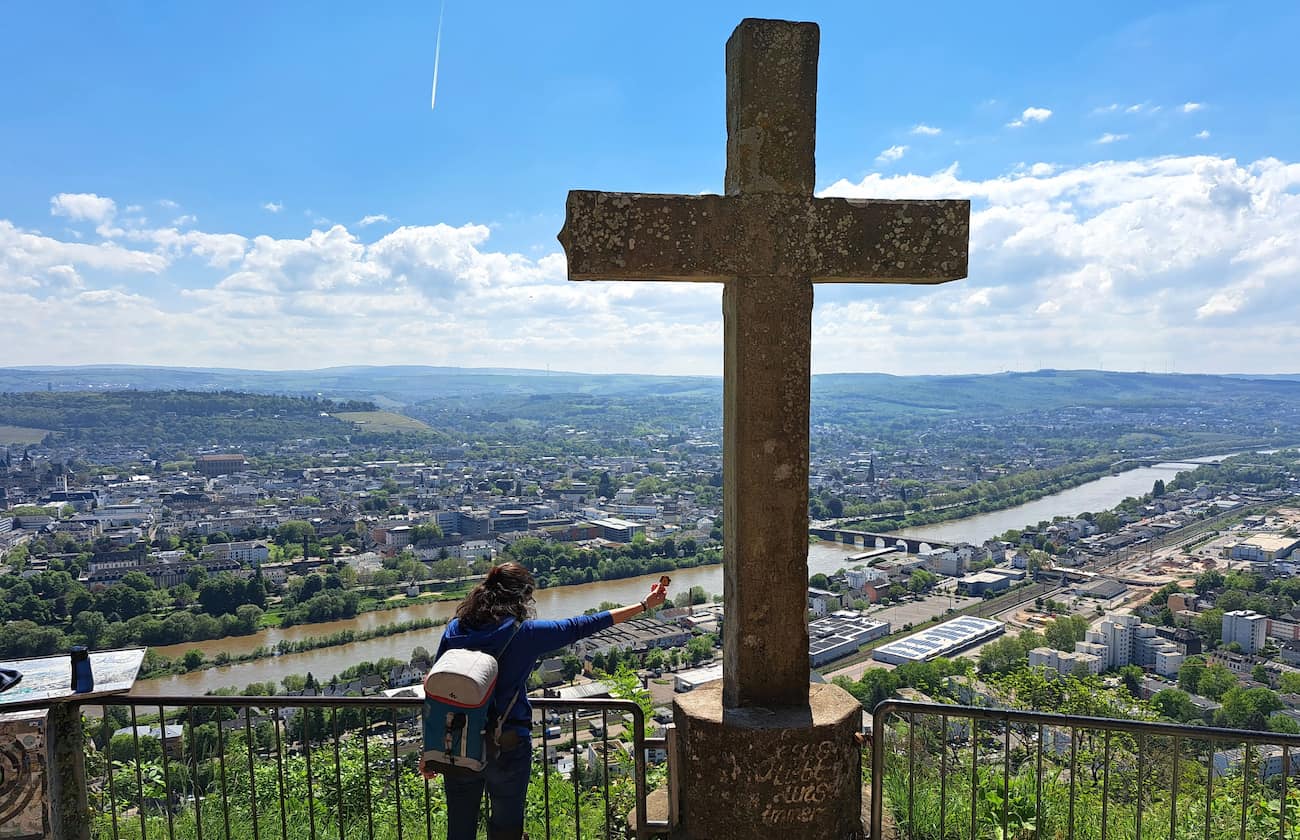
Trail Experience. The path winds through working vineyards, offering a chance to see wine-growing up close. I recommend wearing comfortable shoes – the trail can be steep in places.
Photography Paradise. The viewpoint provides unmatched photo opportunities:
- Morning: Catch the city emerging from mist
- Afternoon: Perfect lighting for vineyard shots
- Evening: Spectacular sunset over the Moselle
Seasonal Magic. Each season offers a unique perspective:
| Season | Highlight |
|---|---|
| Spring | Blooming vineyards |
| Summer | Clear valley views |
| Autumn | Golden foliage |
| Winter | Snow-covered panorama |
Local Connection. Chat with vineyard workers during harvest season (September-October). They often share fascinating insights about wine-making traditions.
Practical Pointers. Bring:
- Water bottle (no shops nearby)
- Light jacket (it’s windy at the top)
- Camera (wide-angle lens recommended)
Timing Tips. Arrive 30 minutes before sunset for the most dramatic views. The golden hour transforms the valley into a photographer’s dream.
Safety Note. The path can be slippery after rain. I suggest downloading the trail map beforehand as mobile coverage can be spotty.
Cultural Context. The Mariensäule (Mary’s Column) itself dates from 1859. Look for the ancient vineyard markers – some are over 200 years old and tell stories of Trier’s wine-making heritage.
Day Trips from Trier
1. Konz, Igel, and Nennig
Cultural Heritage. Just 8 kilometers southwest of Trier, Konz sits at the picturesque junction of the Saar and Moselle rivers. The town’s crown jewel is the Roscheider Hof, an open-air museum showcasing traditional German culture and rural life.
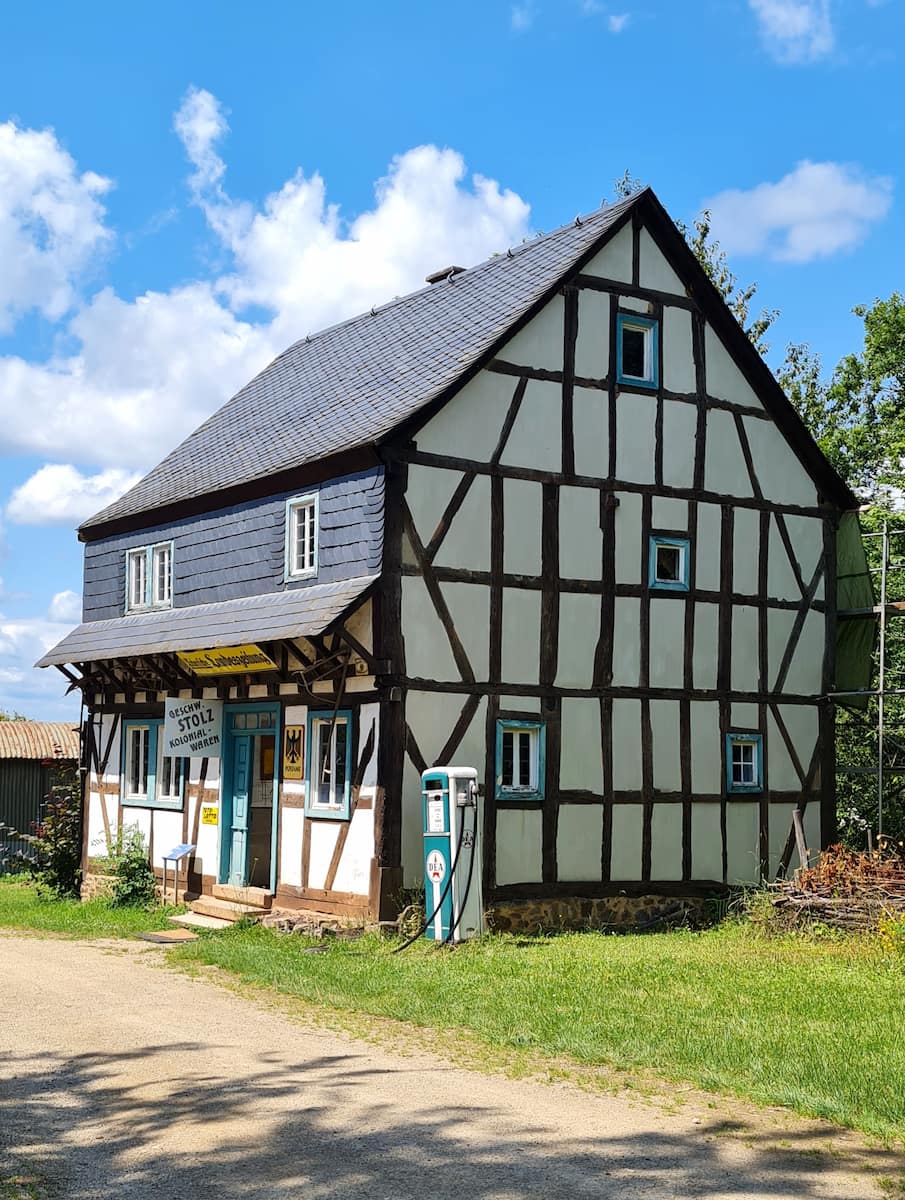
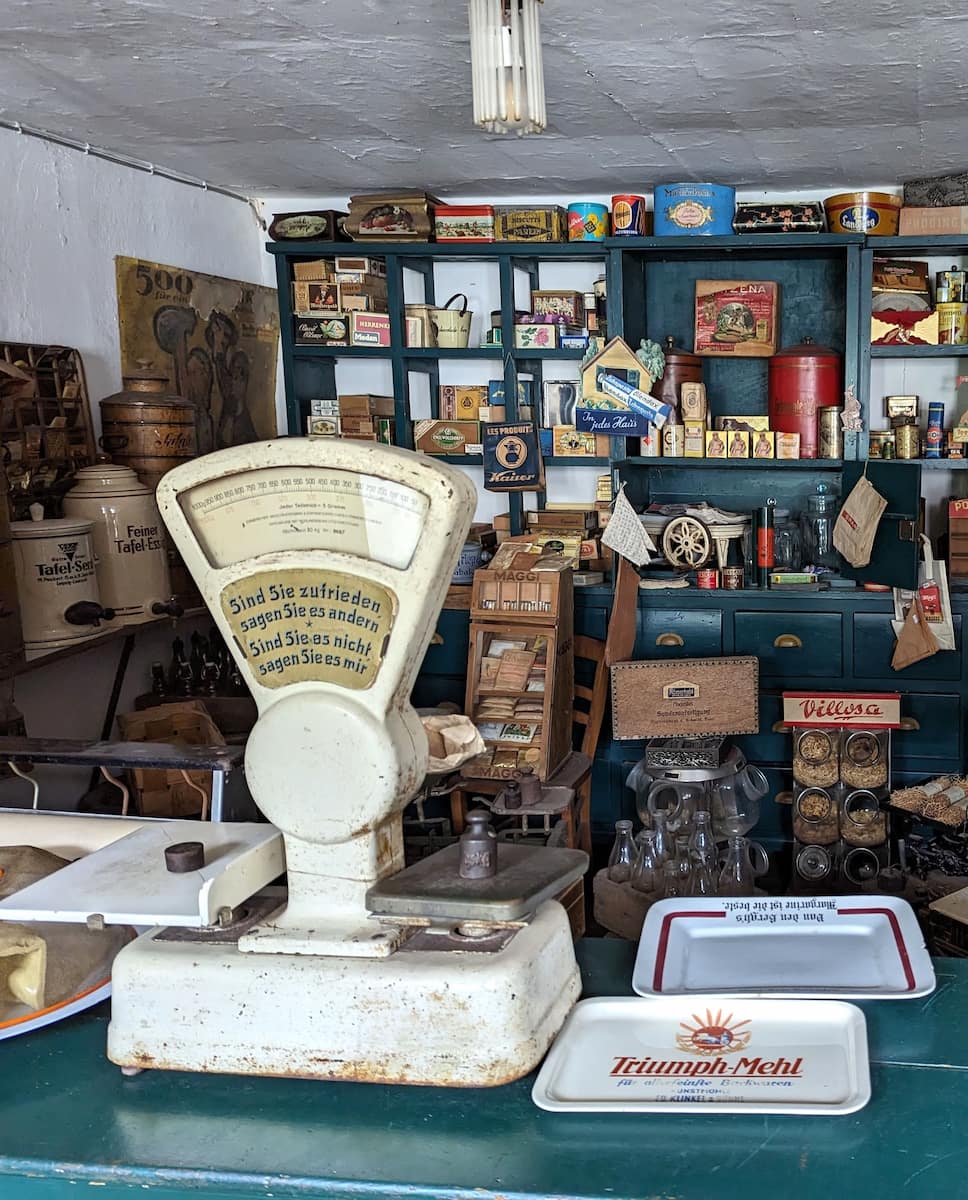
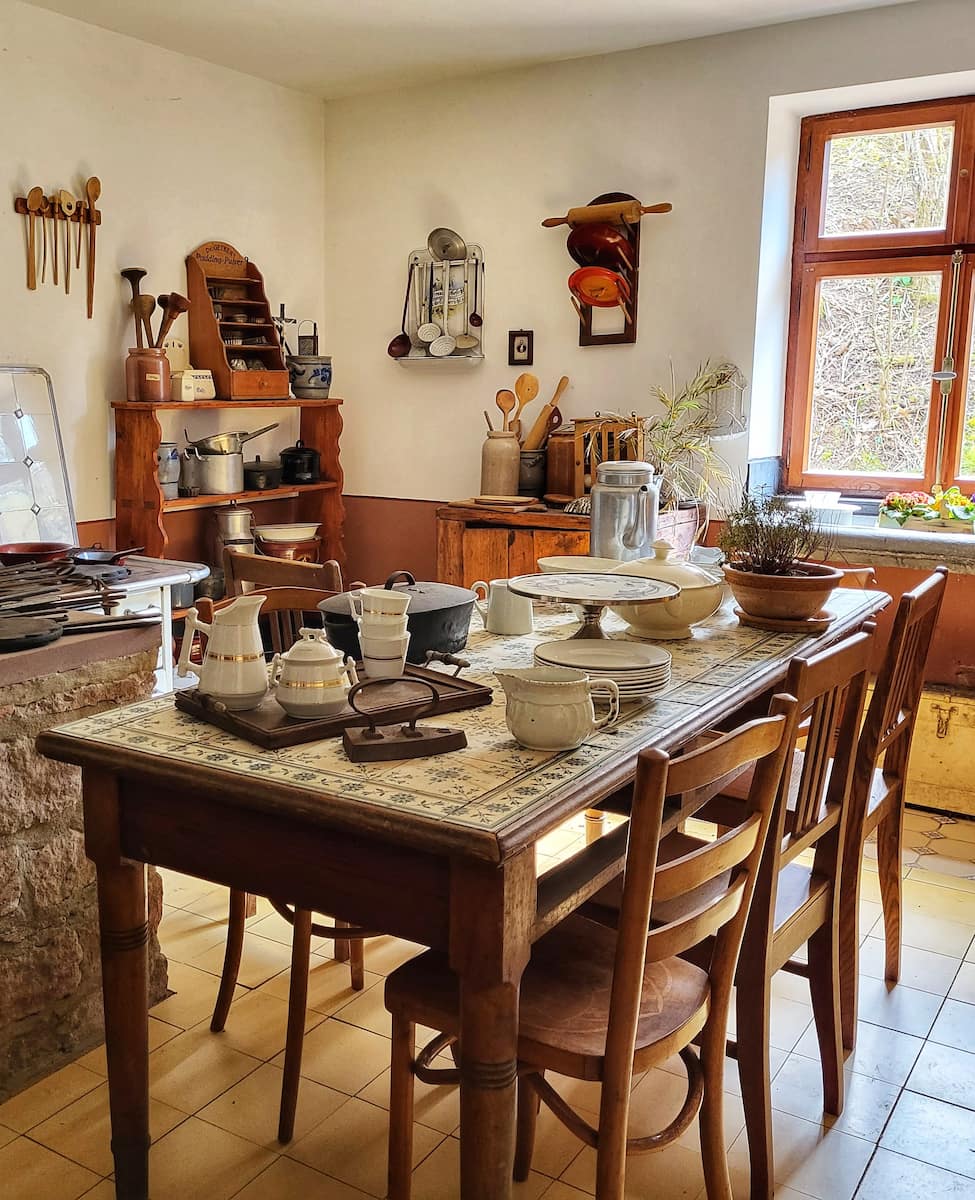
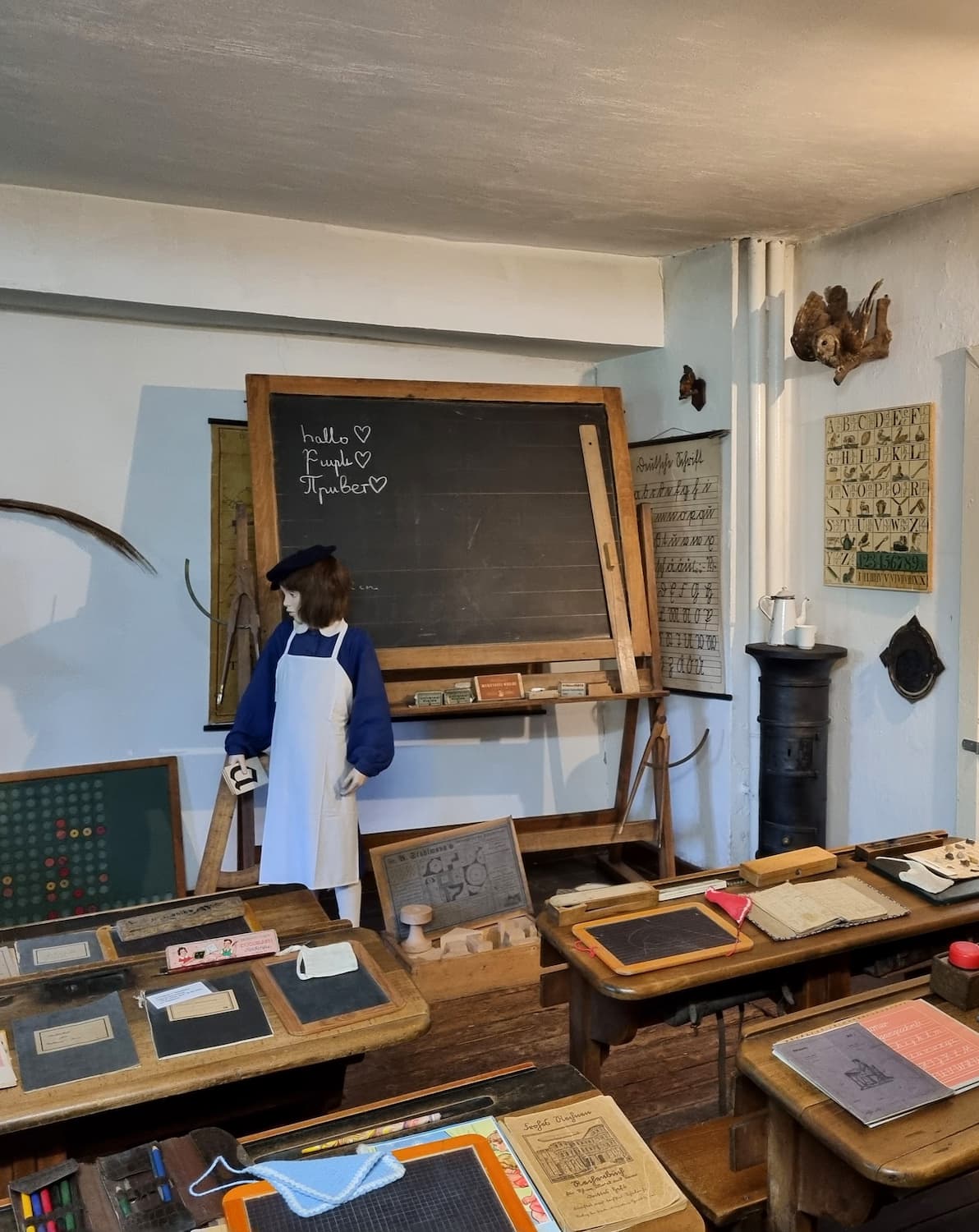
Historical Landmark. In the charming village of Igel, one kilometer south of Konz, the impressive Igel Column stands 30 meters tall. This 3rd-century funerary monument features intricate carvings commemorating a wealthy Gallo-Roman family.
Roman Legacy. Nennig, located 40 kilometers southwest of Trier, houses remarkable Roman villa remains discovered in 1852. The site’s highlight is a spectacular mosaic floor measuring 10 by 16 meters – one of the largest and most beautiful examples north of the Alps.
2. Moselle Valley Vineyards
Wine Heritage. The Moselle region, though not Germany’s largest wine area at 9,000 hectares, holds the distinction of being the country’s oldest wine region. The steep riverbank slopes create ideal conditions for growing world-renowned wines.
Local Experience. The Ruwer Valley outside Trier offers an authentic wine experience with:
- Traditional wineries nestled in vineyards
- Wine cellar tours and tastings
- Scenic cycling routes through vine-covered hills
| Wine Region Features | Highlights |
|---|---|
| Famous Vineyards | Zeltinger Himmelreich, Schlossberg, Sonnenuhr |
| Main Grape Variety | Riesling |
| Best Tasting Season | September-October (Harvest) |
Seasonal Activities. The valley comes alive during harvest season with:
- Wine festivals celebrating local traditions
- Guided vineyard tours
- Covered wagon rides through the vineyards
- Educational wine trails offering panoramic valley views
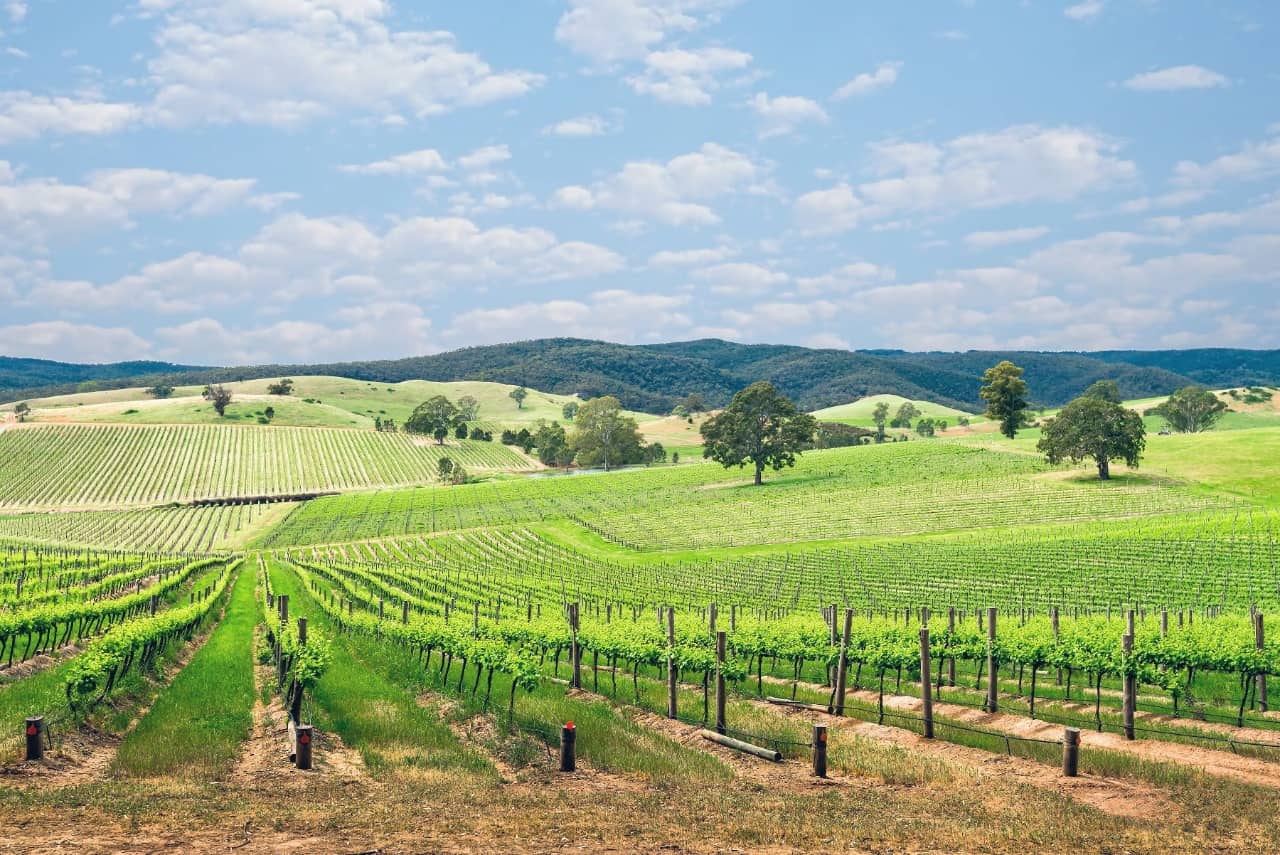
Local Tip. Visit the Trier suburb of Olewig, where numerous family-run wineries welcome visitors for cellar tours and tastings of their signature Rieslings and historic Elbling varietals.
⭐ Best tour
- For the love of Riesling - Mosel Wine tour - Trier – Embark on a wine lover’s journey through the Moselle Valley, tasting exquisite Rieslings and learning about the region’s winemaking traditions.
Practical Tips for Visiting Trier
1. Best Time to Visit Trier
Seasonal Magic. My favorite time to explore Trier is during the shoulder seasons. Spring brings blooming gardens around the Cathedral, while autumn paints the Moselle Valley in golden hues.
Festival Timing. The city comes alive during the Altstadtfest in June, transforming medieval squares into vibrant celebration spaces. December’s Christmas market creates a magical atmosphere around Hauptmarkt.
Weather Guide. Summer offers pleasant temperatures around 24°C (75°F), perfect for outdoor exploration. Winter can be chilly but brings unique charm with fewer tourists.
Weather Patterns:
- Summer (June-August): Comfortably cool with temperatures around 75°F (24°C)
- Spring: Moderate temperatures between 46-69°F (8-20°C)
- Fall: Temperatures range from 40-68°F (4-20°C)
- Winter: Too cold for comfortable sightseeing, averaging 36-46°F (2-8°C)
2. Where to Stay in Trier
City Center Experience. The heart of Trier pulses with history. Living near Hauptmarkt means waking up to cathedral bells and morning market bustle. Perfect for first-time visitors wanting to maximize sightseeing time.
Olewig Charm. This wine village-turned-suburb captured my heart with its traditional atmosphere. Staying here means peaceful evenings among vineyards while remaining just a short bus ride from central attractions.
Riverside Living. The Moselufer area offers stunning river views and walking paths. I love watching river cruises glide by while enjoying morning coffee at riverside cafes.
South Side Story. Trier South combines convenience with local flavor. The area around the train station provides excellent transport links while maintaining an authentic neighborhood feel.
3. Where to Eat in Trier
Morning Flavors. Start your day at Hauptmarkt’s cafes. Fresh pretzels and local pastries pair perfectly with rich German coffee. My morning favorite is the traditional Kartoffelkuchen (potato cake) from market stalls.
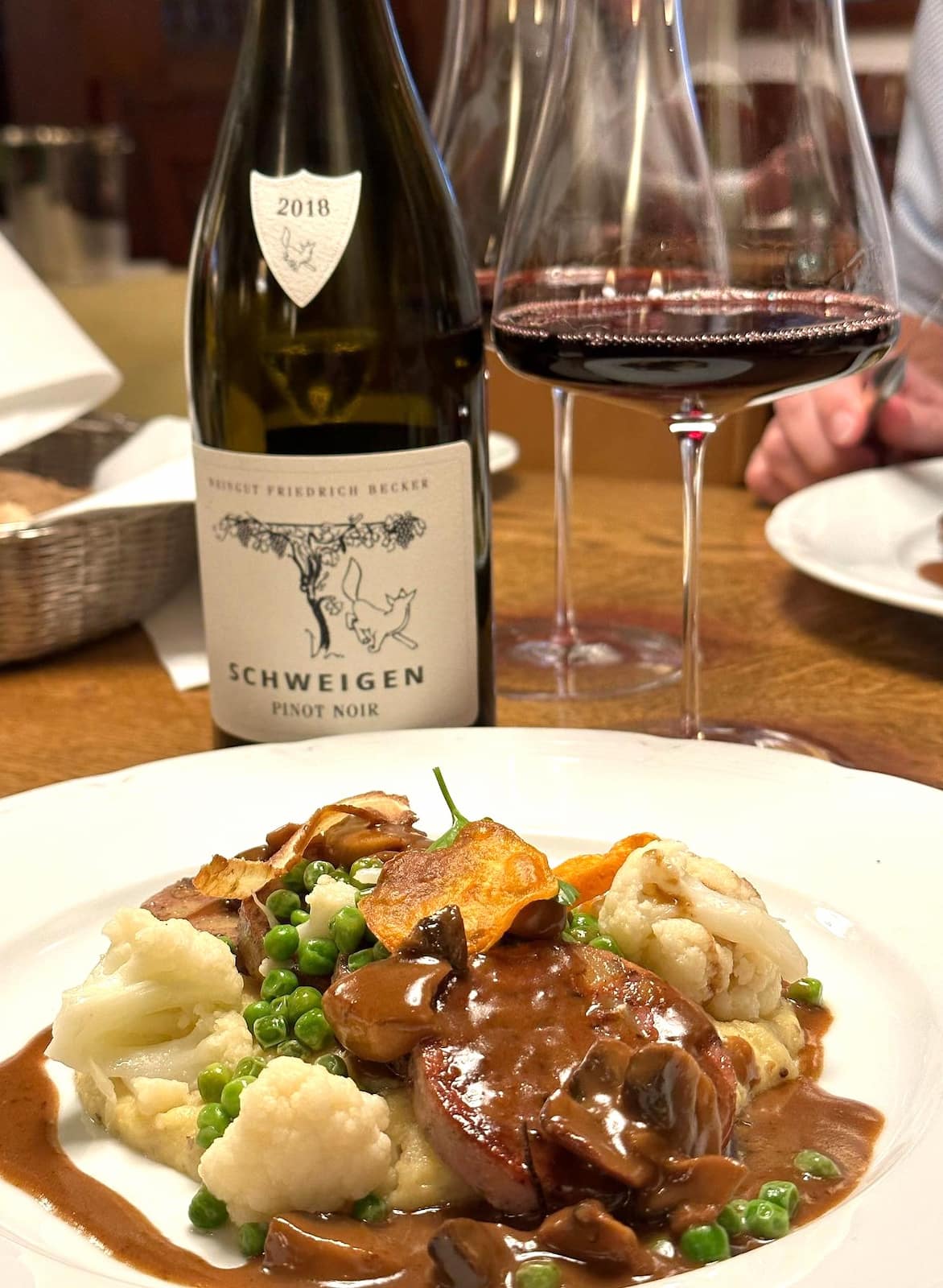
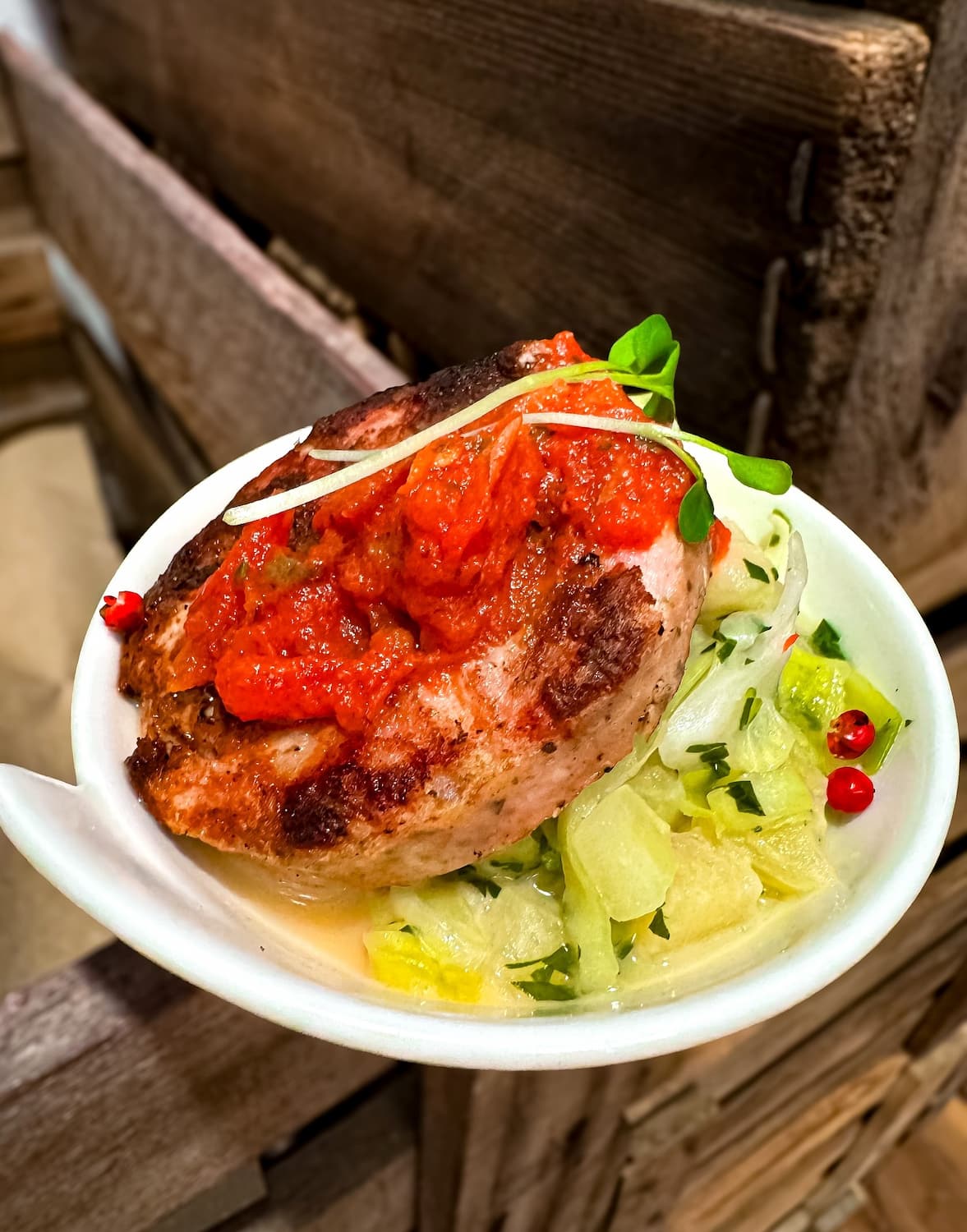
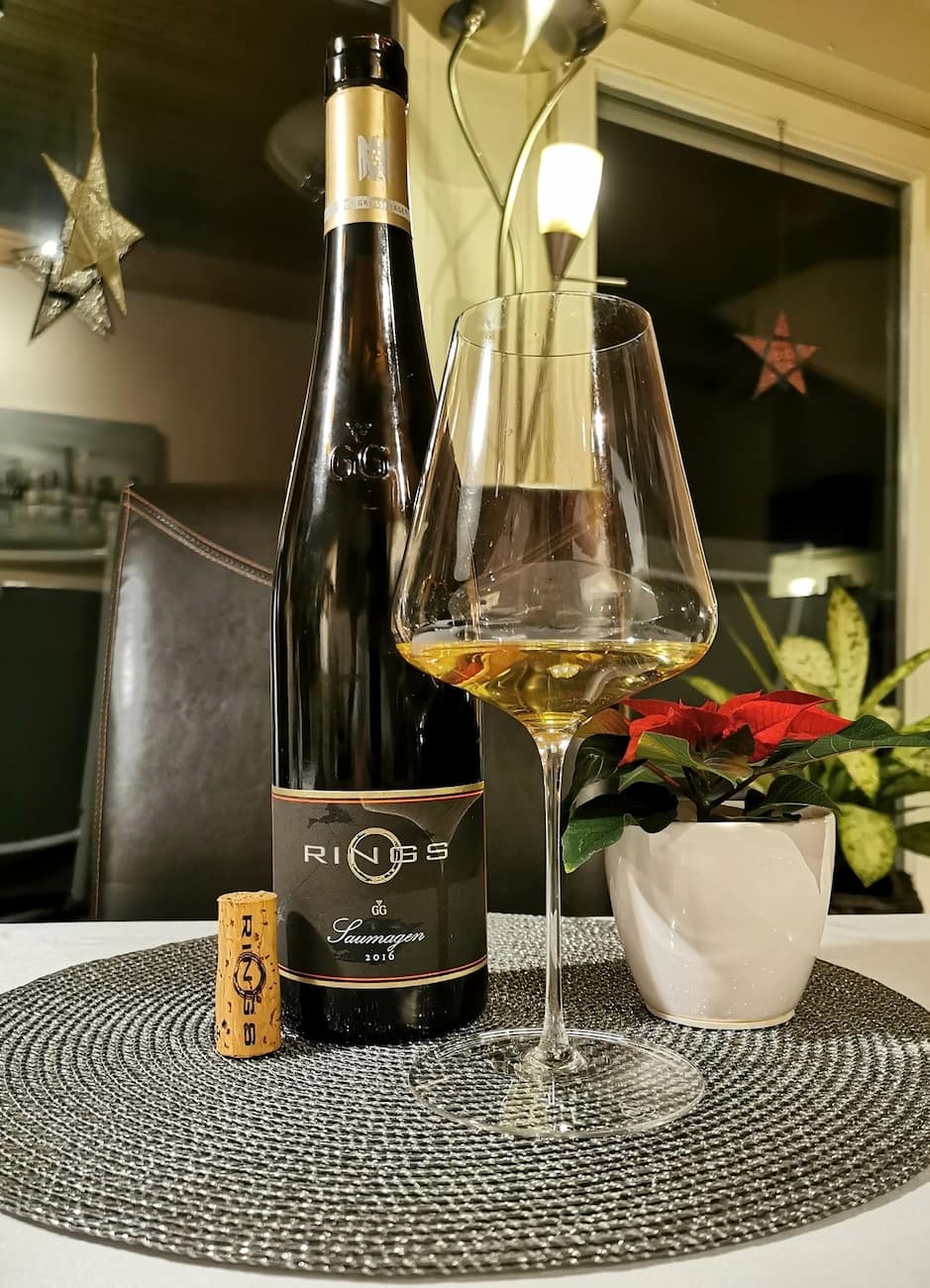
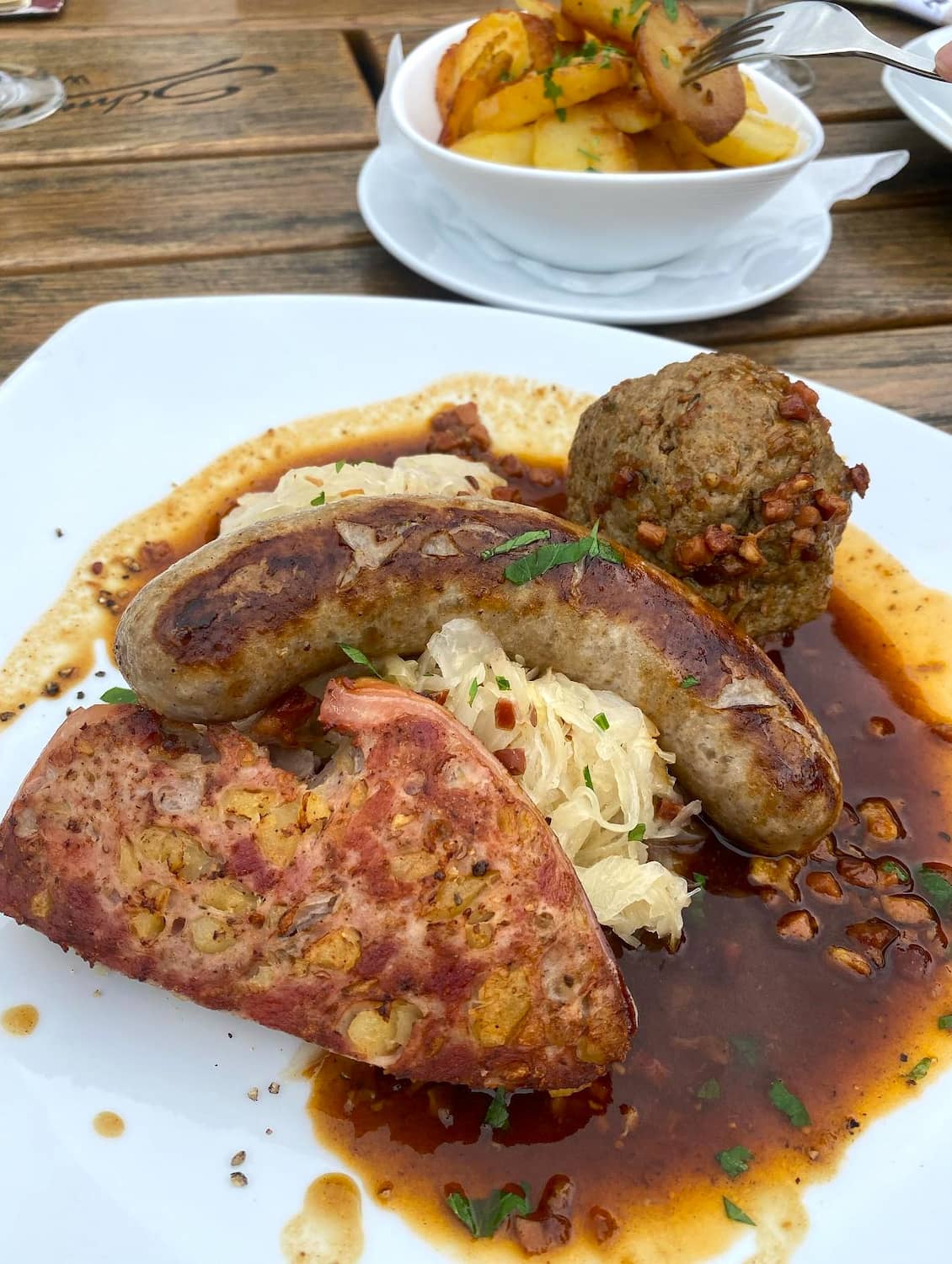
Traditional Tastes. For authentic regional cuisine, venture into the medieval lanes near the Cathedral. Here, centuries-old restaurants serve Saumagen (stuffed pig stomach) and local Riesling wines.
| Meal Type | Price Range (€) | Best Area |
|---|---|---|
| Breakfast | 5-12 | Hauptmarkt |
| Lunch | 12-20 | Old Town |
| Dinner | 15-40 | Olewig |
Evening Dining. The wine taverns of Olewig offer the most authentic dining experience. Here, local vintners serve their wines alongside seasonal dishes made from regional ingredients.
Sweet Endings. Don’t miss trying Trier’s famous Printen (spiced cookies) and wine truffles from local confectioners near Porta Nigra.
Suggested Itineraries for Trier
One-Day Itinerary
Morning Start. Begin your day at 9:00 AM at Porta Nigra, Trier’s iconic Roman gate. Spend about an hour exploring its impressive galleries and learning about its role in the city’s ancient defense system.
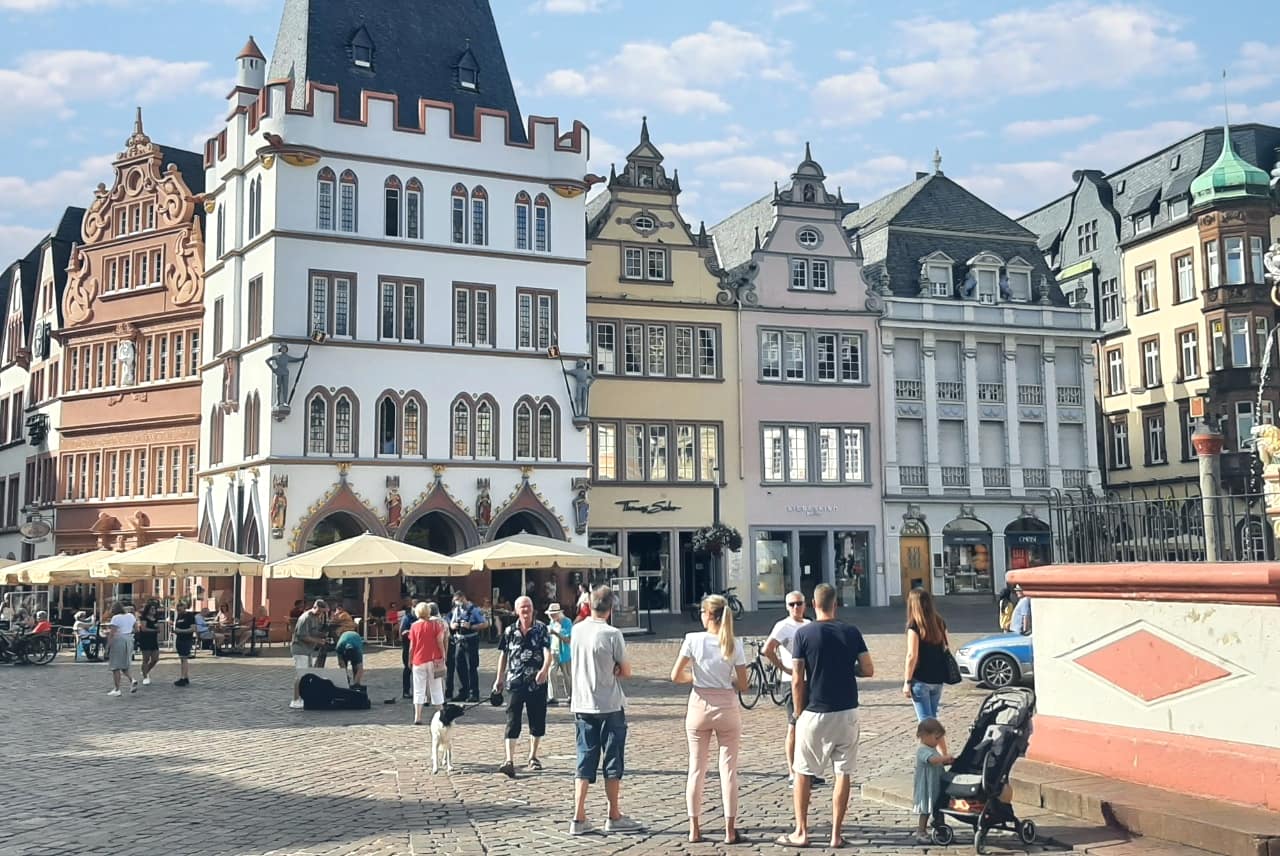
Market Experience. By 10:30 AM, head to the bustling Hauptmarkt, Trier’s medieval market square. Grab a fresh pretzel or pastry from a local vendor and soak in the vibrant atmosphere while admiring the colorful facades of historic buildings.
Cathedral Visit. Around 11:00 AM, make your way to Trier Cathedral (Trierer Dom), just a short walk from Hauptmarkt. Take time to explore its Romanesque architecture and visit the treasury, home to sacred relics like the Holy Robe.
Lunch Break. At 12:30 PM, enjoy a leisurely lunch at one of the nearby restaurants or cafes. Try a local specialty like Trierer Bratwurst or Kartoffelkuchen, paired with a glass of Moselle wine.
Afternoon Exploration. At 2:00 PM, visit the Imperial Baths (Kaiserthermen), one of the largest Roman bath complexes in Europe. Afterward, head to Karl Marx House to learn about the life and legacy of Trier’s most famous resident.
Evening Wine Tasting. Wrap up your day with an evening wine-tasting session in Olewig or at a wine bar near Hauptmarkt. Sample Riesling and Elbling wines while enjoying views of the Moselle River as the sun sets.
| Time | Activity | Duration |
|---|---|---|
| 09:00-10:00 | Porta Nigra | 1 hour |
| 10:30-12:00 | Hauptmarkt & Cathedral Complex | 1.5 hours |
| 12:30-13:30 | Lunch Break | 1 hour |
| 14:00-16:30 | Imperial Baths & Karl Marx House | 2.5 hours |
| 17:00-19:00 | Evening Wine Tasting | 2 hours |
❓ FAQ about Trips to Trier
What are the main attractions in Trier?
Trier is home to several UNESCO World Heritage Sites, including the Porta Nigra, the largest Roman city gate north of the Alps. Other highlights include the Cathedral, the Basilica of Constantine, and the Trier Amphitheater.
Is the Electoral Palace worth a visit?
Yes, the Electoral Palace is a must-see for its stunning Rococo architecture and beautifully landscaped palace gardens. It’s located next to the Basilica of Constantine and offers a glimpse into Trier’s aristocratic history.
What can I see at the City Museum Simeonstift Trier?
The City Museum Simeonstift showcases over 900 artifacts, including sculptures, textiles, and paintings from Trier’s medieval to modern history. It’s a great place to learn about the city’s cultural evolution and Roman history.
What makes the Basilica of Constantine unique?
Built by Emperor Constantine in the 4th century, this basilica features the largest intact hall from antiquity. Today, it serves as a Protestant church and is part of Trier’s UNESCO World Heritage Sites.
Can I visit Roman ruins in Trier?
Yes, Trier boasts some of the best-preserved Roman ruins in Germany, including the Imperial Baths, Roman Bridge, and Porta Nigra. These sites date back almost 2,000 years and are all within walking distance in the city center.
What is special about the Cathedral of Trier?
The Cathedral is the country’s oldest cathedral and dates back to Roman times. It houses sacred relics like the Holy Tunic and features Romanesque architecture blended with later Gothic additions.
Is there anything to do around Trier?
The Moselle Valley near Trier offers scenic vineyards where you can enjoy wine tastings or bike along the Moselle River. Additionally, Luxembourg is just a short drive away for an easy day trip.
What can I expect at the Trier Amphitheater?
The Trier Amphitheater dates back to the 2nd century and could hold up to 20,000 spectators during gladiatorial contests. Today, it hosts reenactments and performances that bring Roman history to life.
How can I explore Trier’s history in one day?
Start with Porta Nigra, then visit the Cathedral and Basilica of Constantine before heading to the Imperial Baths. End your day with a stroll through Hauptmarkt or a wine tasting in Olewig.
When is the best time to visit Trier?
The best time to visit Trier is from May to September when temperatures are mild and attractions like the palace gardens are in full bloom. Spring and autumn also offer fewer crowds and pleasant weather for exploring Roman sites.
